
creating futures research
2016
report

research report 2016
1 contents INTRODUCTION From the Vice-chancellor 2 From the Deputy Vice-chancellor 8 FROm The DIReCTORs research Directorate 12 centre for postgraduate studies 14 technology transfer & Industrial Linkages 16 cput research Day 19 Dhet publications audit 20 National research Foundation 21 FaCUlTIes Faculty of applied sciences 23 Faculty of Business & Management sciences 39 Faculty of education 47 Faculty of engineering 57 Faculty of health & Wellness sciences 83 Faculty of Informatics & Design 91 UNITs aND CeNTRes centre for Innovative educational technology 98 centre for postgraduate studies 101 centre for Water supply & sanitation research 102 cput Libraries 105 Institutional planning 107 Fundani centre for higher education Development 108 hIV/aids unit 110 Institute of Biomedical & Microbial Biotechnology 112 student counselling 118
the 2016 annual research report presents an opportunity to share with the university community, relevant stakeholders, partners and networks across the globe our performance in the research and innovation (r&I) space. the results clearly indicate that research is growing incrementally at the cape peninsula university of technology. since the implementation of the research technology & Innovation Blueprint, we have seen a renewed phase in r&I at cput, which aims to build on our strengths through the following seven carefully identified focus areas:
ForeWorD BY the VIce-chanceLLor: Dr prins nevhutalu
• Bio-economy and biotechnology
• Space science and technology
• Energy
• Climate change and environment
• Human and social dynamics, including issues related to service delivery
• Economic growth and international competitiveness
• Design for sustainability
a further unique feature of research at cput is the incorporation of an element of research uptake (ru) and utilisation. Being a university of technology that thrives on applied research, we strategically foster a climate of ru, and 2016 was not an exception as the results indicate. the university’s culture and strategic thrusts incorporate ru and support it at an institutional level. some of the mechanisms that we adopted include but are not limited to:
• Integration of the need to support RU activity in the mission and vision strategies
• Integration of RU goals into research strategy and policies
• Awareness campaigns for RU
• Culture change and encouragement of researcher engagement by means of incentives such as promotion and recruitment criteria, and capacity development
the fact that cput is strong in the scholarship of work-integrated learning and thus was awarded two research chairs is indicative of the fact that it still makes perfect sense to drive ru.
In 2016, cput was a coordinator of a number of erasmus Mundus actions. these actions were in support of our staff development initiatives and continued in 2016 with the full support of the executive Management with a view to having a large number of

research report 2016 2
our staff with doctoral qualifications in accord with the demands of the National Development plan. Further, 2016 was a very successful year as our internationalisation strategy was completed and implemented with aplomb. our international partnerships and networks generally cover a range of activities, such as student exchanges, academic and administrative staff exchanges, research cooperation,
and developed from the merger of several former technikons. the recommendations of the review will be implemented to strengthen ties with the programme’s affiliated French institutions.
cput continued to work with the south african National space agency to assist in the establishment of the pan african university Institute for space sciences. after a careful audit, we were recommended as a hub with eight other institutions as nodes for this initiative. south africa will be: a primary user of space-based products and services, a thriving space nation, and an important contributor to the global space science. this buttresses our focus area, space science and technology.
researchers (emerging, mid-career and established) and the support units are duly acknowledged.
as an institution, we are indebted to our stakeholders, both internal and external, for their unwavering support. We are especially grateful to the Department of science and technology, the National research Foundation, the Department of trade and Industry, the Department of higher education and training and many international partners and networks for their support in 2016. I request all our friends to join us in putting our shoulders to the wheel in our research and innovation efforts as we continue our 10-year odyssey towards becoming a great univeristy of technology –creating futures!
I therefore present cput’s 2016 research report.
researcher exchange, benchmarking, and delivery of transnational education. they also involve joint bids for international projects, joint curriculum development, joint or double academic programmes, shadowing programmes, short course programmes, developmental projects in a third world country and relationships with the private sector. For these collaborations to be successful, it is critical that the office of strategic Initiatives & partnerships provides a supportive and nurturing role.
the NrF requested a review of the activities and outputs of the French–south africa Institute of technology (F’satI) programme 2008–2015, which was successful. this institute is unique in south africa,
the 2016 Dhet publication units have been especially encouraging as we have seen a massive increase exceeding the 2015 outputs. publication in journals is widely accepted as the most appropriate and speedy form of communicating novel research findings. cput’s 2016 research output reflects over 70% of journal publications in international indices. this is important for exposure as our researchers benefit from a global readership.
completing a successful annual report often requires the support of the entire university. Many people contributed to the success of the completion of the annual report. executive Management, faculties,
Enkosi Dankie
Thank you
3
that cpUt is strong in the scholarship of work-integrated learning, and thus was awarded two research chairs, is indicative of the fact that it still makes perfect sense to drive research uptake.
VoorWoorD DeUr DIe VIsIeKanseLIer: Dr prins nevhutalu
Die 2016 Navorsingsverslag bied die geleentheid om ons prestasies wat betref navorsing en innovering te deel met die universiteitsgemeenskap, relevante rolspelers, vennote en netwerke van regoor die wêreld. Die resultate wys duidelik dat navorsing met rasse skrede groei by die Kaapse skiereilandse universiteit vir tegnologie (cput). sedert die implementering van die bloudruk vir Navorsingstegnologie & Innovering het ons ’n vernuwing in hierdie veld beleef, wat ten doel het om ons sterkpunte verder uit te bou deur die volgende noukeurig geïdentifiseerde fokusareas:
• Bio-ekonomie en biotegnologie
• Ruimtewetenskap en -tegnologie
• Energie
• Klimaatsverandering en die omgewing
• Menslike en sosiale dinamika, insluitende kwessies wat verband hou met dienslewering
• Ekonomiese groei en internasionale mededingendheid
• Ontwerp vir volhoubaarheid
’n Verdere unieke eienskap van navorsing by cput is die inkorporering van ’n element van navorsingsaanwending en -gebruik. as ’n universiteit wat presteer op die gebied van toegepaste navorsing, skep ons ’n klimaat van navorsingsaanwending, en soos die resultate toon, was 2016 geen uitsondering nie. Die universiteit se kultuur en strategiese raamwerk inkorporeer navorsingsaanwending en ondersteun dit op institusionele vlak. sommige van die meganismes wat ons geïmplementeer het, sluit onder andere die volgende in:
• Inkorporering van die behoefte om navorsingsaanwending te ondersteun in die universiteit se missie en visie
• Inkorporering van navorsingsaanwending-doelwitte in die navorsingstrategie en -beleid
• Bewusmakingsveldtogte vir navorsingsaanwending
• Verandering van klimaat en aanmoediging van navorserbetrokkenheid d.m.v. aansporings soos bevorderings- en werwingskriteria, asook die ontwikkeling van kapasiteit
Die feit dat cput sterk is wat betref die vakkundigheid van werk-geïntegreerde leer en ook die feit dat daar twee navorsingsleerstoele in hierdie veld aan ons toegeken is, dien as aanduiding dat dit steeds sin maak om navorsingsaanwending te bevorder.
In 2016 het cput opgetree as koördineerder van ’n aantal erasmus Mundus aksies ter ondersteuining van ons personeelontwikkelingsinisiatiewe. hierdie inisiatiewe het in 2016 voortgeduur met die volle ondersteuning van die uitvoerende Bestuur, met die oog daarop om ’n groot aantal personeellede te hê wat doktorsgrade behaal het, in ooreenstemming met die vereistes van die Nasionale ontwikkelingsplan.
Verder was 2016 ’n baie suksesvolle jaar, aangesien ons internasionale strategie voltooi en suksesvol geïmplementeer is. ons internasionale vennootskappe en netwerke dek oor die algemeen ’n hele reeks aktiwiteite, soos die uitruil van studente en ook akademiese en administratiewe personeel,
research report 2016 4
samewerking op die gebied van navorsing, die uitruil van navorsers, die bepaling van standaarde, en die aanbied van transnasionale onderrig. Verder behels dit gesamentlike aansoeke vir internasionale projekte, gesamentlike kurrikulumontwikkeling, gesamentlike of dubbele akademiese programme, skaduprogramme, kortkursusse, ontwikkelingsprojekte in derdewêreldlande en die bou van verhoudings
Die feit dat cpUt sterk is wat betref die vakkundigheid van werk-geïntegreerde leer, en dat daar daarom twee navorsingsleerstoele in hierdie veld aan die universiteit toegeken is, dien as aanduiding daarvan dat dit steeds sin maak om navorsingsaanwending te bevorder.
cput het haar samewerking met die s uida frikaanse Nasionale r uimteagentskap ( sa N sa ) voortgesit ten einde behulpsaam te wees met die stigting van die p an a frika u niversiteite Instituut vir r uimtewetenskappe. Na ’n sorgvuldige oudit is aanbeveel dat cput as middelpunt van werksaamhede optree, met agt ander instellings wat as nodusse meewerk. Daar word voorsien dat s uid- a frika ’n primêre gebruiker van ruimtegebaseerde produkte en dienste gaan word, asook ’n florerende ruimtenasie en ’n belangrike bydraer tot die globale ruimtewetenskap. Dit dien as versterking van ons fokusarea r uimtewetenskap en -tegnologie.
a s instansie is ons dank verskuldig aan ons rolspelers, intern sowel as ekstern, vir hulle volgehoue ondersteuning. o ns is veral dankbaar vir die ondersteuning wat ons in 2016 ontvang het van die Department van Wetenskap en tegnologie, die Nasionale Navorsingstigting, die Departement van h andel en Nywerheid, die Departement van h oër o nderwys en o pleiding, asook baie internasionale vennote en netwerke. e k vra al ons vriende om saam met ons skouer aan die wiel te sit met ons werksaamhede op die gebied van navorsing en innovering soos ons voortgaan op ons reis van tien jaar om van hierdie universiteit ’n uitmuntende universiteit vir tegnologie te maak – saam skep ons die toekoms!
met die privaatsektor. Die sukses van hierdie internasionale projekte kan slegs verseker word met die ondersteuning van die kantoor vir strategiese Inisiatiewe en Vennootskappe.
Die NNs het ’n beoordeling van die aktiwiteite en die uitsette van die Frans–suid-afrikaanse Instituut vir tegnologie (F’satI) se program van 2008–2015 aangevra, en die uitslag hiervan was positief. Die instituut is uniek in suid-afrika aangesien dit ontwikkel is uit die samesmelting van ’n aantal voormalige technikons. Die aanbevelings van die beoordeling sal geïmplementeer word om bande met die program se Franse instellings te versterk.
Die 2016 Dhoo publikasie-eenhede is besonder bemoedigend aangesien daar ’n reusetoename op die syfers van 2015 was. publikasie in vaktydskrifte word wyd gereken as die mees toepaslike en vinnigste manier om nuwe navorsingsbevindinge te kommunikeer. In 2016 is meer as 70% van cput se vaktydskrif-artikels in internasionale indekse aangehaal. Dit is uitstekende blootstelling aangesien ons navorsers baatvind by ’n globale leserskap.
Die saamstel van ’n suksesvolle jaarverslag hang dikwels af van die ondersteuning van die hele universiteit. Baie mense het bygedra tot die suksesvolle voltooiing van hierdie jaarverslag. uitvoerende Bestuur, fakulteite, navorsers (ontluikend, midloopbaan en gevestig) en die ondersteuningseenhede word hiermee bedank vir hulle bydraes.
e k bied hiermee cput se Navorsingsverslag vir 2016 aan.
Thank you
5
Enkosi Dankie
aMaGQaBantshIntshI nGUseKeLa-nGQonYeLa:
Ugq prins nevhutalu
INgxelo yophando yoNyaka ka-2016 idandalazisa ithuba lokwabelana noluntu lweyunivesithi, abaxhasi esisebenzisana nabo, amaqabane ethu kwanothungelwano esisebenzisana nalo kwihlabathi jikelele, ngendlela esiqhube ngayo kummandla wophando nosungulo lwezinto ezintsha. Iziphumo ziveza mhlophe ukuba uphando lukhula ngamandla kwiYunivesithi yobuGcisa yosingasiqithi weKapa (cput). ukusukela mhla kwamiselwa uyilo olusephepheni lobuGcisa bophando nosungulo lwezinto ezintsha, sibone inqanaba lohlaziyeko kuphando nosungulo ecput, kwaye iinjongo zezokuphuhlisa konke okusemandleni ethu, sigxininise kule mimandla isixhenxe ilandelayo ichongwe ngobunono:
• Inzululwazi yophando-nzulu ngemvelo nobugcisa
• Inzululwazi ngomoya ojikeleze umhlaba nobugcisa
• Ezamandla
• Utshintsho lwemozulu nokusingqongileyo
• Utshintsho kuluntu nentlalo, kuquka neemeko
ezinxamnye nokunikezelwa kweenkonzo
• Ukukhula kwezoqoqosho nokhuphiswano
lwamazwe ngamazwe
• Uyilo lokuzinzisa
olunye uphawu olulodwa lophando ecput kukuqukwa kwesiqalo sokwenziwa kophando nokusetyenziswa kwalo. Nanjengoko siyiyunivesithi yobugcisa ezidla ngempumelelo kuphando olusetyenziswayo, sikhuthaza ngobuchule umoya wentsebenziswano wokwenziwa kophando, kwaye nomnyaka ka-2016 awukhange unxaxhe, nanjengoko iziphumo zibonisa.
Isiko nenkuthazo eqiqisiweyo yeyunivesithi ihlala ibandakanya ukwenziwa kophando kwaye oku kuyakhuthazwa kuzo zonke iinkalo zeli ziko. phakathi kweendlela ezininzi esiye sazisebenzisa kweli phulo kukho nezi:
• Ukubandakanya isidingo sokuxhasa intshukumo yokwenziwa kophando kubuchule bomgomo nombono weyunivesithi
• Ukubandakanywa kweenjongo zokwenziwa kophando kubuchule bophando nakwimigaqonkqubo
• Iimpembelelo zokuqondwa kokwenziwa koPhando
• Utshintsho lwemo yomsebenzi nokukhuthazwa kwabaphandi ekuzinikeleni kuphando ngokuthi
bawongwe ngenkuthazo efana nokunyuselwa emsebenzini okanye kusetyenziswe inqobo yokufumana abasebenzi abatsha, nangophuhliso lwezakhono zabaphandi
ubungangamsha becput kwimfundo egxile kumakhondo emisebenzi kwanokuwongwa kwayo ngezihlalo ezibini zophando, kuchaza ukuba kusafanelekile kuqhutyekekwe kungayekwa ngamaphulo axhasa ukwenziwa kophando.
Ngo-2016, icput ibingumlungelelanisi weqela leeNkqubo ze-erasmus Mundus. ezi nkqubo zinika inkxaso kumaphulo okuphuhliswa kwabasebenzi bethu. La maphulo aqhubekeke kakuhle ngo-2016 ekwaxhaswa ngokupheleleyo sisiGqeba soLawulo, oku kusenziwa ngeenjongo zokukhuthaza abasebenzi abaninzi baphumelele izidanga zobuGqirha-lwazi ngokungqamene nezidingo zezicwangciso zophuhliso lwesizwe.
Ngaphezu koko, u-2016 ube ngunyaka onempumelelo encomekayo nanjengoko icebo lethu lokubekwa
research report 2016 6
kwinqanaba lamazwe ngamazwe liye laqukunjelwa
laze lamiselwa ngokuzithemba okukhulu. uthelelwano
nothungelwano lwethu lwamazwe ngamazwe lukholisa
ukuchaphazela uluhlu lwemisebenzi emininzi, kuquka utshintshiselwano ngabafundi, intsebenziswano
kuphando, utshintshiselwano ngabaphandi, ukumiselwa
kweenqobo zomsebenzi ngokubanzi, ukunikezelwa
Ubungangamsha becpUt kwimfundo
egxile kumakhondo emisebenzi, kwanokuwongwa kwayo ngezihlalo ezibini
zophando, kuchaza ukuba kusafanelekile
kuqhutyekekwe kungayekwa ngamaphulo axhasa ukwenziwa kophando.
kwemfundo engenamida, intsebenziswano ekufunweni
kwamaxabiso eeprojekthi zamazwe ngamazwe, intsebenziswano engophuhliso lwekharityhulam, intsebenziswano okanye ukuphathisana ngeenkqubo
zezifundo, iinkqubo zokugqalisela, iinkqubo zezifundo zethutyana, iiprojekthi zophuhliso kwilizwe elisakhulayo
kwanobudlelwane neenkampani zabucala.
La maphulo entsebenziswano aya kuthi ukuze
aphumelele kubekho ukuzinikela okukhulu kwi-ofisi ejongene namaphulo nothelelwano ayilwe ngobuchule, kuzinikela oko kuhambelana nokunikezwa kweenkqubo zenkxaso namaphulo okukhuliswa kwabasebenzi.
uMbutho wophando wesizwe (iNrF ngamafutshane), ucele ukunikwa ucamngco lwemisebenzi neemveliso
zika-2008 ukuya ku-2015 zeZiko lobuGcisa
lentsebenziswano phakathi koMzantsi afrika neFransi, nelibizwa nge- French–south africa Institute of
technology (iF’satI ngamafutshane), sicelo eso siye safezekiswa ngempumelelo. eli liziko elifana
lodwa nelikhethekileyo eMzantsi afrika, nanjengoko livele emva kokuhlanganiswa kwamaziko obugcisa aliqela angaphambili. Kuya kumiselwa iziphakamiso ngokusesikweni nangokufanelekileyo ukuze kuzinziswe kwaye kwenziwe luqilima intsebenziswano yethu namaziko aseFransi angamalungu eli ziko.
I-cput iqhubekekile isebenzisana ne-arhente yeNzululwazi yomoya ojikeleze umhlaba yesizwe soMzantsi afrika eyaziwa njenge- south african National space agency ngeenjongo zokuncedisa
ekumiselweni kwe-pan african university Institute for space sciences. emva kophicotho-zincwadi zemali olucoselelweyo, siye saphakanyiswa
njengeyona ndawo isembindini phakathi kwamanye amaziko asibhozo, nekuza kuhlanganelwa kuyo ngamalungu eli phulo. uMzantsi afrika nguwo oza kuba kwindawo esisiseko ekusetyenzisweni kwemveliso neenkonzo ezinxamnye nokwenzeka kumoya ojikeleze umhlaba, isizwe esinenkqubela-phambili ngokuphathelele kwinzululwazi yomoya ojikeleze umhlaba, kwanoyena mthathi-nxaxheba unegalelo elikhethekileyo kwinzululwazi yehlabathi engomoya ojikeleze umhlaba. oku ke kunika inkxaso kwingxam yethu, iNzululwazi engoMoya ojikeleze umhlaba nobuGcisa.
amanqakwana opapasho luka-2016 abonakalisa
inkuthazo enkulu nanjengoko siqaphele ukukhula
okumandla nokuthe kratya kwimveliso ka-2015. upapasho noshicilelo kumaphepha-ncwadi ophandonzulu lolona lwamkelwa ngokubanzi njengeyona
ndlela ichanekileyo nekhawulezayo yokuvakalisa
iziphumo zophando ezitsha nezingaziwayo. Imveliso yasecput yophando luka-2016 ibonakalisa ukuba
kweli ziko kushicilelwe ngaphaya komyinge wama-
70% amaphepha-ncwadi ophando-nzulu kwizalathiso zamazwe ngamazwe. oku ke kunceda kakhulu ekuvakaliseni udumo lwethu, nanjengoko abaphandi bethu bezuza lukhulu kufundo lwamaphepha-ncwadi abo kwihlabathi jikelele.
ukuqukunjelwa kwengxelo yonyaka eyimpumelelo kumaxa amaninzi kudinga intsebenziswano yeyunivesithi iphela. Baninzi abantu ababe negalelo kwimpumelelo yengxelo yonyaka. IsiGqeba soLawulo, iifakhalthi, abaphandi (abasaqalayo, abasembindini wezifundo zabo kwanoompondo-zihlanjiwe), kwaye namacandelo enkxaso nawo ayabulelwa ngamxhelo-mnye.
Njengeziko, siziva singenakuwuvala umlomo ekubuleleni ngokungazenzisiyo abaxhasi bethu, abangaphakathi nabangaphandle ngaxesha linye, ngenxa yenkxaso yabo engagungqiyo. sibulela ngakumbi kwisebe leNzululwazi nobuGcisa (iDst ngamafutshane), uMbutho wesizwe wophando (iNrF ngamafutshane), isebe lezorhwebo nemisebenzi (iDtI ngamafutshane), isebe lezeMfundo ephakamileyo noQeqesho (iDhet ngamafutshane), kuquka nothungelwano lwethu kwanamahlakani ethu asuka kumazwe ngamazwe, ngenxa yenkxaso yabo kumnyaka ka-2016. Ndicela bonke abahlobo bethu ukuba bazibandakanye nathi ekubhexesheni ngobunye amalinge ethu ophando neenguqulelo, nanjengoko singena kuhambo lwethu olude lweminyaka elishumi, nolujolise ekubeni sibe lelona ziko ligqibeleleyo eliyiYunivesithi yobuGcisa –edala ikamva!
Ngokwenjenje, ndinikezela ngeNgxelo ka-2016 yophando ecput.
Enkosi
Dankie
Thank you
7
the cput 2016 research report provides an overview of the university’s research activities and performance during this period. this performance is against the backdrop of a very challenging academic year for all higher education institutions in south africa and in particular for cput owing to the #FeesMustFall movement. It is therefore a great pleasure to share some of the research highlights of our very dedicated staff and students, who in spite of all the challenges faced in 2016, still continued to produce considerable research output.
FroM the DepUtY VIcechanceLLor: research, technoLoGY InnoVatIon & partnershIps (DVc: rtI&p) Dr chris nhlapo

cput’s rtI Blueprint provides the strategic directives and operational framework for all institutional research and related entities. the aim of the rtI Blueprint is to develop research uptake (ru) in two ways: (1) development of third-stream income by enhancing entrepreneurship opportunities, and (2) increasing research output by providing support mechanisms in terms of capacity building and funding.
the pillars and driving force of the rtI Blueprint are:
• Excellence
• Strategic partnerships
• Unlocking staff and student potential
• Multi- and interdisciplinary RTI focus
the seven focus areas are continually expanded in terms of the development of relevant niche areas. the focus areas are: space science and technology, design for sustainability, human and social dynamics (including service delivery), economic growth and international competitiveness, energy, climate change, and bioeconomy and biotechnology.
the implementation of strategic rtI directives is presented in Figure 1, showing that the research output for 2016 has increased from previous years, although Figure 2 shows a decrease in research funding.
research report 2016 8
For the 2016 period, there has been a 5% increase and 15% increase in journal articles and conference proceedings respectively, compared with 2015, while at the same time, funding has decreased by over 30%. this may be due to an increase in the development of partnerships nationally and internationally and the institutionalisation of the research chair initiative.


It is a great pleasure to share some of the research highlights of our very dedicated staff and students, who in spite of all the challenges faced in 2016, still continued to produce considerable research output.
these mechanisms support the process of early career research development of cput researchers where the appetite for and uptake of research thinking is in process. specifically, the role of the research chairs in capacity building in the selected areas is significant.
as shown in table 1, there are currently seven research chairs in the cput systems, funded through various mechanisms. the main goal of the research chairs initiative is to strengthen and improve the research and innovation capacity of public universities to produce high-quality postgraduate students and r&I outputs.
9
Figure 1: Research output growth in 2016
Figure 2: Research funding decrease
s trategic Initiatives and p artnerships is hosted in the office of the DV c : rt I& p. t he office supports and implements the rt I Blueprint that informs all research activities at cput
a s a university of technology, cput follows a value chain approach leading from research to technology to innovation in the form of ru . t he latter forms a significant part of the cput research derived from our research outputs, that is, ru focuses on the usefulness to and use of research in the environment, including support and development of technological innovations through our technology transfer office.
In its r esearch Blueprint, cput has identified the main drivers of research. Firstly, the Blueprint supports the expansion of the r esearch c hair initiative in the office of the Deputy Vice- c hancellor, r esearch, technology Innovation & p artnerships. r esearch chairs are financed by the D st /N r F, and by cput itself or by outside funding, for example the s ector e ducation and training a uthorities ( seta s). t he r esearch c hairs are supported by, and, from their side, support the research work undertaken by the seven research focus areas of cput. s econdly, through the rt I Blueprint, research areas and research niche areas have been developed that allow for specialisation and support in a managed environment while not excluding new areas of research.

research report 2016 10 Chair title Name Faculty Report on page CPUT Research Chair in Biotechnology prof Wentzel Gelderblom health & Wellness sciences 112 CPUT Research Chair in Literacy Development & Poverty prof rajendra chetty education 53 CPUT Research Chair in Oceans Economy prof Ken Findlay applied sciences 27 ETDP SETA Chair in WorkIntegrated Learning in TVET Colleges prof Joyce Nduna education 55 NRF SARChI Chair in Teacher Education prof Yusuf sayed education 51 NRF SARChI Chair in WorkIntegrated Learning prof chris Winberg education 54 W&R SETA Chair in Wholesale and Retail Leadership prof roger Mason Business & Management sciences 43
Research
Fro M the D I rector o F rt I s trate GI c In I t I at IV es & partnersh I ps ( rt I- s I p ) p rof r ené p ellissier
Chairs at CPUT
In addition to the strong emphasis on ru , cput ’s research follows the quadruple helix principles of linking government, business, universities and people into one expanded ecosystem of open innovationrelated activities and outcomes. t his follows from the value cput places on its national and international partners: individuals, industry, government and higher education. t here is a strong internationalisation drive with most of the international students originating from other a frican countries, while we host exchange students and faculty from our e uropean, North a merican and a sian partnerships.

t hrough the e rasmus Mundus mobility programmes, faculty and students have an opportunity to complete qualifications internationally, while we continue to expand our research partnerships to include B r I cs (Brazil, r ussia, India, c hina and s outh a frica), Japan

and s outh Korea. In this, cput was a signee to the recent s outh a frica–Japan collaboration. Indeed, over the last five years, cput has participated in a number of e rasmus Mundus-funded mobility projects. t he participation was influenced by the need for our staff and students to complete their master’s and doctoral degrees and to build strong partnerships that will augment our own understandings.
t he mobility projects are coordinated by various institutions in e urope and in countries like Belgium, Germany, s pain, s weden, France, etc., covering a large span of subject fields and entities. t he projects
further introduced a reciprocal component which allowed e uropean staff and students to visit s outh a frica. t hey provided a platform for our students to interact with exchange students and for staff to engage and share best practices. When e rasmus p lus was introduced, cput collaborated with the u niversity of a ntwerp, u niversity of Limpopo, u niversity of Venda and u niversity of Fort h are for a training programme that focuses on four streams – mobility toolkit, summer schools, project writing, and internationalisation of the curriculum – all to build capacity in the different universities.
11
CPUT’s quadruple helix innovation ecosystem
CPUT’s international footprint
as the Director: research, it is my great pleasure and privilege to report on the achievements of the research Directorate for 2016. the research Directorate’s mandate is to create an enabling environment for researchers to undertake their research. We have a dedicated and highly motivated team of staff that works across the university and all its campuses to ensure that we deliver on our mandate.
FroM the DIrector: research prof Dina Burger

s ince my previous report, I am confident that we are ushering in the next stage of our development in adapting our existing functions and responsibilities. We are paving the way for accelerated research productivity across the institution in alignment with cput ’s rt I Blueprint s trategy. We have made great strides in playing a more strategic role in directing the research future of our institution while simultaneously rendering support, world-class service and advice to our research community. In our quest to position ourselves as a research-led teaching u o t, we have begun the journey to broaden our research output expectations, and we have improved the minimum research output expectations of our academic staff. t he one-cycle research grants management system has been implemented with great success –optimising our resources and rendering better grants management services to our researchers.
to ensure that the r esearch Directorate plays a more strategic role, it has shifted gear to strategically direct, manage and administer research as a
strategic office within the portfolio of the Deputy Vice- c hancellor: r esearch, technology Innovation & p artnerships, focusing on the following key responsibilities:
• Institutional research policy development, implementation, monitoring and evaluation
• Directs and supports the overall research performance targets of the institution in terms of research outputs, N r F ratings and research funding internally and externally
• Provides a comprehensive suite of research training and capacity development interventions with a focus on coaching and mentoring
• Professional grants management and administration, grants and funding communication services and support, advisory and assurance services and support
• Custodian of various university internal research funds to support research and research development across the institution
• Research financial advisory services, financial
research report 2016 12
processing administration, budget control services and annual audits

• Research management and information, ensuring timely and accurate research analysis, reporting and science communication internally and externally
• Research ethics management and administration
• Annual institutional research outputs review and submission
• Various annual and monthly research reports
• Participation in national and international research forums, associations, professional bodies and foundations, and placing a high premium on strategic partnerships through the cape higher education consortium (chec)
the work of the research Directorate always takes place in close collaboration with the academic community and is in direct alignment with the various research and research-related policies and institutional strategies of the institution.
the work of the research Directorate always takes place in close collaboration with the academic community and is in direct alignment with the various research and research-related policies and institutional strategies of the institution. the research Directorate also works with various external stakeholders and in close collaboration with government departments, industry and communities. Most importantly, the research of the institution as reflected in this report is
done by researchers deeply interested in issues that concern our country and the international community. We contribute to the development agenda of south africa in particular, we find solutions to challenges that face our continent, and we contribute to realworld global challenges with a particular interest in community-inspired research finding its way back to these communities.
We wish to congratulate our researchers for ensuring that we can celebrate our research achievements of 2016 in the knowledge that we are reaching our own research goals, and that we are contributing to the knowledge production of our country, continent, and globally through innovative technologies that can be used to create better lives for all.
My sincere thanks go to my staff in the Directorate for working tirelessly to create and sustain an enabling research environment for our researchers and to help us achieve our research vision. I invite all our readers to join us in celebrating our research achievements of 2016.
13
the centre for postgraduate studies (cpGs) directs all pG education and research at cput the cpGs thus has established processes to offer a seamless service to registered postgraduate students and postdoctoral fellows. the centre manages the administration of postgraduate students and oversees the academic involvement of postdoctoral fellows. the centre also administers the Dst–NrF Internship programme and manages some Btech student bursaries.
FroM the DIrector: centre For postGraDUate stUDIes prof Michael Mcpherson
During 2016, 1 410 master’s students and 234 doctoral students were registered, and 14 interns and 17 postdoctoral fellows were accommodated at cput.
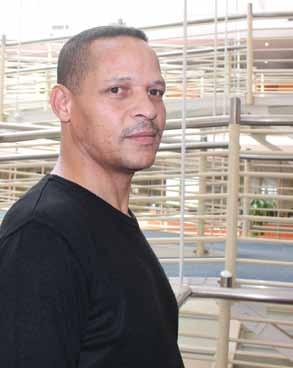
the total number of postgraduate students who graduated in 2016 with a doctoral degree was 23, while 156 graduated with a master’s degree.
aDMINIstratIVe support
higher Degrees committee (hDc): the cpGs coordinates all the activities of the hDc. these include interaction with the faculty research coordinators in respect of hDc documents, preparation of hDc meeting agendas and submission of hDc-approved documents to senate. the hDc is a committee of senate and makes recommendations to senate on matters related to postgraduate studies and student progression.
In 2016 the hDc digital system was in its third year of operation with over 2 000 users. the paper-based
system is being phased out and migrated to a digital system. plans are underway to embark on phase 2 of the project, which will be based on recommendations from users.
Postgraduate students’ forum: the cpGs hosts the postgraduate forum. this forum is open to all cput students and staff who are active in postgraduate research. even though the forum is still at a developmental stage, it enables the cpGs to oversee the personal and academic development of the postgraduate student community as emerging researchers.
Postgraduate bursaries: In 2016, a total of 322 students were supported with bursaries from various sources at a total value of r 17 862 500. the list is given per type of bursary managed.
research report 2016 14
Postdoctoral fellowships: a total of 17 postdoctoral fellows were hosted in 2016 in the various research units of cput at a total cost of r4 000 000.
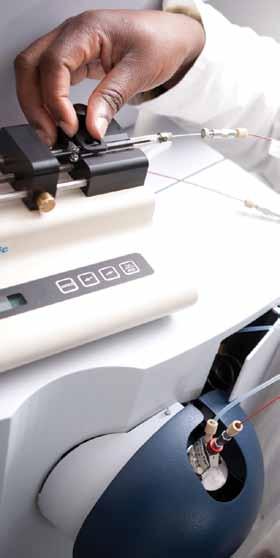
acaDeMIc support
Seminars and workshops: the centre organised several research development workshops and seminars during 2016. postgraduate students (and to some extent academic staff/supervisors) participated actively in these endeavours. the highlights of the events included proposal writing, research design and research methodology, statistical data analysis, article writing, and the use of plagiarism detection software (turnitin).
Postgraduate welcome: Welcome sessions were held per invitation from academic departments. In these sessions presentations were made to postgraduate students on the facilities available to them at cput, with a special focus on briefings on the hDc digital system.
Postgraduate conference: the one-day postgraduate research conference was Not held in November owing to student unrest. No calls for the conference were made in 2016.
Software and research support: During 2016, the cpGs offered software support as well as qualitative and quantitative research support to students and staff. user licences for the software managed by the centre: atLas.ti, IBM spss, statIstIca and turnitin were made available to staff and students. some of the software has been installed on selected desktops in the two research information support centres.
15 postGraDuate stuDeNt BursarIes raNDs NrF Freestanding Btech/honours 450 000 NrF Innovation Btech/honours 5 500 000 NrF scarce skills Btech/honours 3 750 000 NrF Freestanding Master’s 750 000 NrF Innovation Master’s 1 200 000 NrF scarce skills Master’s 560 000 NrF Freestanding Doctoral 550 000 NrF Innovation Doctoral 770 000 NrF sKa 233 000 DaaD 136 000 Mauerberger Foundation Master’s 550 000 Webb trust 30 000 NsF postgraduate (NsFas) 3 383 500 Total 17 862 500
NuMBer FacuLtY totaL stIpeND 7 applied sciences 1 690 000 4 education 1 220 000 4 engineering 610 000 1 health & Wellness sciences 480 000 Total 4 000 000
Dr revel Iyer took up the position of Director of the technology transfer office (tto) in october 2016. the tto strives to build on past successes to ensure greater translation of research results into tangible benefits for the ordinary person.
FroM the DIrector: technoLoGY transFer oFFIce Dr revel Iyer

With a focus on societal and economic impact, we protect and commercialise technologies developed by cput academics and students. the vision of cput’s tto is thus, ‘to provide a technology transfer process that creates value for the people of south africa’.
the tto supports cput’s researchers, staff and students, offering commercial skills and a range of specialist resources to maximise innovation impact.
Income is shared with those involved, according to the Intellectual property rights from publicly Financed research and Development act, No. 51 of 2008, and profits from commercialisation are returned to the university to benefit research and education.
In innovation circles, the measure used is referred to as a technology readiness level (trL). typically a
formal disclosure is provided to the tto at trL2 or 3. a strategy and plan thus need to be created to move the technology forward towards trL9, which
the tto supports cpUt’s researchers, staff and students, offering commercial skills and a range of specialist resources to maximise innovation impact.
represents the stage where a technology is ready for commercialisation. the cput patent portfolio can be described as highly developed with an average
research report 2016 16
technology readiness level of 6.2. this bodes well for successful commercialisation of individual technologies.
wastewater treatment system consisting of highly reactive nanoparticles immobilised in a specialised reactor system for the purpose of treating industrial wastewater. the inverse class-F power amplifier is utilised in modern wireless communication systems. the power amplifier provides an exceptionally high power conversion efficiency. slowredt is an innovation that involves a modified release delivery system of rooibos extract to be used as a nutraceutical or dietary supplement that will deliver specific rooibos polyphenolic constituents immediately as well as over an extended period.
CPUT spread of technologies (patents) over the TRL scale


During 2016, four projects were approved for funding by the technology Innovation agency (tIa). these were ‘high bitrate X-band solution for commercial nanosatellites’ (r496 650), ‘Beneficiation of Agathosma essential oil’ (r467 000), ‘sustainable fodder production technology’ (r499 460), and ‘Fortified milk beverages to supplement the diet’ (r493 336). this increased the cput portfolio of tIa seed projects to 21 with a total of r8 507 805 received from the tIa.
three new patents were filed in 2016. the coortech wastewater reactor is a one-step
scientific insights and academic breakthroughs draw interest and enthusiasm from the research community. however, without a partner willing to commit to bringing the invention to the marketplace, many potential benefits of these breakthroughs are likely to remain in the laboratory. We pride ourselves on working at the pace of businesses, in both licensing cput intellectual property and in creating and sustaining relationships with industry. We strive to make the process as easy as possible, providing a strong foundation for a long-term relationship between cput and industry partners.
17
Concept phase Innovation assessment Protoype development Scaling production Licensing or assignment Commercialisation phase Development and pre-commercialisation phase TRL 1 TRL 2 TRL 3 Basic research TRL 4 Lab validation TRL 5 Early prototype TRL 6 Final prototype TRL 7 Pilot production TRL 9 Market entry Market development TRL 8 Small scale production Applied research Proof of concept Formal disclosure IP protection Technology marketing Inventor benefit share NRF FUNDS, other funders TIA FUNDS, other funders IDC, other funders Techno L ogy Readiness Leve L s (TRL s )
Overview of Technology Readiness Levels
The technology transfer process at CPUT
CPUT invention granted international patent
The industrial Flow-Viz system, an invention by CPUT and Swedish partner SP Technical Research Institute of Sweden, has been approved for a US patent, paving the way for the formation of an international spin-off company. This is another first for the TTO, which plays a key role in promoting innovation at CPUT.
The news comes just a few months after the real-time industrial Flow-Viz system was granted European Patent Office approval, giving CPUT and SP the official rights to file national phase filings in numerous European countries. Patents in other countries have also been sought. Obtaining international patent approval involves defending intricate technical and legal intellectual property office actions; success proves the invention’s novelty, non-obviousness and applicability to industry.
Flow-Viz technology is a highly specialised industrial fluids characterisation system that improves process and quality control within a fluid production line. CPUT inventors, Dr Reinhardt Kotzé and Prof Rainer Haldenwang, based at the Flow Process and Rheology Centre, along with Swedish co-inventor, Dr Johan Wiklund, worked over many months with the TTO to achieve these approvals. Prof Haldenwang says the patents will open doors for commercialisation in regions where they have identified possible business links.
Research work leading to this invention began 15 years ago. The device was first demonstrated here in 2011. Since then, pilot tests have been conducted on a wide range of products, including food and even wastewater. Two systems have already been set up in pilot plants in America and Europe.

‘Flow-Viz is unique in the world for opaque non-Newtonian fluids,’ says Dr Kotzé. ‘Its aim is to replace time-consuming offline measurements in the quality control laboratory with continuous real-time and non-invasive process monitoring of industrial fluids directly in the production line.’
According to the then-director of Technology Transfer and Industrial Linkages, Prof Gary Atkinson-Hope, this is a major achievement for CPUT. ‘These achievements place our forthcoming Flow-Viz company on a very sound footing and we can now move into the commercialisation space with confidence.’
the industrial Flow-Viz system has been approved for a us patent
research report 2016 18
CPUT RESEARCH DAY celebrating research excellence
From publishing research papers to embarking on innovative studies, cput researchers have once again made the institution proud during 2016. their efforts
Research Day 2016 Awards (for activities during 2015)
do not go unnoticed by the university, which planned to celebrate their activities at the annual research Day. however, student unrest prevented the event from
taking place. We still acknowledge and congratulate the following top researchers:
aWaRD ReCIPIeNT FaCUlTY/ UNIT
Platinum prof cG Iwu Business & Management sciences
Gold Dr Bs Ngcamu Business & Management sciences
silver Mr rG Duffett Business & Management sciences
Bronze Dr Io ezeuduji Business & Management sciences
aWaRD ReCIPIeNT FaCUlTY/ UNIT
Platinum prof s pather rtI-sIp
Gold prof Mte Kahn engineering
silver Dr ac de la harpe Business & Management sciences
Bronze prof MK M’rithaa Informatics & Design
Bronze Dr rK tengeh Informatics & Design
aWaRD ReCIPIeNT FaCUlTY/ UNIT
Platinum prof te Matsha health & Wellness sciences
Gold prof W Gelderblom Institute of Biomedical & Microbial Biotechnology
silver Dr JF alberts Institute of Biomedical & Microbial Biotechnology
Bronze prof r haldenwang engineering
19
research
puBLIcatIoN postGraDuate super VIsIoN INDustrY FuNDING
D epart M ent o F h IG her e DU cat I on an D tra I n I n G (D het ) p UBLI cat I ons a UDI t

research report 2016 20 publications count for 2016 submitted to the Dhet on 15 May 2017 uNIts Journal articles (audited) 181.41 Books (submitted) 6.33 chapters in books (submitted) 11.91 conference proceedings (submitted) 38.61 Faculty/unit/centre Books chapters conferences Journals total applied sciences 0.91 25.34 26.25 Business & Management sciences 1.10 3.25 55.86 60.21 education 6.33 2.49 2.86 25.31 36.99 engineering 1.16 26.05 29.05 56.26 health & Wellness sciences 1.00 10.58 11.58 Informatics & Design 4.14 5.43 21.49 31.06 cput Libraries 0.83 0.83 centre for postgraduate studies 0.50 0.50 Fundani cheD 1.00 0.50 6.59 8.09 Institute of Biomedical & Microbial Biotechnology 4.62 4.62 Institutional planning 1.00 1.00 2.00 Total 6.33 11.89 39.00 181.17 238.39 DheT UNITs PeR FaCUlTY 2016
CPUT JOURNal ReseaRCh UNITs
2016
FOR
nat I ona L research F o U n D at I on ( nr F ) rat I n G
the NrF is a national agency for research support and promotion. In addition to funding, human resource development and the provision of research facilities, the NrF annually invites researchers in all academic fields to apply for individual ratings.
B
C established researcher
l
Y promising young researcher
21
ReseaRCheRs IN 2016 researcher Faculty/ unit rating Dr NB Báthori applied sciences Y2 Prof OS Fatoki applied sciences c2 Prof KP Findlay applied sciences c3 Prof A Jacobs applied sciences c3 Prof VA Jideani applied sciences c3 Dr L Kambizi applied sciences Y2 Prof CP Laubscher applied sciences c3 Prof FB Lewu applied sciences c3 Prof AA Mohammed applied sciences c3 Dr VS Somerset applied sciences c3 Prof SEH Davies Business & Management sciences c3 Prof V Naicker Business & Management sciences c3 Prof RB Mason Business & Management sciences c3 Dr MS Taliep Business & Management sciences Y2 Prof M McPherson centre for postgraduate studies c3 Dr I van Zyl centre for e-Learning Y2
NRF-RaTeD
a Leading international researcher
Internationally acclaimed researcher
Late entrant into research
categories
The NRF rating
nat I ona L research F o U n D at I on ( nr F ) rat I n G (continued)
researcher Faculty/ unit rating
Prof NA Badroodien education c3
Prof R Chetty education c1
Dr A Chigona education c2
Prof J Condy education c2
Dr C Kronenberg education c3
Prof C Winberg education c2
Prof HJ Annegarn energy Institute c1
Dr A Patnaik engineering c2
Prof K Barris engineering c3
Prof VG Fester engineering c3
Prof TV Ojumu engineering c3
Prof MS Sheldon engineering c2
Prof J Garraway Fundani cheD c3
Prof JL Marnewick health & Wellness sciences c2
Prof T Matsha health & Wellness sciences c3
Prof OO Oguntibeju health & Wellness sciences c3
Prof K Jooste health & Wellness sciences c2
Prof J Cronjé Informatics & Design c1
Prof M Weideman Informatics & Design c3
Dr S Abel Institute of Biomedical & Microbial Biotechnology c2
Prof WCA Gelderblom Institute of Biomedical & Microbial Biotechnology B1
Dr GS Shephard Institute of Biomedical & Microbial Biotechnology B1
Dr L van der Westhuizen Institute of Biomedical & Microbial Biotechnology c2
research report 2016 22 NatIoNaL research FouNDatIoN (NrF) FuNDING rands 18 081 505 research & INNoVatIoN FuND For teachING & LearNING (rIFtaL) rands 1 391 000 coNFereNce FuNDING (coNFcoM) rands 100 academics and postgraduate researchers were funded 2 176 383 uNIVersItY research FuNDING (urF) rands 95 awards were granted 3 765 343 research FuNDING
Fac ULt Y o F
a pp LI e D s c I ences

t he vision of the Faculty of a pplied s ciences is to be the faculty of choice in science and technology, both nationally and throughout a frica. t his is aligned to cput ’s vision ‘to be the heart of technology education in a frica’.
among others, the faculty set and met the following goals in 2016 for research, innovation and postgraduate education.
Dean’s report prof olalekan Fatoki

1. to promote a culture of research and innovation and increase research output of academic staff
2. to increase the number of graduate students, particularly doctoral students, and to increase their graduation rate substantially
3. to improve the faculty staff profile and the capacity of staff to do and to supervise research
4. to increase the number of research linkages and partnerships locally, regionally and internationally, especially in africa
staff of the faculty also attracted a substantial amount of external research funding during the year, totalling r7 420 302 from various funding agencies. We graduated 32 master’s students (by research) and four doctoral students. the faculty also registered an increase of 4.84 publication units from 21.61 units of the previous year (2015) to 26.25 units for this year.
In 2016, among permanent staff, 53% had doctoral degrees and two obtained phDs from the university of cape town as part of the staff development programme. two of our staff members were promoted to the position of associate professor, while one was promoted to full professor, demonstrating their expertise in research in their different fields. the faculty
became the host of the research chair in oceans economy and had 10 NrF-rated researchers this year – the highest number of rated researchers hosted by any faculty in the university.
the faculty continued to support its research niche areas and they continued to grow:
Bio-resource engineering
crystal engineering
radiochemistry and separation science
Food security (including nutrient security)
environmental chemistry, toxicology & remediation
the success of the Functional Food research unit has continued and the omega 3 caro-e product is available in many pharmacies and supermarkets in south africa. the product was approved for sale in canada.
several new local, regional and international linkages were established in 2016 and the faculty continued to be active in the u6 consortium. several of our staff attended many local and international conferences with platform and poster presentations.
I would like to thank staff and students of the faculty for their contribution to making the year a success.
Facu Lt Y o F app LI e D sc I e N ces 24
research output
NeW proFessors appoINteD
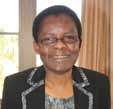

Facebook for class
Landscape Technology lecturers are tapping into the educational benefits of Facebook, the world’s most popular social networking service. ‘We have a culture of using Facebook in our department. It’s a platform students are familiar with and like to use,’ says lecturer Christine Price, who shared her department’s educational interaction with Facebook at the 2016 Teaching and Learning with Technology Day, hosted by Knowledge Information Technology Services.

At the beginning of the first year, each student is required to set up a Facebook account for course purposes. They must then ‘like’ the department’s Facebook page and pages of fellow students in the programme. Ms Price says staff and students find integrating this social networking service into their teaching and learning activities beneficial. It allows for easy interaction between students and lecturers, and also develops students’ writing and ICT skills; and it makes learning fun. Introducing technology into the curriculum is a process and she advises lecturers who are looking at alternative educational tools to establish what will suit them and their students.
postGraDuate DeGrees oBtaINeD BY staFF
PhD: applied mathematics
hess V
three-dimensional mathematical model of a hightemperature polymer electrolyte membrane fuel cell
DPhil: Tertiary Physics education
John I Dc circuits: contextual variation of student responses

25 FuNDING academic exchange programme 44 851 cape higher education consortium (chec) 100 000 conference funding (confcom) 329 598 National research Foundation (NrF) 2 944 306 research & Innovation Fund for teaching & Learning (rIFtaL) 78 000 university research Funding (urF) 1 657 280 Total 5 154 035
2016 puBLIcatIoNs suBMItteD to the Dhet (IN MaY 2017) uNIts Journal articles (audited) 25.34 conference proceedings (submitted) 0.91 Total 26.25
Landscape technology Facebook page
uct
uct
assoc prof Felix Nchu, horticulture
assoc prof Francois Lategan, agriculture
prof Victoria Jideani, Food science & technology
Researchers explore Bambara groundnut
The uses of a widely grown yet underutilised African indigenous legume species are being explored at CPUT. Dr Jane Okafor and Dr Bukola Adedayo, postdoctoral fellows at the Food Science & Technology Department, are exploring the medicinal potential of the Bambara groundnut and its products (milk and yoghurt) as a functional food in health and disease and its relationship to indigenous knowledge systems. The study forms part of a broader CPUT exploration of the potential of the Bambara groundnut as a food security crop and nutraceutical that could be utilised in the functional food and pharmaceutical industry/medicine, spearheaded by Prof Victoria Jideani.
Dr Okafor, from the Federal Institute of Industrial Research Oshodi, Nigeria, says Africa has a long and rich history of communities using indigenous plants for a wide variety of medicinal purposes. ‘Many people claim crops like the Bambara groundnut have medicinal properties; however, there is no scientific proof to validate these claims that are based on undocumented indigenous or traditional knowledge.’ She adds that in parts of SA, communities who have access to the Bambara groundnut are using it as food as well as medicine, hailing it as a remedy for diarrhoea, nausea, eye disease and morning sickness.
To validate these claims, Dr Okafor and Dr Adedayo, from the Federal University of Technology Akure, Nigeria, are exploring the phytochemical components, and antioxidant, anti-microbial and anti-inflammatory properties of the Bambara groundnut and its therapeutic application in specific disease conditions. Their NRF-funded study focuses on KwaZulu-Natal, Mpumalanga and Limpopo, where communities widely use this legume. ‘If we can
back these claims with scientific proof, then more people can make use of it,’ says Dr Okafor, adding that it will facilitate documentation of the indigenous knowledge associating this groundnut with medicinal benefits.
Although widely grown in Africa and easily available, Dr Adedayo says this indigenous legume is an underutilised food crop. ‘Many people do not know about this crop. Currently only subsistence farmers grow it.’ She adds that they hope the outcome of their study will boost the Bambara groundnut’s profile, as well as its potential as a crop that can contribute to food and nutrition security in SA
and the rest of Africa. ‘Apart from being indigenous, it has a lot of advantages over other crops. It doesn’t need a lot of water and as a result it grows easily in arid regions.’
Dr Okafor and Dr Adedayo’s work contributes to the body of work already in progress on the Bambara groundnut at CPUT. Currently, Prof Jideani and Claudine Diedericks hold patents for the Bambara groundnut insoluble and soluble fibres. Prof Jideani and Yvonne Murevanhema have also patented a probiotic yoghurtlike beverage produced from milk made from the Bambara groundnut.

Facu Lt Y o F app LI e D sc I e N ces 26
Dr Jane okafor and Dr Bukola adedayo are exploring the Bambara groundnut
Prof Ken Findlay findlayk@cput.ac.za
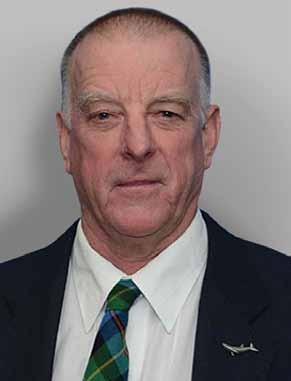
research chaIr: oceans econoMY
throughout the world, national and regional governments are turning to ocean systems to meet food, energy and economic growth security posed by increasing human populations; this includes the operation phakisa ‘unlocking the economic potential of south african oceans’ initiative.
expanding oceans economies have the potential to increase anthropogenic impacts on ocean systems and compromise ocean health and integrity through increasing inter-sectoral and sectoral–environmental conflict. this potentially compromises further ocean ecosystem services on which human populations depend. careful mitigation and management of such conflicts, and their resulting impacts, are required if the oceans economy is to meet sustainable Blue economy framework principles and maximise human benefit and welfare.
cput’s research chair: oceans economy has established the centre for sustainable oceans. this falls within the oceans economy research Niche area primarily contained by cput’s climate change and environment Focus area with extensions into other focus areas. the centre is positioned within the Faculty of applied sciences,
with a recommended mission of ‘the advancement of knowledge and information bases, skills, and technologies for informed governance of resource uses across multisectoral components of the south african oceans economy’.
the positioning of the centre and the research programme within the climate change and environment Focus area aligns directly with the Focus area Framing paper identifying a ‘need to assess the current state of the environment and how human activities affect the wide range of ecosystems and ecological goods and services provided by these ecosystems’.
the research chair’s principal activity is the
27
throughout the world, national and regional governments are turning to ocean systems to meet food, energy and economic growth security posed by increasing human populations.
development and establishment of the proposed research programme and the centre. the primary focus of this centre is a multidisciplinary systems approach to support governance within the oceans economy objectives of operation phakisa within a blue economy model in south africa’s ocean space. Decision support processes for trade-off analyses and scenario planning within Marine spatial planning and Natural capital and ecosystem accounting initiatives are central research objectives in this initiative. the resulting oceans economy rtI is underpinned by the three distinct, yet equally important pillars of (1) Knowledge creation and Dissemination, (2) human capacity Development, and (3) technology advancement. at the same time the centre acts as a nexus for oceans research at cput, maximising opportunities for research, technology and innovation leverage across faculties and advancing an oceans economy rtI framework at cput
It is imperative that cput position itself clearly in this rtI area within the national seascape. two approaches are followed. the first centres on dialogue to advance this positioning with internal and external partners including universities, institutes, phakisa’s Initiatives 7 and 10 within the Marine protection services and Governance Delivery area, the south african Marine research and exploration Forum, the south african earth observatory Network, and both the International and south african components of the Indian ocean rim association academic Group. the second approach centres on academic ‘advertising’ of the oceans economy rtI positioning at cput through delivery of presentations on oceans economy and Governance at conferences, symposia and workshops. this year,
this included the 50th anniversary of the university of pretoria’s Mammal research Institute; the Norway–south africa science Week in cape town; the Benguela 2016 International symposium in cape town; the NrF/Dst ILosa workshop in port elizabeth; and the operation phakisa National oceans and coastal Information Management system.
prof Findlay also attended these international meetings in 2016: the annual Meeting of the International Whaling commission scientific committee in slovenia and the 22nd Meeting of the Indian ocean rim academic Group in Indonesia (as co-leader of the south african IoraG Blue economy Group). Furthermore, he is a principal investigator on the australian antarctic Division antarctic circumpolar expedition project 2016/2017, the focus area coleader, Blue economy, in the south african chapter of the Indian ocean rim association academic Group, a founding member and executive member of the Indian ocean cetacean research consortium, Indocet, a coopted member of the operation phakisa south african Marine research and exploration Forum, 2016/2017, and a steering committee member of the humpback Whale World conference for 2017.
a number of publications on oceans and blue economies are currently being prepared. these include two invited book chapters and input into an oceans economy and ecosystem evaluation report for the Benguela current commission. In addition, there are ten other papers (two published, two accepted, three submitted and three in preparation) centred on prof Findlay’s past position as Director of the MrI Whale unit of the university of pretoria.

Facu Lt Y o F app LI e D sc I e N ces 28
Prof James Odendaal odendaalj@cput.ac.za
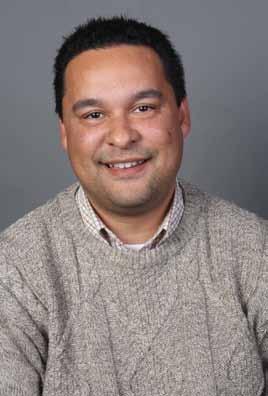
Focus area: enVIronMentaL cheMIstrY, toxIcoLoGY & reMeDIatIon
the focus of this niche area is based on the themes of chemical and biological assessment and monitoring, the development of remediation techniques to address the problem of environmental pollution and management, as well as environmental and human health risk assessment.
the assessment and monitoring research projects focus on the identification, characterisation, monitoring and effects of chemical (inorganic
and organic) and microbial pollutants in the environment. the remediation research projects focus on the development of appropriate techniques to remediate and manage polluted sites. an additional component in this niche area deals with the communication of research findings to the general public and the different levels of government in south africa. this is an effort to contribute to the development of environmental policy, legislation, and environmental guidelines and standards for south africa.
this is an effort to contribute to the development of environmental policy, legislation, and environmental guidelines and standards for south africa.
29
dolleyl@cput.ac.za
research UnIts aG
r IF oo D t ech N o L o GY
the agrifood technology station (ats) is a platform that provides a range of interdisciplinary technological services to the agrifood sector, focusing on existing smaller and medium enterprises, with a view to improving competitiveness, innovation, and research and development capacity in a sustainable manner. It is funded by the tIa initiative of the Dst. ats is located on the Bellville campus, and includes a pilot plant with various processing areas, general and cold stores, and a number of laboratories.
hIGhLIGhts oF 2016
the ats has operated under a number of constraining conditions. one of these is the increasingly challenging financial position which has prompted the station to increase its workshops for industry. this includes looking into the possibility of allocating continuous professional development points via the south african association of Food science & technology. another is the lack of funding for internships as previously provided by the Dst. the latter is being addressed through other funding channels. Finally, the #FeesMustFall activities stunted the ability of ats to close out on projects, generate better cost recovery and reach agreed-upon targets.

Four staff members are currently engaged in
postgraduate studies, either directly or indirectly related to industry clients or challenges. Vuyani Bistoli is doing a master’s study related to seaweed species to provide modified ingredients in foods. Ndumiso Mshicileli is conducting studies on Maillard reaction products potentially to be used as natural antioxidants as opposed to addition of chemicals to foods. christa van schalkwyk is researching the use of high conjugated linoleic acid milk in dairy products to ascertain survival of this fatty acid during production processes. Bradley arendse is looking at the use of kefir in different fermented food products as a function of the survival of vitamin B12 during processing. Four interns have also completed postgraduate qualifications (Food technology and analytical chemistry). a previous intern has been absorbed by a company dealing in kelp, based on his experience during work conducted for them. ats also appointed a postdoctoral fellow to conduct work on near infrared technology regarding fish fraud. this concept will result in at least one publication (submitted).
together with the Department of Food science & technology (DFst), ats proposed a research niche area which is now being developed further: The use of indigenous, under-utilised plant and animal species towards food security this concept was also presented at cape coast university in Ghana as part
Facu Lt Y o F app LI e D sc I e N ces R esea RC h UNIT s 30
Mr Larry Dolley
of the u6 conference. this niche includes conversion of raw materials to tropho ingredients, utilisation of waste organic materials and also new product & process development. this is also nested in the joint DFst/ats research niche areas as shown below.

• An exciting new area is being studied, i.e. the utilisation of insects for human consumption. In south africa, our westernised dietary habits mean that we still have a ‘yuck’ factor attached to eating insects or derivatives of insects. a small innovation company, an offspring of a larger insect farming initiative, approached ats to conduct some preliminary research into using black soldier fly (Hermetia illucens) larvae as human food. a preliminary study and report showed the potential for this to be realised and it is presently being taken further with the client, including building into postgraduate studies with the DFst
has been developed with the Department of process engineering at stellenbosch university. this has resulted in joint funding applications for seaweed and food safety projects. In terms of insect consumption (entomophagy), a small group of researchers and companies is being developed, including international counterparts. In terms of interstation collaboration, two interventions have been planned to increase the national and sub-saharan footprint together with two sister stations at cput and the Limpopo agrofood technology station. Joint funding was received by ats and the Downstream chemicals processing station at NMu, one based on prickly pear processing and the other on production of a cold beverage. the projects are now in progress.
Examples of such projects are:


• The conversion of kelp to three base ingredients and the use of the latter in formulating food products. this project was completed using technology Innovation agency seed Funding. students in the DFst were used to innovate in terms of product development with appropriate packaging. the relationship with the company concerned is ongoing around further research and development. these are some of the products and packaging:
• Another major project was completed, i.e. the hosting of trial production runs as well as facilitating product development using catfish. this thrIpfunded project continues in terms of research with other partners, while the role of ats as a platform for conducting production trials has come to an end.
a range of new partnerships and collaborations has also developed. Based on the work with seaweed, a relationship

a number of workshops as well as individual training interventions for industry were held. these included basic bakery training and basic food hygiene for informal traders as well as more advanced courses related to food processing and quality assurance and control. relationships have also developed with provincial Government and the city of cape town in terms of training (skilling, up-skilling and re-skilling).
Finally, ats is working hard at converting more project work to postgraduate studies. In addition, projects not emanating from work with ats clients also aim at being based increasingly on problem solving with a greater chance of using the outcomes in an industrial setting. the intention, with the DFst, is to increase the percentage of postgraduate projects emanating from ats projects. one supposes 100% is ambitious, but it is considered possible.

R esea RC h UNIT s 31
catfish production runs at ats
KeLp Beer
Prof Karabo S Ntwampe
ntwampes@cput.ac.za
B I oresource eNGIN eer ING r esearch Group
Bioresource engineering is an interdisciplinary programme that integrates environmental studies, water studies, renewable resources, engineering design, material sciences and the biological sciences. In 2016, the Bioresource engineering research Group (BioerG) has seen further development in its activities, with a doctoral board being constituted to focus on doctoral throughput rates. Furthermore, seven of the master’s students who graduated were retained to pursue further studies at doctoral level, with others pursuing their studies at phD level at other universities in the Western cape.
hIGhLIGhts oF 2016
• The research group was awarded a Collaborative postgraduate training award, in collaboration with the Durban university of technology and Vaal university of technology.
• A staff member from the University of Calabar in Nigeria, and prof chicgoua Noubactep of Georgaugust-universität Göttingen in Germany, with expertise in geochemistry, hydrogeology, and chemical engineering, were hosted by the research group.
• Collaboration MoUs were concluded with NorthWest university’s (NWu) school of chemical & Minerals engineering for staff training, culminating with a focus on phD training for cput staff. Further collaboration activities/agreements included those with the centre for Bioprocess engineering research (ceBer) at uct and the
agricultural research council to train students for Meng and Deng studies, respectively.
• Four postgraduate students received NRF scholarships, with another student being awarded the arcs professional Development programme fellowship for a Deng: chemical engineering.
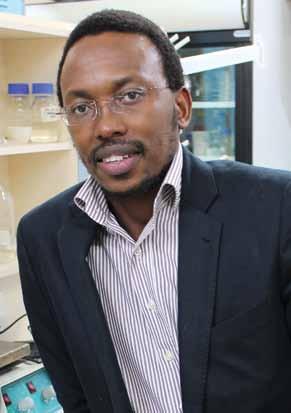
• Four students completed their MEng: Chemical engineering degrees cum laude, deciding to further their studies at doctoral (Deng: chemical engineering) level in BioerG, further increasing the number of doctoral candidates within BioerG, which culminated in an increase in women in science trainees at doctoral level.
stuDeNts IN the spotLIGht
Ucrecia Faith hutchinson, born in Malelane, Mpumalanga, was awarded her master’s degree in chemical engineering cum laude. the research from her study was presented at the south african society for Microbiology (sasM) conference in 2016 and also at the arc’s professional Development programme conference. she will soon publish two papers. she is currently pursuing her Deng degree in chemical engineering with a focus on the application of biochemical engineering in balsamic-styled vinegar production.

Facu Lt Y o F app LI e D sc I e N ces R esea RC h UNIT s 32
maxwell mewa Ngongang, born in Bangwa, cameroon, was awarded his master’s degree in chemical engineering cum laude, with the research from the study being published as ‘Kinetic modelling and optimisation of antimicrobial compound production by Candida pyralidae Ku736785 for control of Candida guilliermondiir’. he is currently pursuing his Deng degree in chemical engineering focusing on bioreactor system design for production of biopreservatives from non-Saccharomyces yeasts for reduction of fruit and beverage spoilage organisms.
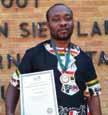
Ncumisa mpongwana, born in tsolo, eastern cape, was awarded her master’s degree in chemical engineering cum laude, and published two Dhet accredited journal articles and two book chapters. her primary research contributions are centred on simultaneous nitrification and aerobic denitrification system treated mine cyanide containing mine wastewater. she is currently the Young Water professionals treasurer (Western cape branch), after working as both a research assistant and laboratory manager for the BioerG. she is currently pursuing her Deng degree in chemical engineering.


Cynthia Dlangamandla, born in Wallacedene, cape town, completed her master’s degree in chemical engineering cum laude the primary contribution from her research is the design of a biologically supported dissolved air flotation system for pretreatment of poultry slaughterhouse wastewater, which was further developed into four other projects at Meng and Deng levels. this was subsequent to the completion of a research assistantship on the application of an expanded granular sludge bed bioreactor design for treatment of soft drink wastewater. she is the author of three Dhet accredited publications and is pursuing her Deng degree in chemical engineering.
c rY sta L eNGIN eer ING uNI t
the crystal engineering unit conducts research in the field of solid crystalline inclusion compounds. Its main thrust is the understanding of the molecular recognition which occurs between molecules in the crystalline state. In particular, projects are aimed at understanding the various secondary interactions which lead to particular structures and to correlate those with the macro-properties of the compounds under study. the crystal structures are elucidated by X-ray diffraction and the stability and energy of the materials formed are studied by thermal, optical and kinetic measurements.
staff members in the unit are prof L Nassimbeni, prof a Jacobs and Dr N Báthori. there are two Dtech, six Mtech and a number of Btech and WIL students completing their projects. the projects focus on supramolecular host–guest systems, the mechanism of enantiomeric resolution whereby left- and right-handed molecules are separated, and pharmaceutical co-crystals.
Prof Luigi Nassimbeni nassimbenil@cput.ac.za

R esea RC h UNIT s 33
Fu N ct I o N a L Foo D s r esearch uNI t
the aims of the Functional Foods research unit (FFru) are to translate results of research on essential fatty acids and micronutrients into new and improved functional food products or premixes with functional food characteristics for health promotion and disease prevention in south africa. the newly developed products or premixes are converted into commercially useful end products for the south african market.

Income: We continued to expand the market for our omega caro e Xtra both locally and internationally. We now have about 1500 regular customers who buy omega caro e Xtra on a regular basis. to date we have had only positive feedback from our regular customers. users who had problems with eczema and psoriasis have reported benefits.
Laboratory activity: as both laboratory technicians resigned, all laboratory work has had to be handled by the head of the unit who continued to deliver an analytical service to the industry, especially for the analysis of fatty acids. several new assays are currently in the process of being developed, standardised and refined for our specific needs.
Research: our project on the nutritional and health status of children in informal crèches in the eastern cape was completed. It studied the effect of consuming biscuits baked with red palm oil on these subjects. three manuscripts were submitted
to a south african nutrition journal for publication. this study revealed a high prevalence of vitamin e deficiency in these children, which potentially could have far-reaching health effects. this study was the first of its kind in south africa. It was a collaborative project with the Malaysian palm oil Board that also sponsored the project.
New products: t he FF ru is in the process of developing two new supplements as part of the o mega c aro- e basket of products. t he one is a milk-based drink for children and the other an o mega c aro e capsule with curcumin. a t I a seed fund grant for the milk-based drink for children to the value of r 493 000 was obtained by the FF ru towards the end of 2016.
Staff: two new staff members joined the FF ru team: a mina s ayed as a part-time laboratory assistant and e llen de Wet as a part-time administrative assistant. Both these posts are being financed from FF ru earnings.
Facu Lt Y o F app LI e D sc I e N ces R esea RC h UNIT s 34
Prof Spinney Benadé benades@cput.ac.za
the aim of the FFrU is to translate results of research into new and improved functional food products.
Omega Caro-E supplement goes global Researchers develop supplement for children

The researchers also had to secure various licences, ranging from import to manufacturing.
Developed by Prof Spinney Benadé and Prof Maretha Opperman, Omega Caro-E, one of the first products invented by CPUT researchers, will now be sold in Canada. Available in capsules, the supplement contains omega-3 fatty acids, a range of carotenes and natural forms of vitamin E. Its innovative formula supports the maintenance of good health, including brain and immune functions.
Canadians can now also purchase the product, which has been available in SA since 2013, thanks to Health Canada’s stamp of approval. Prof Benadé says it was a rigorous process, which took nine months.
‘They are one of the strictest bodies to get approval from. However, we got through with flying colours,’ says Prof Benadé. ‘They accepted the product because it was backed with good research conducted over many years.’ The approval from Health Canada has far-reaching benefits, as the researchers can now distribute Omega Caro E to a number of other countries.
A further four Omega Caro-E products have since been approved for manufacture and sale in Canada. These are Omega Caro-E Xtra, Omega Caro-E Vision, Omega Caro-E Cardio and Omega Caro-E Canine, each having its own formulation for a specific purpose.
For more information visit www.omegacaroe.com
For more information on the Functional Food Research Unit visit www.cput.ac.za/academic/faculties/ appliedsciences/research/ffru
Thanks to CPUT researchers, pre-schoolers in previously disadvantaged communities in SA will soon have access to Omega Caro E Kidz, a supplement available in emulsion form. Omega Caro E Kidz was developed by Prof Spinney Benadé and Prof Maretha Opperman, FFRU researchers at CPUT. Prof Benadé says the vitamin E and omega-3 fatty acids in the emulsion are crucial to the neurological and visual development of children.
The emulsion stems from the researchers’ Omega Caro-E supplement, which is available in capsule form. Widely available in SA as well as in Canada, the supplement contains a range of carotenes, natural forms of vitamin E and vitamin D. As part of the nonprofit component, Prof Benadé and Prof Opperman plan to distribute Omega Caro E Kidz to pre-schoolers in previously disadvantaged communities in SA.

R esea RC h UNIT s 35
the omega caro-e supplement contains omega-3 fatty acids, a range of carotenes and natural forms of vitamin e
pre-schoolers in previously disadvantaged communities in sa will soon have access to omega caro e Kidz
Researchers develop supplement for canines

Needs-driven research pays off
From biscuits to peanut butter and cereal, researchers at the FFRU have come up with a unique product range to ensure children get the right dose of micronutrients. The development of the range stems from the Nutri-Caro E patent, a unique formula that contains a blend of carotenes, minerals, and vitamin E, developed by Prof Spinney Benadé and Prof Maretha Opperman. Prof Benadé says their research is all ‘needs driven’ and when a clinical trial in the Eastern Cape revealed a high rate of vitamin E deficiency in children, the unit set about addressing this problem.

‘Vitamin E is crucial to the neurological development – we had to do something to help these children at an early stage,’ says Prof Benadé. A biscuit was
developed using a unique formula, and over a period of six months, pre-schoolers in an Eastern Cape community consumed two biscuits a day. At the start of the clinical trial, 71% of the participants had a vitamin E deficiency. After six months, the deficiency had dropped to 6%. When consumption stopped, vitamin E as well as vitamin A deficiencies tended to return.
Prof Opperman says apart from the biscuit, they also developed a peanut butter spread, infant cereal, and a pre-mix that can be added to recipes. She says the products have been developed specifically for the non-profit sector involved in various communities and school feeding schemes.
Researchers at the FFRU have developed a unique supplement especially for dogs. Prof Spinney Benadé and Prof Maretha Opperman, who are the inventors of the Omega Caro-E supplement, have found that it’s just not humans who can benefit from their unique formula. According to them, canines can also do with a healthy dose of fish oil, carotenes and vitamin E.
Prof Benadé says Omega Caro-E Canine includes additional ingredients which are needed by canines, such as iodine and anti-oxidants. The researchers have also taken into consideration the taste of the product and opted for a smoky meat flavour. The supplement will be available in a liquid form as an emulsion.
The researchers are currently developing a similar product for cats.
Facu Lt Y o F app LI e D sc I e N ces R esea RC h UNIT s 36
Keep your pet healthy with a daily dose of omega caro-e canine
a unique product range ensures children get the right dose of micronutrients
Research projects that were started or continued
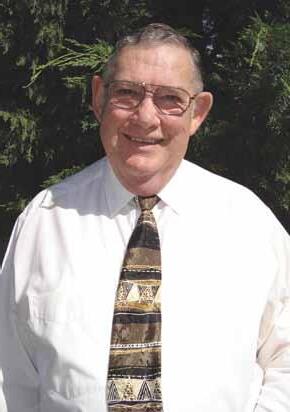
1. separation of Y and Zr on cation exchanger aG 50W – X4 in acetic acid.
2. the determination of distribution coefficients for sc, Y, La, t i , Zr , Nb and ta in aqueous hydrochloric acid solutions on the macroporous cation exchange resins Dowex™ Marathon™ Msc and amberlyst® 15 has begun.
3. separation of Zr and Y on aG 50W-X4 in 2.5 M hBr and in 2.5 M hcl.
Postgraduates who completed their research projects and submitted their theses (they graduated in april 2017)
1. N sephuhle: Distribution coefficients Kd in nitric acid solutions on amberlyst 15 cation exchange resin.
2. eo omoniyi: comparative study of brine treatment using a functionalised nanofibre and an ion exchange resin.
3. G Visser: analysing for sr-90 in environmental samples making use of liquid scintillation counting.
4. NG tasana: evaluation and optimisation of boron analysis methodologies in nuclear reactor primary water systems.
Postgraduates who completed their research projects (they will submit their theses and graduate in December 2017)
1. hrB obame Mbeng: a comparative study of the distribution coefficients for Mg2+, ca2+, sr2+, Ba2+, co2+, Ni2+, cu2+ and Zn2+ on the cation exchangers Dowex 50W-X4 and Dowex Marathon c in aqueous hydrochloric acid solutions.
2. ra Wells: comparison of distribution coefficients of 14 elements on three cation exchangers.
Postgraduates who continued with their research projects
1. G Fennessy-Yon: separation of Zr and Y in tartaric medium and the separation of Mg from Li, Na and Be on aG 50W-X4.
2. Z Mabuwa: the retention of 26 cations on Dowex 50W-X4.
3. s adonis: the optimisation and implementation of a separation technique based on extraction chromatography for the isolation of tb-isotope from massive irradiated Gd-targets.
4. ar spies: column ion-exchange chromatography with a stationary phase polymer containing a complexing agent as functional group.
5. Jc Davids: the synthesis of an organic polymer containing a functional group which can be used as a chelating ion exchanger to separate Zn, cd, pb, cu, Ni, co and Mn.
R esea RC h UNIT s 37
r a DI oche MI strY a ND Io N eX cha NG e c hro M ato G raph Y
Prof Nico van der Walt vanderwaltt@cput.ac.za

Fac ULt Y o F BU s I ness & M ana G e M ent s c I ences

the Faculty of Business & Management sciences strives to establish itself as a place of outstanding learning, research and innovation.
the faculty’s research activities are informed by cput’s 10-year rtI Blueprint, which emphasises ‘unlocking of the potential of staff, students and partners to excel in research, technology and innovation that offers solutions to the needs of society’. this report highlights some initiatives and achievements in 2016.
Dean’s report (actInG) Mr Willem Lotter
s u MM arY o F Var I ous pro G ra MM es
Focus area research
In line with the rtI Blueprint of 2012, the faculty’s focus area is economic Growth and International competitiveness, with prof harry Ballard as the leader. Many academics have aligned their own research and that of postgraduate students they are supervising to this focus area. three departments are actively involved in various niche areas in this focus area: entrepreneurship and Business Management, human resources Management, and tourism and events Management. efforts are being made to involve other departments.
Staff and student research capacity development
Various research-related workshops, geared towards developing postgraduate students’ and staff research capacity were organised. of note were the annual postgraduate summer and Winter schools and doctoral colloquia organised by Dr Michael twum-Darko and Dr andre de la harpe in collaboration with the Faculty of Informatics & Design in February and June–July.
Strategic collaboration with industry partners prof roger Mason (retail Business Management) facilitated ongoing collaboration with the Wholesale
and retail sector education and training authority (W&rseta), which involved 13 research projects, while prof simeon Davies’ (sport Management) research included collaborations with five american universities: university of Denver, colorado humboldt state university, california san Diego state university, california university of san Francisco, california university of alaska
prof Davies also met with the DVc of Leeds trinity university to establish an Mou focusing on collaborative research work, curriculum mapping and planning and student/staff exchange projects.
prof stephen hosking (Graduate centre for Management) was involved in collaborative activities with the south african Department of environmental affairs.
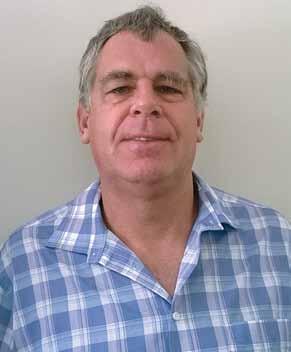
Internationalisation (collaborative/commissioned research projects)
the Department of retail Business Management was involved in various projects relating to financing for sMMe start-ups and expansion of established sMMes in the retail sector; brand orientation of south african retailers and its impact on business success in the
Facu Lt Y o F B us IN ess & M a N a G e M e N t sc I e N ces 40
retail sector; and the retail industry in south africa as employer of first choice for young talent in collaboration with various German universities – Koblenz university of applied sciences, Baden-Württemberg cooperative state university and albstadt-sigmaringen university.
Dr rodney Duffett of the Marketing Department was involved in collaborative research relationships with the south african Fruit Juice association, Queensland university of technology (Brisbane, australia) and the romanian american university (Bucharest, romania).
Generation of third-stream income
prof simeon Davies secured funding of r530 000 from the rooibos council for research on rooibos as a potential natural prophylaxis for high altitude exposure, while prof stephen hosking secured r700 000 from the Department of environmental affairs: oceans and coasts for a research project titled ‘economic element to antarctic strategy’ and r120 000 from operation phakisa for another research project, ‘Measuring the economic contribution of the ocean sector’.
International conference
the faculty, under the leadership of Dr Michael twum-Darko, hosted the International conference on Business and Management Dynamics (IcMBD) in cape town in september. selected papers were published on the aosIs website.
Postgraduate qualifications
Forty-one master’s and three doctoral candidates were awarded degrees at the March and september graduation ceremonies.
New research staff
the faculty’s research profile was boosted by the appointment of staff members at the professorial level, who head their departments: professor Vicky Naicker of Business and Information administration (formerly office Management and technology), associate professor Jobo Dubihlela of Internal auditing and Financial Information systems, and associate professor Lawrence obokoh of cost and Management accounting.
FuNDING
External
Dhet staff Qualifications Improvement Grant: Five staff members were awarded the Dhet grant to improve their qualifications at master’s and doctoral levels.
National Research Foundation
Four staff members received National research Foundation funding from Incentive Funding for rated researchers, two from research Development Grants from the Next Generation of academics programme (nGap), funded by the NrF and Dst, in partnership with the Dhet, and from thuthuka.
Internal conference committee: 26 funding awards were made to 21 members of staff to participate in local and international conferences.
university research Fund: 14 awards were made to 7 staff members and their postgraduate students to conduct research.
Research Exchange Programme
prof Kamilla swart and one of her postgraduate students were funded for research exchange.
research output
41
2016 puBLIcatIoNs suBMItteD to the Dhet (IN MaY 2017) uNIts Journal articles (audited) 55.86 Book chapters (submitted) 1.10 conference proceedings (submitted) 3.25 Total 60.21 FuNDING academic exchange programme 92 727 cape higher education consortium (chec) 50 000 conference funding (confcom) 500 397 Industry funding 127 894 National research Foundation (NrF) 448 000 research & Innovation Fund for teaching & Learning (rIFtaL) 155 000 university research Funding (urF) 408 933 Total 1 782 951
NeW proFessors appoINteD

mTech: Business administration
cput
Nchu Rm
the effectiveness of entrepreneurship education in selected high schools in the cape town metropolitan
mTech: Business Information systems
cput
maribe PP
the role of education technology in transforming education at a selected university of technology
postGraDuate DeGrees oBtaINeD BY staFF
DTech: Internal auditing cput
BruwerJP
the relationship(s) between the managerial conduct and the internal control activities of south african fastmoving consumer goods sMMes
DTech: marketing cput
Duffett RG
social media as a marketing communication channel amongst Generation Y: a new paradigm for hierarchy response models
master of Business administration
MaNcosa
Jansen Dm
an investigation on the effectiveness of the work preparedness skills programme offered in the commerce Faculty of penz university
master of Commerce management uWc
Fongwa eC
Fundamental indexation and mean reversion on the taiwanese equity market
master of laws llm uWc
Clarke sl holding south africa accountable: a critical analysis of treaties submitted by south africa on the rights of children with disabilities
mTech: Business administration cput
mbinda BB constraints facing small and medium entrepreneurs in Khayelitsha, Western cape
mTech: Business administration cput
mkubukeli Z challenges and prospects of small-scale mining entrepreneurs in south africa


mTech: Public management cput
Cornelius a
the impact of time lost through absenteeism on service delivery in the south african police services, the area Kuilsriver cluster, cape town, Western cape
mTech: sport management cput
hemmonsbey JD
the strategic value of sport to the cape town city brand
mTech: Tourism & hospitality management cput
Ismail s
stakeholders’ perceptions of the impact of an outdoor and wine festival in the Breede Valley, Western cape
mTech: Tourism & hospitality management cput
mokoena PP
community perceptions of the impacts and benefits of a service-learning project for small, medium and micro enterprises in a department of tourism management at a university of technology
Facu Lt Y o F B us IN ess & M a N a G e M e N t sc I e N ces 42
prof Visvanathan Naicker prof Jobo Dubihlela prof Lawrence obokoh
Prof Roger Mason masonr@cput.ac.za
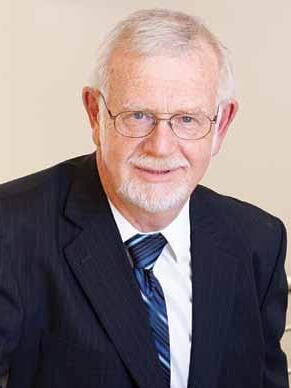
Who L esa L e & r eta IL Lea D ersh I p c ha I r
the Wholesale & retail Leadership chair (WrLc) completed its fourth year of activities at the end of 2016, having met all the deliverables and output requirements set by the funding body (W&rseta) and the WrLc’s management body. unfortunately, this was also the time at which the W&rseta funding came to an end, which also coincided with considerable uncertainty at the W&rseta. the continuation of the WrLc in 2017 thus will be funded by cput and surpluses from completed projects.
During 2016, the WrLc completed six research projects, which are published on our website http:// wrlc.org.za/research-2-2/completed-research/. these and/or previous reports resulted in eight visualisation summary reports aimed at non-academic retail audiences, and 17 articles in the catch up columns in four retail trade magazines published by sa Media holdings. to further make our findings available to retail practitioners, three papers were presented at practitioner conferences.
although the WrLc’s main focus has been on practitioner research outcomes, our research has also resulted in five papers published in accredited international academic journals, and five papers presented at international academic conferences.
at the beginning of this year, we also launched the retail academy with two practitioner courses in retail management offered to retail managers from a number of retail chains via blended learning (block release and Internet-based). approximately 150 retail managers are being trained by the retail academy.
a highlight of 2016 was winning the first prize at the W&rseta Good practice award function for the contribution that the retail Department, retail chair and retail academy made to the retail industry.
In keeping with our slogan of ‘collaboration opens the window to a world of opportunities’, our international research project partnerships continued this year, with three visiting professors from different German universities. In addition to reciprocated academic and staff visits, we have also maintained our one-term student exchanges with two French and German universities.
Details of the WrLc’s accomplishments can be found at www.wrlc.org.za
43
Prof Kamilla Swart swartk@cput.ac.za
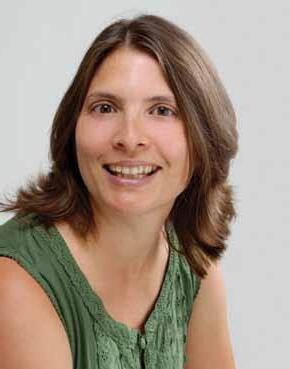
research UnIts
c e N tre F or t our I s M r
IN aF r I ca ( cetra
the centre for tourism research in africa is the research hub for seth, which encompasses four departments in the Faculty of Business & Management sciences: sport Management, events Management, tourism Management, and hospitality Management. Its mandate is to highlight cput’s contribution to tourism and hospitality teaching and research in cape town, the Western cape, south africa and internationally. In addition, it facilitates research activities in the tourism, hospitality, sport and events fields to bring together university researchers/lecturers and practitioners domestically and internationally to find answers to applied research questions. cetra also encourages focused research clusters incorporating researchers and students from different cput departments and from outside the university.
car N i Va L research pro J ect
as part of the carNiVaL research activities, a number of cput established researchers and early stage researchers including postgraduate students undertook research visits to Germany and the uK. the carNiVaL project, which examines the legacies and management of mega-events, has created mutually beneficial linkages between the universities including joint publications,
esearch
conference travel, and postgraduate research workshops, among others.
cetra collaborated with North carolina state university (Ncsu) and the university of New Brunswick (uNB), regarding a programme evaluation of the Football Foundation of south africa (FFsa) in Gansbaai. cetra also facilitated internships for two uNB master’s students, one of whom was based at FFsa and worked on the programme evaluation.
a joint cput–tuM (technical university of Munich) summer school focusing on research publication was held in cape town in March, and was attended by staff and doctoral students from tuM, staff and postgraduate students from cput and a staff member from Ncsu. the two uNB students also attended.
prof John spencer and prof Kobus steyn delivered presentations at tuM on the legacy of three iconic sport events: the cape epic Mountain Bike event, the cape town cycle race and the two oceans Marathon. prof swart and prof Knott participated at the 8th International sport Business symposium in rio de Janeiro. While in Brazil, prof swart was involved with research in rio de Janeiro, where over 440 surveys were collected from international tourists at the olympic Games.
Facu Lt Y o F B us IN ess & M a N a G e M e N t sc I e N ces 44 R esea RC h UNIT s
)
a joint cput–coventry university (cu) doctoral research programme was held in cape town in December. the programme was facilitated by cu, and cput staff and several doctoral students from cu and cput participated.
a major output of the carNiVaL project was a coedited book on the legacy of mega-events of which prof Kamilla swart is a co-editor. contributions were also made by prof Brendon Knott and postgraduate student, Gift Muresherwa.
euro 2016 LeGacY research

prof swart continued to work on sport mega-event legacy studies with a focus on the 2010 FIFa World cup™. since there is very limited research conducted on the legacy of sport mega-events in general and the 2010 FIFa World cup™ in particular, one of her postgraduate students undertook research at the 2016 ueFa euro football games in June–July. the aim of the study is to ascertain changes in perceptions of south africa in the long term as a result of its hosting the World cup.

other research hIGhLIGhts
cetra hosted a phD exchange student (eurosa programme) from the university of Malaga whose research interest is surf tourism.
cetra collaborated with prof Ballantyne (university of Queensland) on a visitor satisfaction study of robben Island Museum. this research project identified visitors’ information needs, preferences and personal experiences in respect of the robben Island Museum tour.
a group of cput postgraduate students and staff were selected as participants at the Douglas ribeiro da silva Field school, which took place during the Leisure and recreation association of south africa (Larasa) World Leisure congress in Durban at the end of June.
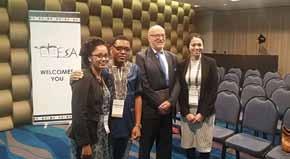
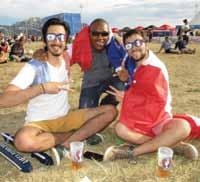

cetra successfully organised the inaugural tourism educators south africa (tesa) conference in september. the conference brought together national and international academics, tourism stakeholders, students and public and private organisations involved in the tourism and hospitality industry. a highlight of the conference was the opening address by the Minister of tourism, Derek hanekom, and the keynote address by prof alan Fyall, rosen college, university of central Florida.
Members of cetra published over 20 papers in various journals, books and conference proceedings during 2016.
45 R esea RC h UNIT s
at the 2016 World Leisure congress in Durban: rosangela Martins (Brazil), Janice hemmosbey, Gift Muresherwa, Nolwazi Mabaleka and shameelah Ismail
2016 euro Games: Gift Mureshewa, cput Mtech student, poses for a photo with French fans in Marseille at a FanZone
at the tesa conference, Minister of tourism, Derek hanekom, with cput staff and a postgraduate student prof swart in rio during the 2016 olympic Games
u M a N p er F or M a N ce La B oratorY
the human performance Laboratory, housed in the Department of sport Management, provides the space and cutting-edge technology to pursue research and enhance education and technical training in terms of human performance in sport and related activities, including human factors and ergonomics.

the laboratory’s function can be divided into four components: teaching and learning, research and facilitation of thesis supervision, exercise testing and rehabilitation, and community engagement. Its research areas are: high performance, athlete Development and transformation in sport, persons living with Disabilities, physical activity in communities and chronic Disease (specifically hIV/aids), and physical activity and Quality of Life.
Dr Sacha West wests@cput.ac.za

Facu Lt Y o F B us IN ess & M a N a G e M e N t sc I e N ces 46 R esea RC h UNIT s
h
Fac ULt Y o F e DU cat I on

During 2016, the faculty has steadily grown in its research capacity, impact and output in its endeavour towards the improvement of the education system in south africa, for learners and adults of all ages and in all educational contexts.
the research growth is firstly mirrored in the appointment of three more research chairs during 2016, making the total four, the highest number of research chairs in any faculty in the university.
Dean’s report prof thobeka Mda
the four research units in the faculty are:
centre for International teacher education (cIte) (NrF sarchI chair): prof Yusuf sayed Literacy Development and poverty (cput research chair): prof rajendra chetty Work-Integrated Learning (WIL) (NrF sarchI chair): prof chris Winberg
Work-Integrated Learning in tVet colleges (etDp seta research chair): prof Nothemba Nduna
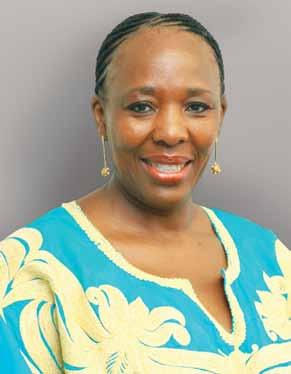
each of the four units has contributed significantly towards the faculty’s research profile, impact and output.
the cIte unit research focuses on teacher education policies, teacher accountability and professionalism, social cohesion in education and initial teacher education. Its research encompasses five countries with the collaboration of several international and local universities and esteemed international researchers.
the Literacy Development and poverty unit seeks to acquire deeper understanding of how learners learn and how teachers teach literacy in disadvantaged contexts with the aim of developing a knowledge base on literacy practices and challenges in
socioeconomically disadvantaged primary schools in the Western cape. the project is on track with regard to the provision of empirical data on the
the faculty has steadily grown in its research capacity, impact and output in its endeavour towards the improvement of the education system in south africa.
intersectionality between inequality and race/class in schools on the cape Flats. the unit collaborates with the Departments of Basic education and higher education and training as well as the Independent examinations Board.
the rationale for the WIL unit is to build knowledge in professional, vocational and technical education. this includes traditional professional programmes as well as new and emerging professions that have the purpose of preparing candidates to engage meaningfully with the world beyond the university. the unit has hosted visiting scholars from the universities of helsinki, sydney and twente.
Facu Lt Y o F e D ucat I o N 48
the WIL in tVet colleges unit conducts research in the context of vocational education, including rpL, to understand technical and Vocational education and training (tVet) college staff’s current WIL practice and WIL staff development needs. this is done to address such needs through the development of high-quality WIL components of a range of new heQsF-aligned qualifications in higher education. the unit’s focus is the development of tVet staff capacity development programmes as well as rpL best practice models for new students at cput. the unit aims to contribute to knowledge in vocational education through partnerships between uots, the etDp seta, and tVet colleges.
several joint publications have resulted from the research in these units in terms of articles, books and chapters in books, and conference proceedings. several staff members and master’s and doctoral students are involved in each of the units. the research output from these units and all staff members has contributed to the faculty having its highest research outputs to date during 2016.
Many staff members were invited as keynote speakers at leading conferences.
prof Janet condy, an established researcher in the faculty, was appointed as the chair of one of cput’s research Focus areas, human and social Dynamics.


With the appreciated and continued support of the DVc: rtI&p, as well as the research Directorate, the faculty looks forward to a prosperous research growth trajectory in 2017.
Fourteen of our students completed their Med degrees this year. Ded degrees were awarded to three of our students.
research output
49
NeW proFessors appoINteD prof petrusa du toit, hoD: research prof Liesel hibbert, english education
FuNDING cape higher education consortium (chec) 50 000 conference funding (confcom) 378 953 National research Foundation (NrF) 5 198 170 research & Innovation Fund for teaching & Learning (rIFtaL) 282 000 university research Funding (urF) 610 670 Total 6 519 793
2016 puBLIcatIoNs suBMItteD to the Dhet (IN MaY 2017) uNIts Journal articles (audited) 25.31 Books (submitted) 6.33 Book chapters (submitted) 2.49 conference proceedings (submitted) 2.86 Total 36.99
and learn
Blogging, if implemented correctly as a teaching and learning tool, can benefit students’ development.
Dr Candice Livingston, a lecturer in the Faculty of Education, is just one of many CPUT lecturers who are tapping into the benefits of blogging. A presenter at the 2016 Teaching and Learning with Technology Day, Dr Livingston says when introducing blogging into the curriculum, lecturers should do so strategically and link it to course content and to assessment.
As part of the lessons, students create a blog and complete six blog posts over several weeks. The content must be linked to students’ major subjects and the writing is academic. Dr Livingston says students’ blog entries range from identifying trends in the subject fields to opinions and reflections. ‘An example of this was when a mathematics student
created a blog called The Pythagoras lifestyle. He created six posts over six weeks, in which he critically interacted with Pythagoras’ concepts. The first dealt with the history of Pythagoras (research), the second investigated the origins of the theorem, and the third was a critical analysis of a problem posed by the theorem; the fourth post synthesised the current knowledge of Pythagorean knowledge with how this information is used in the creation of musical pieces.’
The initiative has proved successful so far. Dr Livingston says by implementing this technology, students can explore learning in an autobiographical manner.
* To make use of this technology as an educational tool, visit: www.wordpress.com

postGraDuate DeGrees
oBtaINeD BY staFF
Ded: Curriculum studies stellenbosch university Rousseau N
the role of reflection in integrating theory and practice in Foundation phase teacher education
Facu Lt Y o F e D ucat I o N 50
Blog
education students are developing writing skills by blogging
Prof
teachers and teaching matter. after home background, they are arguably the most crucial factors in the performance of learners. the literature on teacher education further shows that in the classrooms of the most effective teachers, students from disadvantaged backgrounds learn at the same rate as those from advantaged backgrounds. In this context, the sarchI chair in teacher education and cIte seek to generate knowledge of how teachers and their teaching influence the provision of quality learning, especially for learners from disadvantaged backgrounds in south africa.
specifically, the research chair was created to facilitate the generation of basic and applied knowledge about the form, content, and influence of teacher professional development to enhance learning.
a further goal of the sarchI chair was to develop the knowledge base and field of teacher education, and to invest in the development of research capacity among a pool of researchers working in the area. as such, the main objectives of the sarchI chair in teacher education is firstly to develop ways to better understand the gap between policy and practice
within teacher education in south africa, and to build national and institutional research capacity in the field of teacher education.
the sarchI chair and cIte work programme comprise several areas of interrelated research in the field of teacher education. these include:
• A longitudinal study of initial teacher education in south africa.
• Research about continuing professional development in south africa.
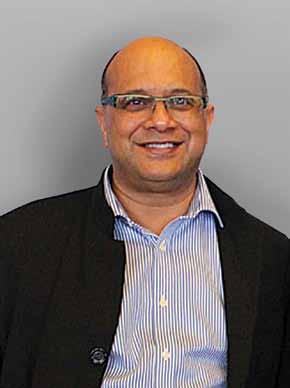
• A study of teacher professionalism in South Africa.
• The use of assessment for learning by teachers to improve teacher competence and student learning.
• A cross-country study of teachers as agents of peace and social cohesion in rwanda and south africa.
together, these focus areas advance knowledge of teacher education in four significant ways:
Firstly, the research will enrich and deepen knowledge of the impact of the full cycle of teacher education on teacher performance and student learning: knowledge
51
c
e N tre o F I N ter N at I o N a L
t eacher
eD ucat I o N ( c I te ) (N r F sarc hI c ha I r)
Yusuf Sayed sayedy@cput.ac.za
of what motivates students to enter teacher training, what makes for effective training, what the relationship is between training and practice upon graduation, and what role continual professional development programmes play in enhancing teacher knowledge and professional skills – all important issues which have not been examined in a robust and longitudinal manner in the south african context.
Finally, the proposed regional links and partnerships within africa will deepen insights into the collective challenges facing teacher education on the continent.
a key component of the work of the sarchI chair and cIte is nurturing a new generation of postdoctoral fellows, and master’s and doctoral students in the field of teacher education. the sarchI chair and cIte currently comprise three postdoctoral fellows, twelve doctoral students and five master’s students.
the work of the chair impacts the field of teacher education at several levels:
2016 conference in cape town; the International task Force on teachers: the 8th policy Dialogue Forum, uNesco, in Mexico city; and the WceD Induction programme – circuit Managers, cape teacher and Leadership Institute in cape town. he also gave keynote addresses at the aga Khan university in pakistan and at the university of the Witwatersrand.
secondly, the research focus areas will collectively sharpen the understanding of the link between policy intentions and outcomes, thereby enhancing knowledge of what works and under what conditions. the research will thus contribute to understanding the assumptions that underpin current teacher education policies in south africa and crucially, the implementation and effects thereof.
t hirdly, the research will add to a growing global interest in teacher education, particularly in relation to understanding teacher pedagogy and teacher training.
• Policy: Through our research and a variety of workshops and seminars, cIte has engaged with national and provincial education departments and officials. In addition, we have engaged with other stakeholders such as unions in research on teacher professionalism. this has laid the groundwork for more informed policy dialogue and engagement.
• Public media: We have engaged with public discourse of teacher education by providing commentary on radio, and producing popular media articles relating to our work.
• Knowledge: We have impacted debates on teacher education through our published work, conference presentations and invited keynote addresses, both nationally and internationally.
During 2016, prof sayed delivered keynote addresses at the BoLesWaNa conference in Gaborone; the cat and It teacher training conference in cape town; the symposium of the British council ‘Going Global’
the chair published nine articles in peer-reviewed journals, namely, Journal of education, education as change, educational research for social change and southern african review of education. he also contributed four chapters in scholarly books, and produced a technical report titled ‘the role of teachers in peace-building and social cohesion’.
Facu Lt Y o F e D ucat I o N 52
the research chair was created to facilitate the generation of basic and applied knowledge about the form, content, and influence of teacher professional development to enhance learning.
Prof Rajendra Chetty

chettyr@cput.ac.za
L I terac Y D e V e L op M e N t a ND po V ert Y ( cput r esearch c ha I r)
the key objective of the research project is to investigate the educational and socioeconomic context in which poor children learn within disadvantaged communities and to find possible reasons for low scholastic performance. the research project calls for deeper understanding of what schools do and what researchers can do to enhance the quality of schooling for poor children.
Literacy is a key factor in promoting a stronger educational system. although literacy development has been the focus of many international strategies, literacy levels continue to decline at disadvantaged schools. this project therefore engages with race, class and schooling for poor children and embraces social issues that impact on education. Literacy development in disadvantaged schools will ensure a lower dropout rate and higher rates of completion concomitant with increased access to higher education. No educational improvement (both school and tertiary) can take place without a good foundation in literacy at primary school level.
poor communities feel alienated from the state’s education reform process owing to their vulnerable economic and cultural situations and because the provision of education continues to be structured on racial and class lines. In south africa, the evidence
of social bifurcation through education is concerning – poor children experience health, economic and community difficulties and attend inadequate schools where they read mostly at the functional level, write without fluency or confidence, and use inappropriate concrete techniques with numeric operations.
project activities include the interrogation of literacy realities and experiences of disadvantaged youth, narrating the voices of poor children, health, economic and environmental scans of poor schools, critique of educational policy, and international collaboration. the imperative is for trans-disciplinary research to include the social sciences, health sciences (to ascertain the state of nutrition and the learners’ health), and economics (to ascertain the poverty datum line of the community in which the sampled schools are located). eight doctoral candidates, a postdoctoral fellow and six novice researchers are currently engaged with research in the unit.
53
the Work-Integrated Learning research unit (WILru) is an interdisciplinary, interfaculty research centre that has a research focus on professional, vocational and technical education. WILru was established in 2002 with an NrF grant and has attracted additional funding over the years. In 2016, prof chris Winberg was awarded an NrF sarchI chair in Work-Integrated
Wor K -I N te G rate D Lear NING (WIL) (N r F sarc hI c ha I r)
Learning and took over the leadership of WILru from assoc prof James Garraway, who was the WILru leader from 2011 to 2015. WILru researchers obtained a number of research grants in 2016 to support their research (e.g. an NrF/stINt grant on science, technology, engineering and Mathematics pedagogical competence, Dhet/Newton Fund eeescep on engineering-in-context, Dhet National collaborative teaching Development Grant on a National postgraduate Diploma in higher education teaching and Learning).
the WILru team hosted the following International visiting scholars this year: prof Jaakko Virkunnen (university of helsinki), prof Karl Maton (university of sydney), prof andy Beavis (university of hull), prof pierre Delvine (university of Leuwen) and prof arie rip (university of twente). prof chris Winberg convened the International consortium for educational Development (IceD) 2016 conference in November and prof James Garraway served on the organising committee.
the WILru team published a number of journal articles and book chapters, guest edited special issues of academic journals, presented papers at a number of conferences locally and internationally, delivered keynote addresses, and were invited to present workshops and seminars at a number of institutions.
WILru team members serve on a number of scholarly journals’ editorial and review boards, serve on NrF research committees, and undertake the peer review of research applications and journal submissions.
a highlight for WILru in 2016 was the first postdoctoral scholar appointment in WILru – taken up by Dr Karin Wolff. another highlight was the graduation of two master’s candidates, supervised by prof James Garraway, cheri hugo and samuel Wicomb. there are currently five master’s and five doctoral candidates supervised by the WILru team. WILru staff have always practised collaborative forms of supervision, comprising a main supervisor with additional cosupervisors and international collaborators who are able to draw the postgraduate scholars into larger projects. this year, WILru also consolidated its cohort-based approach to research supervision by introducing quarterly ‘WILru weeks’ (some in the form of off-campus writing retreats) that brought together project teams, postgraduate researchers, supervisors and external collaborators to focus on theoretical and practical aspects of building knowledge in the field of professional, vocational and technical education. WILru is extremely proud of the work of the master’s and doctoral scholars, who contribute both to the development and sustainability of WILru and whose work is growing the field of work-integrated learning nationally and internationally.

Facu Lt Y o F e D ucat I o N 54
Prof Chris Winberg winbergc@cput.ac.za
Prof Nothemba Nduna ndunaj@cput.ac.za

Wor K -I N te G rate D Lear NING
t he et D p seta provided funding to cput to establish a r esearch c hair for Work-Integrated Learning (WIL) and r ecognition of p rior Learning ( rp L) in a ugust 2015. t he focus of the c hair as set out in the agreement was that there would be three research projects up to 2018:
• 2016: Identification would be made of current WIL practice and WIL staff development needs of tVet college lecturers. the purpose would be to highlight possible gaps to be bridged through further education and training of tVet college staff in WIL and rpL contexts.
• 2017: the development of high-quality WIL components of staff qualifications in higher education would be facilitated and researched. this is in response to researched staff development needs, including rpL needs.
• 2018: an investigation would be conducted into the etDp seta-funded rpL practices and processes that have been used to provide access for early childhood Development (ecD) and community Development (cD) practitioners to ecD and cD qualifications in tVet colleges. the purpose would be to identify best practice rpL models that could be replicated in other educational contexts (e.g. in the development of WIL components of staff qualifications), and pitfalls that need to be addressed. It is envisaged that this project will contribute to the development of best practice models for rpL in relation to WIL and ensure alignment of rpL practices and processes with rpL national policies.
For the 2016 project, research was conducted in two phases. the first phase involved the collection of data using an online questionnaire which was distributed to more than 1 000 tVet college staff in the various provinces of south africa. the second phase was a set of focus-group interviews which were conducted in18 tVet colleges (two colleges were selected in each province). the research revealed several challenges that relate to the planning, implementation, monitoring and assessment of WIL. It also indicated numerous staff WIL capacity development needs.
55
IN t V et c o LL e G es ( et D p seta r esearch c ha I r)
research revealed several challenges that relate to the planning, implementation, monitoring and assessment of work-integrated learning.
hIGhLIGhts oF 2016
• The 2016 research project resulted in interaction with tVet colleges. their principals were asked to send representatives to workshops that introduced the work of the research chair and redesigned research instruments with tVet staff to ensure relevance and applicability of the research instruments to this sector. tVet college staff (including some principals) refined research instruments at a workshop held in october at cput’s Granger Bay campus.
• The research project also developed research collaborations with all south african uots and improved the working relationships of these institutions with tVet colleges in various provinces. the satN WIL task team (comprising WIL directors of all south african uots) were requested to introduce themselves and conduct interviews with tVet colleges in their own provinces.
• The research generated discussions with various national constituencies of the etDp seta (e.g. tVet chamber, higher education research chamber, the provisioning chamber, etc.) as the research chair was required to do presentations on how the etDp seta-funded research will address some of the country’s colleges’ needs and contribute to the National Development plan. this also provided the research chair with an opportunity to interact with other etDp setafunded research chairs as they also presented their research.
• The research also resulted in CPUT’s international participation as the research chair work was
presented and published in the proceedings of the Vet Development symposium (that focused on the current situation and development of Further education and research in Vocational education and training in sub-saharan africa), held in august in Windhoek, Namibia.
• The research involved CPUT postgraduate students in tVet WIL research and generated interest of tVet college staff in postgraduate studies.
• The research attracted interest and funding (R7 million for use from 2017 to 2020) from the Dhet’s teacher education Directorate. It also resulted in cput’s identification as the coordinating and lead institution for a national project in WIL applied research and capacity development of education faculties in other south african universities in terms of school and industry-based WIL practice, as well as development of WIL components of tVet staff qualifications.

Facu Lt Y o F e D ucat I o N 56
Fac ULt Y o F en GI neer I n G

an extensive strategy was refined in 2016 to ensure research and innovation in the faculty were aligned with key institutional and national focus areas. these are satellite engineering, energy, Water, Infrastructure, advanced Manufacturing, environment, and engineering education. two research chairs also were approved in satellite engineering and energy.
the Faculty of engineering covers a broad range of research disciplines across various research centres
Dean’s report prof Marshall sheldon
and units. there are two institutes and two tIasponsored technology stations, all equipped with modern state-of-the-art facilities and technology.
the research centres include: (i) the centre for substation automation and energy Management systems, south africa’s one and only state-of-theart substation automation laboratory that offers specialised training, research and development in new technologies that will improve power systems in south africa; (ii) the Flow process and rheology centre that solves problems related to flow of industrial fluids ranging from mining slurries, pastes and thickened tailings, to explosive emulsions, foodstuffs, pharmaceuticals, fluid concrete and cosmetics; (iii) the centre for community Water supply and sanitation promotes sustainable water supply and sanitation services and contributes to the sustainable delivery of water and sanitation services to communities; (iv) the centre for Distributed power and electronic systems; (v) the product Life cycle Management competency centre which provides cutting-edge product design, simulation and life-cycle management; and (vi) the centre for Instrumentation research.
the two research institutes are: (i) French–south african Institute of technology, the region’s premier

nanosatellite programme, which has developed africa’s first nanosatellite, ZacuBe-1, and is currently developing what will be the most advanced south african cubesat to date, ZacuBe-2; and (ii) the energy Institute.
the two technology stations are: (i) the tIa adaptronics and advanced Manufacturing technology Laboratory that specialises as a national manufacturing, research and educational resource centre for adaptronic technologies in south africa and (ii) the clothing and textiles technology station that provides innovation support, services and short courses to the clothing and textile industry to become more competitive.
In addition to the above, the south african renewable energy technology centre is the first nationally funded centre that specialises in industry-related and accredited training for the entire renewable energy industry, including short courses and workshops.
the faculty aims to integrate its teaching and learning with its research programmes and proactively pursue collaborative partnerships regionally, nationally and globally to create opportunities for socioeconomic change aimed at solving regional and national
Facu Lt Y o F e NGIN eer ING 58
challenges. During 2016, the faculty introduced four new heQsF-aligned postgraduate qualifications, including two master’s (Meng in chemical engineering and Meng in electrical engineering) and two doctoral programmes (Deng in chemical engineering and Deng in electrical engineering). During this year, the faculty also officially rolled out the Mtech: electrical engineering (coursework) with an energy focus. the rollout of the energy-focused qualification is part of the eu edulink consortium programme on energy efficiency in southern africa that includes african and German partners. Both F’satI and aMtL became key
role players in a critical collaboration agreement with the Dea in support of operation phakisa. the faculty registered 295 postgraduate students and graduated 38 master’s and five doctoral students.
the faculty is involved in a number of staff and student exchange programmes. some of the highlights of 2016 include: staff and students from the faculty participated and won second prize in the first annual african Grand challenge NM-aIst 2016 held in arusha, tanzania; prof Veruscha Fester of the Fprc was successful in an application for Leaders in Innovation Fellowship programme funded through the royal academy of engineering; F’satI received Dst/NrF student grants to the value of r2 million for postgraduate student support; aMtL represented tIa at the Dst Budget Vote with an exhibition; a group of staff and students attended a summer school at ernst abbe university of applied sciences in Jena, Germany.


research output
NeW proFessor appoINteD
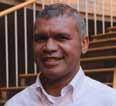
59
cape higher education consortium (chec) funding 50 000 conference funding (confcom) 425 906 Industry funding 1 548 902 National research Foundation (NrF) 7 153 603 research & Innovation Fund for teaching & Learning (rIFtaL) 120 000 university research Funding (urF) 510 729 Total 9 809 140
FuNDING
2016 puBLIcatIoNs suBMItteD to the Dhet (IN MaY 2017) uNIts Journal articles (audited) 29.05 Book chapters (submitted) 1.16 conference proceedings (submitted) 26.05 Total 56.26
DeGree oBtaINeD
Construction management cput Opperman a supervisory motivational strategies to improve productivity of construction workers
postGraDuate
BY a staFF MeMBer mTech:
assoc
prof Wilfred Fritz
First african Grand challenge: the three winning teams: aust, cput, and NM-a st
aMtL display of the 2014 Formula one racing car at the 2016 Dst budget vote
Prof Raynitchka Tzoneva tzonevar@cput.ac.za

Focus area: enerGY
Focus area energy is one of the outcomes of the cput 10-year strategy for research and innovation, as described in the 10-year rtI Blueprint.
the aim of the Focus area is:
• Introduction and development of international best practices and transfer of knowledge in the field of energy and power systems
• Production of research and innovation outcomes relevant to the social and economic development needs of south africa
• Building a critical mass of researchers at cput and making effective use of limited resources
research is multidisciplinary, innovation oriented and problem solving driven to address national challenges in energy.
the research investigations are aligned with two of the Dst’s key research and Development (r&D) areas: energy security, and Frontiers of r&D. the industry-related activities, and knowledge and technology transfer, are aligned with two of the DtI’s priority areas for growth of south african industry: development of industrial
partnership for research, and engineering scarce skills development.
Future steps in the development of the focus area of energy are towards collaboration and integration of members’ research activities and undertaking of joint projects on national and international levels. collaboration with eskom based on the extension of the eskom power plant engineering Institute will facilitate the solution of real industry problems and create better-prepared and knowledgeable master’s and doctoral postgraduates.
Members of the focus area are research centres and units from the Faculty of engineering. the corresponding research activities and projects vary from producing biofuel to building a smart grid. the members and their focus of research are listed in the table below.
Facu Lt Y o F e NGIN eer ING 60
Research centre/unit Focus of the research work Leader
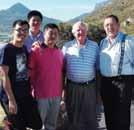
Centre for Distributed Power and Electronics Systems (CDPES)
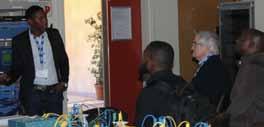
Centre for Substation Automation and Energy Management Systems (CSAEMS)
energy efficiency, renewable and alternative energy technology, distributed system technology, predictive control of power converters and electrical drives, and MeMs energy sensor technology.
contribution to and addressing the need in sa for research infrastructure development that supports human capital development and research and innovation in the field of metering, monitoring, protection, automation and control of power systems, paying particular attention to current and emerging standards in the field.
Direct current research Micro-Dc grid investigation for a sustainable household power plant; optimal use of sustainable power sources; conversion of ac installations to Dc installations; Dc-grid safety in households.
Energy Institute
• Clean cookstoves
• Climate change
• Power systems
Modular Solar Powered Aquaponics
Renewable Energy & Environmental Engineering

Renewable Energy Recovery From Waste Materials
South African Renewable Energy Technology Centre (SARETEC)
• Seeking better ways for the poor to cook
• Recommending methods for reducing carbon emissions from energy generation
• Energy efficiency of power systems with distorted waveforms. Includes hVac/hVDc, renewable energy, harmonics and filters
Development of modular solar-powered aquaponics to encourage entrepreneurship to benefit all people. Working with impoverished communities by introducing renewable energy projects that favour the upliftment of such communities.
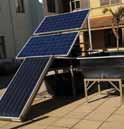
renewable energy, particularly micro-hydropower, pumped storage and biofuels, modelling and development of toolkits in the industrial and commercial air quality sectors.
producing biogas from wastes to be used for replacement or supplement of fossil fuels in power generation. Investigation of an anaerobic Digestion (aD) as an energy-efficient and environmentally beneficial technology for bioenergy generation.
training of wind turbine service technicians at NQF Level
5. the facility is currently in the process of becoming an accredited Global Wind organisation (GWo) training facility, the first in the southern hemisphere.
Prof N Beute
Prof P Lloyd
Prof G Atkinson-Hope
Prof H Annegarn
61
Prof T Kahn
Prof R Tzoneva
Mr B Groenewald
Mr F Ismail
Mr I Omar
Prof I Omoregbe
Mr S Pietrangeli
Dr Fritz and prof Naumann of the Munich university of applied sciences with cput and German exchange students
the aquaponics unit
Mr simson Malakia demonstrates his Btech project during the rtDs user group meeting organised by the csaeMs
prof Yuguang Zhou, chinese agricultural university, Beijing, and two of his students with prof philip Lloyd and prof harold annegarn
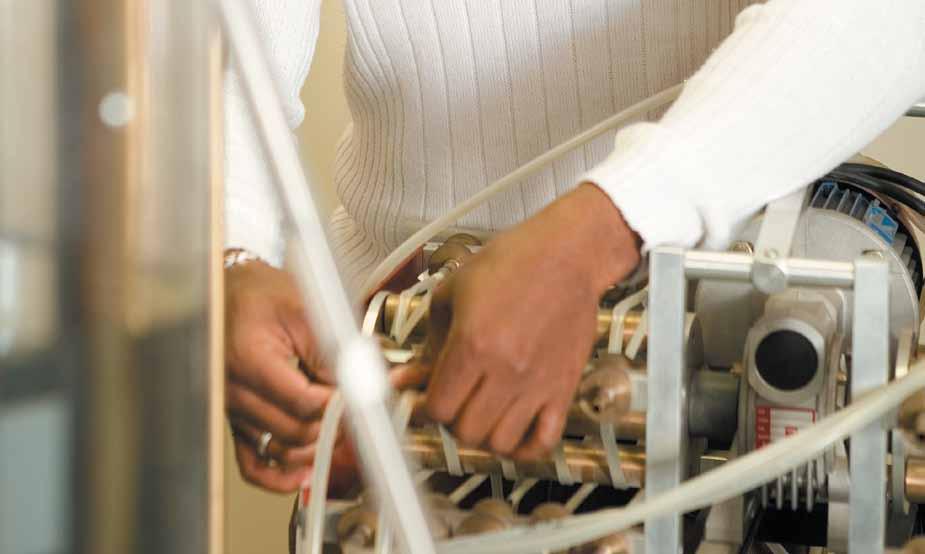
Facu Lt Y o F e NGIN eer ING 62
research UnIts
c e N tre F or D I str IB ute D p o W er
a ND eL ectro NI c sY ste M s ( c D pes )
through its research, the centre for Distributed power and electronic systems aims to:
• Develop power conversions for renewable energy sources and investigate interconnectivity of distributed resources with microgrids and electric power systems
• Apply such technology over multidisciplinary applications, especially those pertaining to commercial and industrial applications
• Investigate and apply optical fibre and wireless communication techniques over large-scale power systems, for telemetry and control of microgrids, both ac and Dc, and deployment into the smart Grid
• Improve control schemes for power converters and drives
• Develop instrumentation for complex alternatives such as the wind, solar and nuclear energy sector, including environmental protection and sustainable development
the cDpes team members are prof tariq Kahn (head), Dr Marco adonis (deputy head), Dr atanda raji, Dr Wilfred Fritz, Mr Deon Kallis, Mr achmat Fish, Dr ali Mustafa almaktoof and Dr Khaled abo-al-ez.
Master’s and doctoral students currently number 65.
NeW staFF, chaNGes aND proJect coLLaBoratIoN
Dr Khaled abo-al-ez joined the centre to assist as part of the edulink Master’s in energy programme introduced during 2016. he was a postdoctoral research fellow at the centre of New energy systems at the university of pretoria. he was also a postdoctoral research fellow at the centre for substation automation and energy Management systems (csaeMs) at cput. Dr abo-al-ez joined cput as senior lecturer in energy management systems.

Dr ali almaktoof completed his postdoctoral research at the centre and left to continue research on the Libyan Desertec solar farm that was reinitiated. a research collaboration initiative was established with prof Mohamed ali ekhlat, former Deputy Minister of electricity of Libya and current faculty member at the university of tripoli, Libya.
the centre has ongoing collaboration with Munich
63 R esea RC h UNIT s
Prof Mohamed Toriq Kahn khant@cput.ac.za
university of applied sciences (hM) with Dr Wilfred Fritz who is completing postdoctoral work as a Von humboldt Fellow in Germany. the project forms part of a broader collaboration between cDpes and the German entity, training Development consulting.
a research collaboration was also established by prof Kahn by joining professor Li Wenfeng’s research team of the Xi’an university of science and technology. prof Wenfeng is the team leader of the 2018 annual shaanxi provincial science and technology innovation project: ‘space, sky, and earth communication research’. Distributed systems has an integral relationship with communication systems as well as control and power electronic systems.
under the diligent work of Dr Marco adonis, an NrF grant of r15 000 000 for equipment in support of the centre’s work was awarded.
Dr atanda raji started his studies towards a postgraduate diploma in higher education which will enhance our programmes’ teaching and learning contribution.
Researcher clinches prestigious fellowship

Dr Wilfred Fritz has been awarded a coveted Alexander von Humboldt Postdoctoral Research Fellowship. The Alexander von Humboldt Foundation is one of the world’s most prestigious funding institutions, and over the years has funded more than 26 000 researchers in 130 countries of which 50 are Nobel laureates. ‘Only a few Alexander von Humboldt Foundation Fellowships are granted annually and it is an immense honour to represent CPUT as a beneficiary of this prestigious fellowship and to eventually succeed in graduating as a Humboldtian,’ says Dr Fritz of the Department of Electrical, Electronic and Computer Engineering.
Selection for participation in the fellowship is tough, with applicants having to prove that they have an above-average, independent academic research record. The fellowship is also granted in recognition
of a researcher’s entire achievements to date, whose research and insights have had a significant impact on their own discipline, and who will continue developing research-based solutions. Dr Fritz has an impressive research record and over the years has won several awards and secured funding for research and student projects.
In 2012, he received the African–German Network of Excellence in Science award for junior researchers, which recognises outstanding achievements of researchers on the African continent. His work in the energy sector has also been recognised by government, and in 2013 he was seconded to the Department of Energy as Chief Technical Advisor and tasked to determine the energy efficiency level of all sectors in SA.
As part of the fellowship, Dr Fritz, who specialises in energy consumption reduction, will spend over two years at the University of Stuttgart in Germany, where he will work closely with experts in his field. ‘The main aim of my postdoctoral proposal is to improve the grid stability that is being degraded by the influence of upcoming grid-tied systems based on renewable energies in SA, through simulation and optimisation.’
Dr Fritz says participation in the fellowship will also benefit CPUT. ‘Additional spin-offs of the fellowship are lifelong guaranteed annual grants for the acquisition of scientific equipment, printing subsidies to publish research results, sponsorship of guest visits by academics from Germany, and funding of longterm research collaborations between academics in Germany and CPUT, with an amount of €1 000 per annum towards academic material.
Facu Lt Y o F e NGIN eer ING 64 R esea RC h UNIT s
Dr Wilfred Fritz secured a coveted alexander von humboldt postdoctoral research Fellowship
Dr Kessie Govender govenderk@cput.ac.za
c e N tre F or I N stru M e N tat I o N r esearch ( c I r )
the centre for Instrumentation research has a longstanding history within the Department of electrical, electronic and computer engineering. the centre is based in the new electrical engineering research building on the Bellville campus and currently operates under the umbrella of F’satI. With a track record of more than fifteen years, the centre has housed a large number of master’s and doctoral projects funded through various organisations. the centre is capable of hosting 20 Btech students for their final-year industrial project, feeding into the master’s/doctoral research. over the last three years the centre has witnessed renewed growth, with new staff members, active in research, joining the centre and postgraduate numbers steadily on the increase.
the main project areas are novel electronics for high frequency ultrasound, condition monitoring of transmission lines, and ultrasonic high-voltage insulator cleaning (funded by eskom’s tesp grant). also based within the centre is the Quantum physics research Group headed by Dr Kessie Govender. the group focuses on quantum technologies and quantum communications.
QUANTUM PHYSICS RESEARCH GROUP
the Quantum physics research Group was established within the Department of electrical, electronic, and computer engineering in 2014. the group, led by physicist Dr Kessie Govender, investigates and develops expertise in quantumbased technologies.
the group currently consists of three staff members: Dr K Govender, Dr Z Nkosi and Mr r pentz, and four master’s students. a quantum optics laboratory has been developed for the purpose of cooling atoms, and subsequent development of quantum information-processing components.
the group has established collaborations with researchers at the Laser physics Group, stellenbosch university, ithemba labs, and the National Metrology Institute of south africa, as well as with the Quantum physics research Group at uKZN. an Mou has been signed with stellenbosch university, facilitating exchange of technical and scientific knowledge. the group is funded by the NrF thuthuka grant, csIr–NLc Laser rental pool Grant and by the cput research Directorate.
More information on the activities of the group can be found at: www.cput.ac.za/academic/faculties/ engineering/research/quantum_physics

65 R esea RC h UNIT s
sunb@cput.ac.za
e N tre F or Mecha NI cs a ND
ech N o L o GY
the focus of the centre for Mechanics and technology is in on fundamental and applied research in the field of mechanics. In 2016, the centre managed one NrF-funded project and several self-funded projects. During this period, the centre supervised two NrF-funded Btechs, one self-funded Btech, two self-funded Mtechs and one Dtech. an international linkage has been established with peking university, china.

During this year, the centre produced various publications, including a Dhet-accredited academic monograph, authored by prof sun, titled ‘Dimensional analysis and Lie Group’. prof sun also published the following Dhet-accredited journal articles: ‘the temporal scaling laws of compressible turbulence’ (Modern physics Letters B), ‘Dimensional analysis and its applications’ (physics and engineering), and ‘exact solution of Qian’s equation of slender toroidal shells’ (Mechanics in engineering). prof sun also published in the proceedings of the 23rd International congress on sound & Vibration, July, athens, and the proceedings of the 6th International conference on structural engineering, Mechanics and computation, september, cape town.
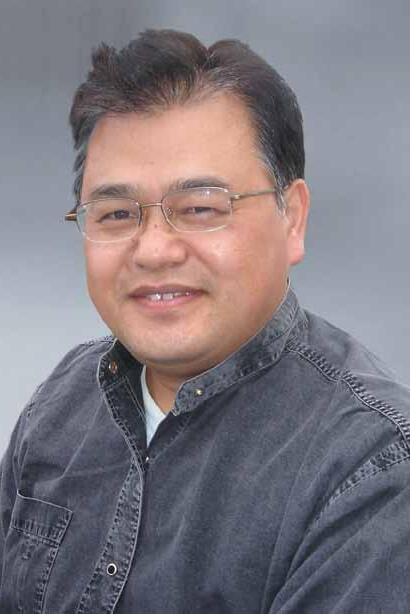
Facu Lt Y o F e NGIN eer ING 66 R esea RC h UNIT s
c
t
Prof Bohua Sun
tzonevar@cput.ac.za
the centre for real-t ime Distributed systems team members are prof raynitchka tzoneva (leader), carl Kriger (deputy leader), Mkhululi Mnguni, Quinton Bart, Dr senthil Krishnamurthy, Dr adeyemi adewole, Nomzano tshemese and Mukhove ratshitanga.
the centre strives to make a theoretical and application-based contribution to advances in realtime distributed systems. It is concerned with the development of novel models, design methods, software, hardware and their integrated application for real-time monitoring and control. It also aims at insightful and focused determination of proper areas of application and research through appraisal and reappraisal of emerging control technologies.
the core activities are:
• Design and implementation of nonlinear controllers
• Distributed control based on IEC61499 standard for function block programming
• Networked control systems’ design and implementation
• Optimisation of complex distributed systems and development of algorithms for parallel computation
hIGhLIGhts
oF 2016
• Matlab and TwinCat PLC software for distributed control of multivariable systems was developed by graduate Dr J Muga.
• Real-time hardware in the loop simulation of a fully decentralised system for control of continuous stirred tank reactors was implemented using Beckhoff pLc as a controller and NI compactrIo for the process emulation by Btech graduate a Mbadamana.
• The research on state and parameter estimation of nonlinear ion exchange process for desalination of water, developed by Deng graduate N Dube, resulted in the production of novel methods and software which can be used for building future desalination plants.
• Methods for the design of nonlinear adaptive distributed networked controller were developed by Deng graduate Y Mfoumboulou.
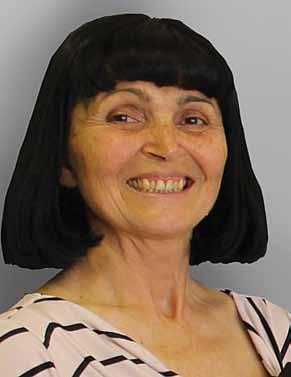
• A strategy for hierarchical control of synchronous generators in multi-area power systems was developed by Meng graduate p Banga-Banga.
• Dr J Muga graduated with his DTech in Electrical engineering.
• The following funding was secured: eskom tesp programme r40 000
urF funding for Dtech student
J Muga r40 000
NrF funding for Deng student
Y Mfoumboulou r110 000
NrF funding for Deng student
L Mbangeni r110 000
67 R esea RC h UNIT s
c
D I str IB ute D sY ste M s ( crt D s )
e N tre F or r ea L - tIM e
Prof Raynitchka Tzoneva
tzonevar@cput.ac.za

c e N tre F or s u B stat I o N a uto M at I o N a ND eN er GY Ma N a G e M e N t sY ste M s
the centre for substation automation and energy Management systems team members are prof raynitchka tzoneva (leader), carl Kriger (deputy leader), adj prof alexander apostolov, adj prof petyu petev, Mkhulul Mnguni, Dr senthil Krishnamurthy, Dr adeyemi adewole, Quinton Bart and Mukhove ratshitanga.
the centre seeks to contribute to addressing the need in south africa for research infrastructure development that supports human capital development and research and innovation in the field of metering, monitoring, protection, automation and control of smart power systems, paying particular attention to current and emerging standards in the field.
core activities concentrate on contributions to the theory and practice of substation automation and energy management systems, as follows:
• Interpretation, modelling and implementation of the Iec61850 standard functions
• Development of innovative protection schemes for different applications
• Real-time simulation and innovative solutions to energy management systems
• Development of test-bench facilities for testing of ideas, project solutions, and new developments in the field of power systems
• Training and knowledge transfer by equipmentorientated courses, yearly industrial seminars on Iec61850, and organisation of the biennial pac World africa international conference
hIGhLIGhts oF 2016
The achievements in research, development, and applications of the IEC 61850 standard and technology are:
• A working prototype of a merging unit fully compatible with Iec61850-9-2 standard was implemented on an FpGa platform and successfully tested as part of the work on the prestigious project by Meng graduate a Ncube
• A real-time working test bed for implementation of innovative algorithms of protection schemes for differential protection of power transmission lines based on pMu synchrophasor measurements was built and tested by Meng graduate e Mthunzi
• A prototype of wide area stability evaluation and control power system based on utilisation of synchrophasor measurements and Iec61850 standard was developed by Deng graduate Dr a adewole
Facu Lt Y o F e NGIN eer ING 68 R esea RC h UNIT s
Prof Raynitchka Tzoneva
( csae M s )
• New methods, algorithms and software for parallel solutions of multi-area feeder reconfiguration problems for power systems were developed and tested for multi-area power systems by Meng student F Giresse
• A method for adaptive load shedding was developed
• An innovative algorithm for differential inrush current discrimination-based digital protection for a three-phase power transformer was developed and implemented using the rtDs simulator and seL protective intelligent electronic devices by Btech graduate s Malakia
National and International collaboration and joint work with universities and industry
• Two industrial seminars, presented by Prof alexander apostolov, were organised at cput: ‘Iec 61850: Fundamentals, applications and Benefits’ and ‘Iec 61850 edition 2 and its Impact on the smart Grid’
• Members of the centre presented exhibitions and demonstrations at the eskom transmission conference in Johannesburg

• Collaboration with Eskom’s research and development department started at the end of 2016 on a pilot renewable energy project
• Two applications to the Erasmus + programme were accepted and funded for the K1 credit exchange programme with Yildiz technical university, Istanbul, turkey and for K2 capacitybuilding programmes for the smart grid Meng; programme development with seven other universities from europe and africa continued
Postgraduate degrees awarded
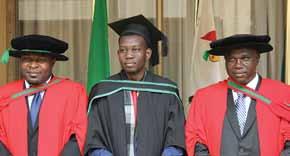
• A Adewole, DEng: Electrical Engineering
• E Mthunzi, MEng: Electrical Engineering, cum laude
• A Ncube, MEng: Electrical Engineering, cum laude
Funding secured
• Eskom TESP programme R 90 000
• CPUT Prestigious Project R1 000 000

• CHEC CCT R50 000
• DAAD funding for DEng student H Mataifa
r100 000

69 R esea RC h UNIT s
csaeMs stand at the eskom transmission conference
Future technology designers Dr adewole, Mr Ncube and Dr Muga
prof tzoneva, Dr Volmink, Mrs hodges and Dr Nhlapo with erasmus credit mobility project participants
erasmus credit Mobility project participants from Ytu turkey
beuten@cput.ac.za
eN er GY I N st I tute
t he institute’s members are p rof Nico Beute, p rof p hilip Lloyd and p rof h arold a nnegarn, with administrative support from Nadia c assiem.
During 2016, the institute was based in the s outh a frican r enewable e nergy technology c entre, a magnificent new building on the Bellville campus. t his has allowed us to support the work of saretec in training technicians for the growing renewable energy industry in s outh a frica. u nfortunately, the demands on space at saretec have forced a further move next year to e lectrical e ngineering on the main Bellville campus, but we will be close enough to saretec to continue supporting them.
e nergy is a subject that covers every engineering discipline and impacts every aspect of human life. It is therefore core to our thinking that we must bring experts of every kind together, so that they may help one another find solutions to the many challenges facing the energy sector. a s a result, a key aspect of our work is organising two annual conferences, the Domestic u se of e nergy (D ue ) and the Industrial and c ommercial u se of e nergy (I cue ). t hese conferences draw academics and practitioners, and help to find answers by fostering dialogue between disciplines. 2016 saw the 24th meeting of D ue and the 13th of I cue . t he past proceedings of these conferences are now online and can be found at http://energyuse.org. za/document-archive/
o ur core business has been supported by numerous outreach activities
• An NRF-funded bilateral exchange programme with the chinese agricultural university in cookstove design and testing has seen local students spending a month in Beijing and chinese students visiting sa for a similar period. prof Zhou Yuguang visited south africa with five students, and held fruitful discussions on the next phases of our work.
• The SABS nominated one of our members to serve on the International organization for standardization (Iso) technical committee 285, developing standards for clean cookstoves. he serves in a leadership position in Working Group 1 of the committee, and as such has input into other working groups.
• The Minister of Energy nominated one of our members to serve on the Ministerial advisory council on energy, where he has had specific input into the evolving Integrated energy plan for sa in the area of liquid fuels.
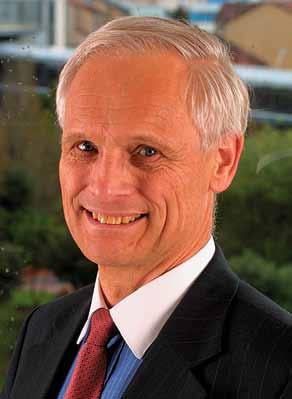
• We provided expert analysis of energy activities in numerous local and international forums.
hIGhLIGhts oF 2016
• In March, Prof Annegarn served as external expert advisor to the csIr Natural resources and environment research advisory panel Meeting: Global change.
Facu Lt Y o F e NGIN eer ING 70 R esea RC h UNIT s
Prof Nico Beute
• In March, Prof Lloyd attended the Power and e lectricity World c onference at the s andton c onvention c entre and spoke on nuclear power at the Nuclear a frica section of the conference.
• In March, we hosted the 24th DUE Conference, where international experts gave excellent presentations. among the speakers were christopher Gross from the Deutsche Gesellschaft für Internationale Zusammenarbeit Gmbh (GIZ) and aurelie Ferry with experience in the French Development agency, haiti and Myanmar (Burma). prof Grünwald from Wismar university in Germany, head of peesa (programme on energy efficiency in southern africa), gave an overview of this programme which develops links between south african and German universities. In addition, 35 successfully peer-reviewed papers were presented, selected from more than 40 submissions.
• In April, Prof Lloyd addressed the annual general meeting of the claybrick association on energy and climate change in George.
• In August, we hosted the 13th ICUE conference. this conference had a workshop which focused on variable speed drives and it had 47 peer-reviewed papers selected from 56 submissions. the papers in the Due and Icue proceedings are normally accepted by the Dhet for academic credits.

• In September, Prof Lloyd gave a keynote address on ‘energy and Development’ at the IasteD conference held in Gaborone, Botswana. the paper has since been published in the Journal of energy in southern africa.
• In October, Prof Annegarn presented a keynote address, ‘promoting innovation in gas for mobility’ to the Gas for Mobility summit in Johannesburg.
• In October, Prof Lloyd attended the AGM of the International council of academies of engineering and technological societies in New Delhi, India, where he presented a keynote address on the possible impact of new energyefficient buildings.
• In October, Prof Annegarn visited the College of engineering, china agricultural university, Beijing, to participate in the 2015 Forum of renewable energy promotion in Developing countries, where he delivered a keynote address and chaired two sessions.
• In November, Prof Annegarn was sponsored by Global alliance for clean cookstoves to participate in the Iso tc285 deliberations in accra, Ghana, on the further development of the tc 285 standards for testing clean cookstoves.
• In November, Prof Lloyd assisted a Swiss delegation wishing to strengthen links with south african universities.
• In December, Prof Zhou Yuguang accompanied five of his co-workers and students to cape town, and held extensive discussions on biomass-fuelled cookstoves and our work on reducing emissions from such stoves.
• Various conference presentations were made, refereed journal and conference contributions were published, and a book and book chapter were published by members of the institute.
71 R esea RC h UNIT s
the Flow process and rheology centre team members are prof Veruscha Fester, andrew sutherland, Dr reinhardt Kotzé, prof raj chhabra, Indian Institute of technology, Kanpur, India (adjunct prof), prof samier Mukhopadhayay, aeL Mining services (adjunct prof).
the centre was founded in 1995 and applies the fundamental principles and techniques of rheology to solve industrial problems, such as deformation and flow under different shear, material structure and process flow conditions. the group has produced more than 100 peerreviewed publications to date.
Its core activities include:
• Rheological characterisation and modelling of concentrated emulsions, suspensions, solutions and polymer melts and modelling of the phenomena of micro- and nanostructural evaluation involved in the mixing, pumping, transportation and storage processes of multiphase systems.
• Ultrasound Doppler-based in-line rheometry technique for enhanced process monitoring and control of industrial suspensions.
• Modelling non-Newtonian flows in pipes, fittings, open channels and pumps.
• Instrumentation systems to measure in situ concentration and particle velocity in settling slurry and coarse particle flow and visualisation in pipes and complex geometries.
hIGhLIGhts oF 2016
the collaboration with aeL Mining services headed by prof Irina Masalova was established in 2000. a new five-year project has been initiated. the research is related to the fundamental study of the structure–property relationship of superconcentrated emulsion systems. the research involves both experimental and theoretical aspects.

prof haldenwang and team members prof Fester and Dr Kotzé are involved in a Wrc-funded project titled ‘rheologically characterised wastewater sludge from eight wastewater treatment plants in cape town over an extended period of time’. Despite the variation in rheological parameters obtained and the fact that belt filter presses from three manufacturers were evaluated, some with and others without prior thickening of sludge, these parameters collapsed onto a single curve for each measurement position when presented as a function of solids concentration. prior to this work,
there was no indication of the variability of concentration and rheological parameters encountered at different plants. this work will help engineers make better estimates when designing new pipeline systems at increased sludge concentrations.
the group has firmly established itself as playing a leading role in understanding the rheology of self-compacting concrete (scc). prof haldenwang, who is a civil engineer and expert in openchannel free-surface flows, effortlessly transitioned to apply his knowledge of rheology in the civil engineering industry. rheology proved to be a useful tool to investigate the effects of cement properties and superplasticisers on the flowability of scc. Willy Mbasha, a doctoral student, developed a testing protocol under the co-supervision of prof Masalova that is already being applied by others worldwide. he attended the rILeM symposium on self-compacting concrete in Washington, Dc, and was invited to join one of the technical committees. another graduate student, omar almuwbber, is already applying the technology learnt in the Libyan concrete premix industry.
Dr reinhardt Kotzé and andrew sutherland obtained tIa seed funding for the development of a bed-load

Facu Lt Y o F e NGIN eer ING 72 R esea RC h UNIT s
F L o W p rocess a ND r heo L o GY c e N tre (F prc )
Prof Irina Masalova masalovai@cput.ac.za
Prof Rainer Haldenwang haldenwangr@cput.ac.za
velocity meter. the developed bed-load velocity meter system has great potential for in-line monitoring of flow regimes and pipe blockage risks in the coarse particle flow industry. the bed-load velocity meter was successfully demonstrated in a laboratory using industrially relevant fluid suspensions and a stainless steel measurement system. the trL level of this technology increased from 3 to 5. the next step is to demonstrate the system in a real operational environment, e.g. a mining site.
several students and staff of the Fprc presented papers at the southern african society of rheology conference in pretoria in september. prof Fester was elected as president and prof haldenwang was elected to the executive committee.

Visiting professors
prof chhabra from the Indian Institute of technology in Kanpur, India, visited us in october. this is an annual visit where prof chhabra assists researchers and postgraduate students in the Fprc prof paul slatter,
who started the Fprc in the 1990s, visited the group and presented a lecture to staff and students.
Research contracts/patents
Johan Wiklund, reinhardt Kotzé and rainer haldenwang
an official decision to grant a european patent, ‘Fluid Visualisation and characterisation system and Method’ was received, effective from 27 april 2016. the patent will now be validated in 12 eu countries. the patent application in the usa, titled ‘Fluid Visualisation and characterisation system and Method: a transducer’, was officially granted in July. the Japanese National phase patent application, ‘Fluid Visualisation and characterisation system and Method’, was finalised in June. all patents were filed in the name of cput and sp technical research Institute of sweden.
Courses/workshops hosted/attended prof chhabra during his visit presented a course on research methods for engineers from 13–15 october which was attended by more than 50 postgraduate student and staff members in the Faculty of engineering.
profs haldenwang and Fester were elected president and vice-president of the southern african society of rheology (sasor). at the biennial international sasor conference held in pretoria, four papers were presented by students from our group and Dr Kotzé was invited to deliver a keynote address.
Publications
Five journal papers were published, as well as a peer-reviewed conference paper and an additional conference paper.
Innovative study explores new technology
Mr John Shamu, an FPRC doctoral student, recently completed advanced studies related to ultrasound sensor technology on Flow-Viz, an industrial system invented by CPUT and SP Technical Research Institute of Sweden. Flow-Viz is a highly specialised industrial fluids characterisation system that improves process and quality control within a fluid production line. Developed by Dr Reinhardt Kotzé and Prof Rainer Haldenwang, with Swedish co-inventor Dr Johan Wiklund, the system is based on a pulsed ultrasound technology platform including non-invasive sensors.
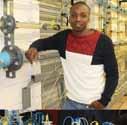
Thanks to funding from CPUT’s Research and Innovation Fund and the Research Directorate, Shamu was able to visit Sweden twice. While there, he completed tests on novel ultrasound sensor technology that can measure Doppler profiles through high-grade stainless steel pipes. ‘This information is critical for advanced sensor development.’ With access to high-tech equipment, he was able to successfully acoustically characterise several industrial sensors with different configurations, using various coupling technologies.
The results of his work will be used to develop the next generation of sensors where the ultrasound beam is optimised for industrial applications and accurate measurements. His research activities are part of the centre’s plan to build infrastructure, develop new skills and ensure sustainability within the Flow-Viz innovation project.
* Students interested in joining the Flow-Viz team can contact Dr Kotzé at kotzer@cput.ac.za
73 R esea RC h UNIT s
John shamu recently completed advanced studies related to ultrasound sensor technology on Flow-Viz
prof paul slatter with members of the Fprc
the French–south african Institute of technology hosts the cput postgraduate programme in satellite systems engineering which specialises in space science and technology research and innovation based on the nanosatellite platform. F’satI offers postgraduate degrees, including an international Msc in electronic systems engineering, through a partnering institution in France. the institute’s vision is to become a uniquely indigenous, world-class hub with an end-toend nanosatellite capability in the design, manufacture, operations and appropriation of data for the provision of cost-effective, space-based solutions to the pressing socioeconomic challenges facing africa.
It offers a multidisciplinary training programme that encompasses theory, research, professional development and innovation. the research scope of the F’satI satellite programme includes the following niche areas: subsystems; payloads and applications; applied electromagnetics; space science and radiation; photonics; data intelligence; security; systems and quality engineering; production planning and control; orbital dynamics, structures; verification and validation; and production techniques for multifunctional components.
the professional development and innovation phases are conducted in the africa space Innovation centre.
advanced communications subsystems are being developed for the international nanosatellite market and distributed globally through a strategic commercial partnership with clyde space, scotland. hosted in state-of-the-art facilities, the programme develops nanosatellite platforms for applications such as space weather research, resource management, and communications and technology validation.
ZacuBe-2, a very advanced nanosatellite currently being developed, will provide data for maritime domain awareness in support of Government’s operation phakisa. the satellite will be launched in May 2018. Future missions will see constellations of nanosatellites being deployed for maritime communications services, as well as forest fire detection.
hIGhLIGhts oF 2016
3rd International african Cubesat Workshop
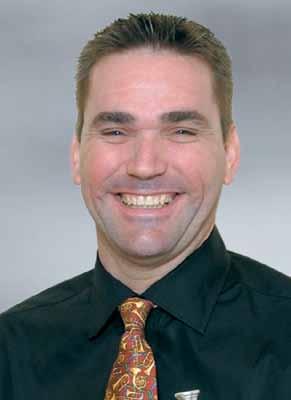
F’satI established the International african cubesat Workshop
series in 2011. the 3rd International african
Facu Lt Y o F e NGIN eer ING 74 R esea RC h UNIT s
Fre N ch– s outh aF r I ca N I N st I tute o F t ech N o L o GY (F’ sat I) a ND aF r I ca s pace I NN o Vat I o N c e N tre ( as I c )
Prof Robert van Zyl vanzylr@cput.ac.za
Sat AfricAn
international
workshop 20 16 Cube
3rD
cubesat Workshop took place in February 2016. the theme of the workshop was ‘cubes for africa’, with the following streams: emerging and Disruptive technologies, Value proposition and Business opportunities, human capacity Development, applications for sustainability and prosperity, steM education and awareness, and space Governance and policies. the workshop drew 125 delegates with wide representation from academia, industry and government agencies in south africa, africa and internationally. It was also accompanied by an industry exhibition with various local and international participants.
ZaCUBe-2
south africa’s second cubesat is being developed by F’satI students and staff with financial support from the Dst and the south african National space agency. this advanced nanosatellite, which stands only 30cm tall, will carry state-of-the-art payloads to detect the movement of ships as well as forest fires.



CPUT is committed to advancing maritime domain technologies. The university recently outlined its contribution to Operation Phakisa at the Tech Opportunities for the Oceans Economy Conference, hosted by F’SATI, Le Cap40* and French Tech Cape Town. Operation Phakisa (meaning ‘hurry up’ in Sesotho), is a government initiative aimed at unlocking the economic potential of SA’s oceans by focusing on marine transport and manufacturing, aquaculture, marine protection services and ocean governance, offshore oil and gas exploration, coastal tourism, and small harbour development. By unlocking this potential, the government aims to address the challenges of poverty, unemployment and inequality.
Director of F’SATI, Prof Robert van Zyl, says to support the government’s initiative, CPUT will produce a nanosatellite constellation for Maritime Domain Awareness. This will consist of nine bespoke CubeSats that will be used for applications such as vessel tracking, monitoring of SA’s extensive oceans, rural connectivity, and e-Health (communication with remote clinics). ‘The technology being developed is cutting-edge and has already attracted the attention of global players in the maritime industry,’ says Prof van Zyl. As a precursor to the mission, the unit is developing a 3U CubeSat, ZACUBE-2, which will be used to test the new vessel-tracking ability and infrared technology that will play a key role in the project.
Chief Director of Space Science at the DST, Mr Humbulani Mudau, says developments in space science and technology are the key to reaching the goals of Operation Phakisa. ‘As government, we are aware that space science has a huge role to play in Operation Phakisa.’ CPUT is serious about unlocking the economic potential of SA’s oceans and has established a Chair in Oceans Economy, held by Prof Kenneth Findlay. CPUT is also exploring the feasibility of a multidisciplinary school of ocean studies.
*Le Cap40 and French Tech Cape Town support business engagement between the Western Cape and France, as well as the establishment of technology start-ups in Cape Town cput has aligned itself to meet the goals of operation phakisa
75 R esea RC h UNIT s
Unlocking the economic potential of SA’s oceans
Prof Veruscha Fester festerv@cput.ac.za
Na N o M ater I a L s Group
the highlight of the year for the group was receiving a provisional patent for the development of a continuous flow reactor for the treatment of textile wastewater based on the advanced oxidation process.

the co3o4 particles produced the previous year are uniquely immobilised into a patented permeable reaction barrier chamber, which is inserted in the continuous flow reactor. this method allows instantaneous colour removal of real textile wastewater. Work for further scale-up to 1000 L/h is currently underway. this reactor promises to operate at one-third of the current cost of treatment systems in its class owing to its easy design and low pressure and energy utilisation. It is thirty times more reactive than similar systems tested in laboratories worldwide and can save up to 80% of water that can be re-used on site. Gunnar Visser, a master’s student, is a co-inventor with the group leaders.
Master’s student, solange Ntiribinyange, obtained the coveted Best student oral presentation award at the International conference on Nanoscience and Nanotechnology held in Johannesburg, a clear indication that this group is starting to make its mark in nanotechnology circles.
prof Veruscha Fester was selected as part of a group of 15 south africans to attend a two-week Leaders in Innovation Fellowship programme in London in February. hosted by the royal academy of engineering and funded by the Newton Fund, she was selected based on her submission of a novel wastewater treatment reactor developed by her group.
 Dr
Dr
Ms Ntiribinyange, Mr chowdhury and VG Fester won an award for best student presentation at the Nanoafrica 6th International conference on Nanoscience and Nanotechnology in Johannesburg in april. Z Gwele, Mr chowdhury and VG Fester also presented a poster at the conference. VG Fester and B Kriedemann presented a paper at the 4th Zing continuous Flow chemistry conference in portugal in april.

Facu Lt Y o F e NGIN eer ING 76 R esea RC h UNIT s
Mahabubur R Chowdhury chowdhurym@cput.ac.za
the product Lifestyle Management competency centre trains students and professionals in the art of system engineering, product design, and product lifecycle management, as well as hosting and supervising design projects. the centre uses a highend design, modelling and simulation software suite, catIa™ V6, to deliver on these core activities. the pLMcc is a partnership between the French Ministry of education, Dassault systèmes, the tIa and cput. the centre was launched in March 2012.
Team members
Michael Petersen: Manager (Mechanical engineering)
Jeffrey Ball: research assistant (Mechanical engineering)
Naeem Cassim: research assistant (Industrial Design)
Michael Khan Tal: research assistant (electrical engineering)

Thaafir Israel: administrative assistant (project Management)
Research projects
In 2016, the pLMcc focused on projects that required the modelling of systems and their behaviours. these projects included a Lego mind storm line follower, quadcopter, and fixed-wing drone (FWD).
the Lego mind storm line follower project is a collaboration between the pLMcc and the
mechatronics department. the pLMcc has undertaken the supervision of two mechatronic Btech students, who are doing the line follower as their final project. the students involved in the project were trained to use catIa™ V6, as well as catIa systems. this is an ongoing project which involves modelling and simulating the behaviour of the line follower on catIa systems. the project will be used as learning material to train students to model the behaviour of cyberphysical systems. It is envisaged that the ability to model and simulate the behaviour of a complete system will boost innovation capability tremendously.
the quadcopter project stems from the above Lego project. the aim is to model the behaviour of a quadcopter, thus allowing for optimisation of the design and tailoring it to a specific mission. the quadcopter project was a collaboration between supméca, a French university, and the pLMcc. two students from supméca completed a six-month internship at the pLMcc their main project was to model the quadcopter using catIa systems. as part of this ongoing project, the students have successfully completed the first phase by producing a model that simulates quadcopter behaviour.
the FWD project was conducted in collaboration with Inholland university of applied sciences, Netherlands. the aim of the project was to model the behaviour of
77 R esea RC h UNIT s
p ro D uct L
c
IF ec Y c L e Ma N a G e M e N t
o M pete N c Y c e N tre ( p LM cc )
Mr Michael Petersen petersenm@cput.ac.za
an FWD, thus allowing for optimisation of the design and tailoring it to a specific mission. two students from Inholland university of applied sciences completed a six-month internship at the pLMcc. their main project was to model the FWD using catIa™ V6 and catIa systems. the students successfully completed the first phase of this ongoing project by producing a model that simulates the behaviour of an FWD.
academic research
academic projects hosted and supervised by the pLMcc in 2016:
• The aerodynamic design and development of an urban concept vehicle through cFD analysis (Donovan cogan, Mtech: Mechanical engineering)
• The application of virtual ergonomic analysis in industrial design: to evaluate the ingress and egress motion of passengers for a micro-mobility vehicle (Neil de Vos, Mtech: Industrial Design)
• A design and analysis of a multifunctional composite structure for nanosatellites (Jeffrey Ball, Mtech: Mechanical engineering)
• Technological advances in rapid construction of housing (chriss Bondo, Mtech: Mechanical engineering)
• Design and development of a quadcopter to supplement crop scouting in agriculture for smallholder farmers (Jonathan Moses, Mtech: Mechanical engineering)
Internships and collaborations
J Ball, G oliver and M petersen published ‘a design and analysis of a multifunctional composite structure for nanosatellites’ in the proceedings of the 10th south african conference on computational and applied Mechanics. the conference was held in potchefstroom in october.

Facu Lt Y o F e NGIN eer ING 78 R esea RC h UNIT s
uNIVersItY couNtrY INterNs supméca France 2 Inholland university of applied sciences Netherlands 2 hochschule Düsseldorf Germany 3 cput (Mechatronics) 2 cput (Industrial engineering) 2 cput (Mechanical engineering) 1 Publications
Mr Naim Rassool rassooln@cput.ac.za


s outh aF r I ca N
r e N e Wa BL e eN er GY
t ech N o L o GY c e N tre ( saretec )
the south african renewable energy technology centre is the first national renewable energy technology centre in south africa. It is situated on cput’s Bellville campus. saretec offers specialised industry-related and accredited training for the entire renewable energy industry, along with tailored short courses and workshops. the centre receives funding from the Dhet through the National skills Fund and substantial support from the German Ministry for economic cooperation and Development, through the south african–German energy programme. this is implemented by the Deutsche Gesellschaft für Internationale Zusammenarbeit Gmbh, the south african National energy Development Institute and Green cape.

as a national centre, saretec endeavours to make locally developed technologies more accessible to the renewable energy industry in partnership with education and research institutions in all provinces. the centre has established strong partnerships with government, academia, industry, associations and private sector companies within the renewable energy sector. the facility is housed in a green building designed to showcase the use of renewable energy and energy-efficient technology.
Mr Sven Pietrangeli pietrangelis@cput.ac.za
79 R esea RC h UNIT s
the technology station: adaptronics advanced Manufacturing technology Laboratory (aMtL) team comprises prof oscar philander (director), eugene erfort (operations manager) and Mornay riddles (technical manager). Focus area leaders are prof Graeme oliver (oceans engineering), prof Mugendi M’rithaa (universal Design), Dr a Nemraui (adaptronics) and Felicity harris (automotive technologies). technical staff are L Matshoba, D Muller, c onochi, D Wright, G coetzee and J cairns. Workshop staff are K Lategan, r Busch and r arendse.
the cput adaptronics aMtL was established in 2007 by prof oscar philander. the primary objective of the unit is to specialise as a national manufacturing, research and educational resource centre for adaptronic technologies in sa adaptronics is technology that integrates sensor and actuator functions into materials, components and structures so that they may react to environment stimuli, thus making them intelligent.

the Department of economic affairs and tourism of the Western cape provincial Government provided funding to establish the cput adaptronics aMtL. the Dst through the aMts (now the tIa) provided funding for capital equipment purchases. Based on the activities, innovation, and successes of the cput
adaptronics aMtL, it was officially incorporated into tIa’s technology station programme in March 2013, and became the eighteenth technology station in south africa. a new vision and mission for the unit was formulated, focusing primarily on developing human capital in scarce skills with a specific drive towards innovation, technology, and commercialisation for sa’s engineering industry.
there are five research and technology focus areas of specialisation:
• Adaptronic Technology: Research and technology projects on the development of intelligent structures, MeMs and nanosensing devices
• Unmanned Platforms: Research and technology development of nano-, micro-, mini-, and close/ short-range unmanned aerial vehicles (uaVs) for both military and civilian applications
• Automotive Technologies: Research and technology projects related to motorsport and alternative/green propulsion systems (Formula student competition)
• Ocean Engineering: Research and technology projects related to maritime applications
• Universal Design: Technology projects providing access to physically challenged individuals (Nicky’s Drive research simulator and demonstrator)
Facu Lt Y o F e NGIN eer ING 80 R esea RC h UNIT s
t ech N o L o GY s tat I o N : aD aptro NI cs aDVa N ce D Ma N u Factur ING
t ech N o L o GY La B oratorY ( cput aD aptro NI cs a M t L)
Prof Oscar Philander philandero@cput.ac.za
the technology station: clothing and textiles is located in the Faculty of engineering on the Bellville campus. the unit was established to provide innovation support to the clothing and textile industry to improve competitiveness. the following range of specific services is provided to the clothing, textiles and related sectors.
manufacturing advisory services

examples include manufacturing audits and assessment; industrial engineering services for the improvement of productivity, including process layout, optimising sewing methods and work study; implementation of production systems to improve production; and advice on the acquisition of new or improved technology.
Technology support centre
the tsct has a number of specialised technologies available at its Bellville office for research, technology demonstration, prototype development, and smallscale manufacturing. small businesses can use the technology on an appointment basis, and staff at the tsct also provide advice on the application and use of these machines. charges are levied for the use of the equipment, but this is largely subsidised.
Product testing and analysis
the laboratory at the tsct provides product testing and an analysis service to the clothing, textile and
related industries, as well as clothing and textile-related consulting services, i.e. advice on material usage and care, and fabric specification development.
Product development
services include clothing product development using caD software for pattern development, pattern grading (sizing), marker making (maximising the material utilisation before cutting), 3D body scanning and 3D simulation on an avatar using data extracted from the 3D body scanner.
research output
81 R esea RC h UNIT s
New sMes assisted 713 repeat sMes assisted 139 analysis and tests conducted for sMMes 1250 products developed for sMMes 152 INcoMe technology Innovation agency grant 6 216 000 Intern grant 253 000 cost recovered from sMMes and other grants 1 467 000 t ech N o L o GY s tat I o N : cL oth ING a ND t e X t IL es ( tsct )
Mr Shamil Isaacs isaacssh@cput.ac.za techstation@cput.ac.za http://active.cput.ac.za/tsct
Textile industry set sights on welding
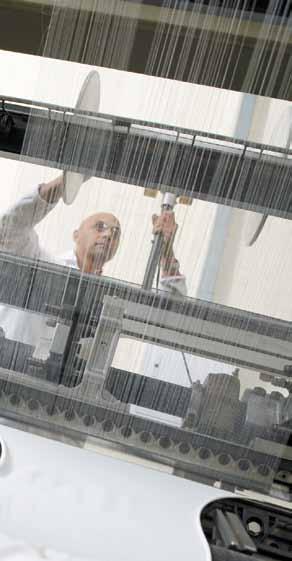

Welding is no longer the sole preserve of the engineering industry. With manufacturers looking at improved production processes and new technology, the textile industry is setting its sights on welding garments together. This high-tech process uses heat generated by ultrasonic vibrations to seal cut edges, with the end product featuring smooth, durable and watertight seams. Researchers in the textile industry are now exploring this technology, including Nommiselo Tyalana, a lecturer based in the Clothing and Textiles Department.
Although ultrasonic welding has been in use since the 1960s, its use in the textile industry has been limited. With seams being the weakest part of a garment and ultrasound welding limited to synthetic fibres, Tyalana decided to explore the differences between the traditional stitch types used in the manufacture of swimwear and the seams produced using ultrasonic welding.
With a battery of tests completed on the various stitch types and seams, initial results already show the advantages of ultrasonic welding. This technology eliminates the use of thread, needles and other items, and also produces watertight seams. Swimwear is exposed to salt and chlorinated water that has eroding properties. However, with ultrasonic welding, there are no stitch threads, thus eliminating the chances of seams being spoilt.
Head of the Clothing and Textiles Department, Dr Elspa Hovgaard, supervisor of the research project, says the exploration of ultrasonic welding, which forms part of Tyalana’s master’s thesis, is important not only for the textile industry, but for the training of students enrolled in the university’s clothing management programme. Dr Hovgaard says that students must be skilled in the latest technology. ‘Rather than just teach students about what’s available now, we are looking ahead and advancing our students.’
Facu Lt Y o F e NGIN eer ING 82 R esea RC h UNIT s
Nommiselo tyalana and Dr elspa hovgaard
Fac ULt Y o F hea Lth & W e LL ness sc I ences

reflection on research in the Faculty of health & Wellness sciences for 2016 is firstly an opportunity to acknowledge the retired Dean, prof Diro Gihwala, for his contribution to transitioning the faculty from a teaching paradigm to a research-based teaching focus. During his last year in office, the faculty continued to make strides on the journey of establishing itself as a site of quality learning, research and innovation. to this end, the faculty mission is aligned to the national imperatives of healthcare in south africa by providing programmes and conducting research responsive to the needs of the
Dean’s report (actInG) prof penelope engel-hills
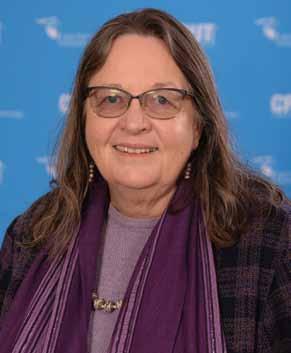
region, country, and the continent, while finding answers to health problems of international importance. We continued to improve on the quality of our research and teaching through building partnerships with universities in the region, south africa, africa, and internationally.
research in the faculty spans a spectrum of health and wellness issues in addition to higher education, with a focus on work-integrated learning through collaboration with the sarchI chair in WIL. a further focus is on the translation of research as researchers in the faculty strive to find solutions to the health challenges in our communities. research on diseases of lifestyle confirms the important role that this faculty plays by responding to health issues in our region.
the efforts of a few drive research initiatives in the faculty; however staff and students have sustained research outputs and grown the levels of scholarship with increasing numbers of staff becoming editors and reviewers for quality journals. the emphasis on improving staff qualifications has been maintained with the support of the rDG and tDG, and, while limited, there is important uptake of external funding opportunities. the faculty is proud of its postgraduate students and recognises the need to increase enrolment and successful completion of studies. this means that more attention is now given to building research capacity of our undergraduate students to prepare
them for work in a knowledge society and encourage greater numbers to enter postgraduate studies. this year, students graduated in our faculty in the following disciplines: nine Mtech BioMed, two Msc BioMed, two Mtech Nursing, and one Mtech radiography.
the appointment of a permanent faculty research coordinator places the faculty in a better position to support and promote research and innovation, while increasing research output. the faculty has a registered health research ethics committee and completed the groundwork to establish an Institutional animal research ethics committee in collaboration with the IBMB. to help the institution’s endeavour to be at the heart of technology innovation in africa, a cput research chair: Innovation in society was advertised in collaboration with the Faculty of Informatics & Design. We look forward to the benefits of this appointment in the future.
all staff and students who have contributed to making 2016 a successful year for research are acknowledged, as are the contributions of the research centre and research units whose highlights appear as individual reports below.
In closing, gratitude is extended to the DVc: rtI&p, and to all in the research Directorate and cpGs for continued support to research in this faculty.
Facu Lt Y o F hea Lth & W e LLN ess sc I e N ces 84
research output
postGraDuate DeGrees oBtaINeD BY staFF
mPhil:
NeW proFessor appoINteD

mPhil: higher Teaching & learning cum laude
university
the relative influence of two different teaching strategies on the academic performance of a group of undergraduate radiography students in anatomy studies
msc: emergency medicine
Gihwala R
clinical responses to rape cases by emergency care providers
mTech: Radiography cput

herbert e
Magnetic resonance imaging and biochemical markers to assess disability in female subjects with multiple sclerosis
85 85
academic exchange programme 39 857 conference funding (confcom) 135 605 Industry funding 4 289 187 National research Foundation (NrF) 120 000 university research Funding (urF) 164 395 Total 4 749 044
FuNDING
2016 puBLIcatIoNs suBMItteD to the Dhet (IN MaY 2017) uNIts Journal articles (audited) 10.58 Book chapters (submitted) 1.00 Total 11.58
emergency medicine uct matthews R a description of
cape town
practices of analgesia administration by advanced life support paramedics in the city of
stellenbosch
Boshoff hJ
uct
prof K Jooste, hoD Nursing sciences
Dental Technology Innovation Showcase
The BTech Dental Technology class recently excelled in innovative thinking. Each year, lecturer Abduraghman Latief asks the class to design and construct a costeffective machine that plays a crucial role in the day-today activities of dental technologists. This year the class, who worked in groups, came up with several innovative devices, with some having the potential to be patented.
Student Jodi Kock and his team manufactured a steaming device named ‘Extreme Steam’ from basic materials, including a metal box and parts of a cappuccino machine. Jodi says it is a practical device that can be used at all stages during the manufacture of a dental appliance. Many dental technologists still use a sterilised bristle brush to clean the models or dental appliances during the manufacturing process. ‘Whenever a dental appliance is
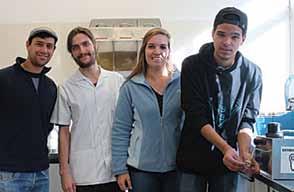
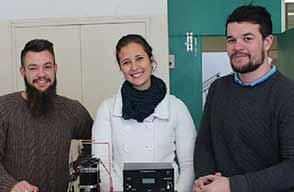
finished, you have to boil it off to remove the wax residue. This is where our device comes in to play,’ he says. ‘An affordable steam cleaner is very practical because it is easy to use.’
Chantal Isaacs, Buyani Masala and Santino Orso produced a cost-effective smart polish electrolytic bath, using basic materials such as glass and a standard timer. The machine polishes dental applications using an electrochemical process. Currently machines that perform this task retail up to R20 000, but this device cost just over R1 000 to construct.

Monique van der Merwe and her team opted to recreate a cost-effective version of an electroplating machine that is used to gold plate as well as polish certain dental
appliances, such as cobalt chrome. ‘By introducing new and innovative ideas and concepts to existing ideas, we can improve on the manner in which we produce dental prostheses,’ says Monique.
Thierry Bazire and his team introduced a Bunsen burner using the process of electrolysis to convert H2O into hydrogen and oxygen molecules which produce a hot flame.
Abduraghman Latief says he is impressed with this year’s projects. ‘I think every year the level increases,’ he says. It is important for students in this industry to be aware of innovation and technology and the role it can play in improving services to patients; such projects also broaden students’ horizons and stir their interest in research.
Facu Lt Y o F hea Lth & W e LLN ess sc I e N ces 86
Dental technology students displayed their innovations at the Btech Innovation showcase
the main focus area is water-borne pathogens, specifically bacteria and viruses in wastewater, river water and roof-harvested rainwater. projects form part of a collaboration with the Water research Group within the Department of Microbiology, stellenbosch university.
Project one
Numerous research groups have demonstrated that many wastewater treatment (WWt) processes are ineffective in their ability to remove antibiotic compounds from wastewater effluent. this implies that antibiotics
research UnIts
and antimicrobial-resistant strains may be present and persist in treated wastewater effluent that is usually released into a neighbouring surface water source.
• A PhD student will submit his thesis (Stellenbosch university) at the end of 2016. this project relates to bioprospecting for novel biosurfactants and biosurfactant-producing bacteria in wastewater.
• An MTech student graduated in April 2016. His project related to the level and persistence of antibiotic-resistant strains of bacteria in wastewater before, during and after treatment at a municipal wastewater treatment plant in stellenbosch.
Project two access to clean water is essential for maintaining human health as water-related diseases lead to millions of deaths and many reported cases of illness annually. rainwater harvesting has thus been earmarked as an additional water source, which could provide clean and potable water directly to the consumer.
• A PhD student will submit her thesis (Stellenbosch university) at the end of 2016, whose project relates to how Legionella species persist in treated harvested rainwater.
• An MSc student will submit his thesis (Stellenbosch university) at the end of 2016, whose project relates
to the application of solar pasteurisation for the treatment of harvested rainwater.
• An MSc student will submit her thesis (Stellenbosch university) at the end of 2016, whose project relates to identifying the primary microbial and chemical source tracking markers in harvested rainwater for the detection of faecal contamination.
Further projects
• An MTech student graduated in April 2016, whose thesis was titled, ‘colonisation rate of and characterisation the antibiotic resistance and sero-type profile of Group B Streptococcus (GBs) among pregnant Namibian women’.
• An MSc student will continue with his studies at cput, whose study relates to the characterisation of an indigenous Trichoplusia ni baculovirus (tnisNpV) for use as a biological pest control agent.
• An MSc student is concluding her studies at cput, whose project relates to molecular biology techniques to screen for the development of multidrug resistance in Klebsiella pneumoniae found to cause nosocomial infections.
• An MSc student is concluding her studies at cput, whose project relates to the molecular characterisation of Mycobacterium tuberculosis clinical isolates obtained in the Khomas region, Windhoek, Namibia.
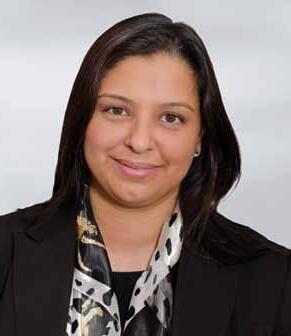
87 R esea RC h UNIT s
Mo L ecu L ar patho G e NI c M I cro BI o L o GY r esearch Group
Prof Sehaam Khan khans@cput.ac.za
matshat@cput.ac.za
c ar DI o M eta B o LI c h ea Lth r esearch uNI t
t he mission of the c ardiometabolic h ealth r esearch u nit is to create an environment for collaborative solutions to better understand the underlying reasons for the increase in diabetes and cardiovascular diseases, with the goal of improving cardiometabolic health in s outh a frica and beyond.
In this unit, the research cluster employs an integrated research programme focusing on obesity, cardiovascular risk, metabolic syndrome, chronic kidney diseases, and diabetes. t he unit strives to accelerate research advances by employing innovative, multidisciplinary intra- and interinstitutional collaborative approaches aimed at improving cardiometabolic health through translation to healthy lifestyles, early diagnosis, and costeffective prevention and management of these diseases. Much of the group’s work comprises community-based studies, specifically c ape town’s Bellville s outh.
t he research unit is involved in studies including periodontal disease, immune activation, hepatic steatosis, vitamin D deficiency and insufficiency, pollution, and genetic and epigenetic novel risk factors for cardiometabolic traits in mixed ancestry s outh a fricans, funded by the s outh a frican Medical r esearch c ouncil ( sa M rc ) Flagship, N r F and cput.
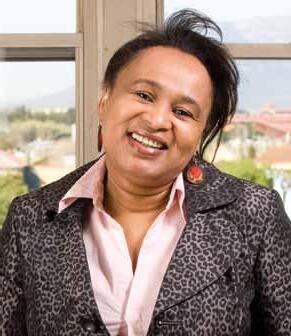
the cardiometabolic health research unit is a research facility which includes infrastructure such as a laboratory, rooms for clinical examinations and oral health assessments of participants, and work space for research fellows and graduate students. the unit provides researchers with much needed characterised cohorts and biobanks to carry out novel and technologically advanced research.
our research is broad, spanning epidemiology to discovery-based laboratory science. Much of the work is interdisciplinary, integrating with the following research entities: Non-communicable Diseases research unit, saMrc; Department of pathology, Department Interdisciplinary health sciences, su; Department of Dentistry, uWc; Non-communicable Diseases research unit, saMrc; Department of pathology, su; and the south african National Bioinformatics Institute.
International collaborations include: centre for cardiovascular Genetics, British heart Foundation Laboratories; Institute of cardiovascular science, university college London; and the Department of pathology and Molecular Medicine, McMaster university, canada.
our major achievements during 2016 include the graduation of two doctoral and two master’s fellows, and also the publication of ten manuscripts.
Facu Lt Y o F hea Lth & W e LLN ess sc I e N ces 88 R esea RC h UNIT s
Prof Tandi Matsha
Prof Jeanine Marnewick
oXID at IV e s tress r esearch c e N tre ( osrc )
the main aim of the oxidative stress research centre is to contribute to existing knowledge regarding the role of oxidative stress in health and disease development and to devise innovative strategies for the prevention of these important diseases with an ultimate outcome of improving our population’s health status. 2016 marks our third year as part of cput’s new research institute, IBMB, which has proved to be a very fruitful partnership with access to new research expertise, collaborations and international exposure for our scientists and students.
osrc research NIche areas
Oxidative stress in health and Disease:
Leader Prof JL Marnewick
our research focus is on elucidating the mechanisms involved in the development of certain lifestyle diseases where oxidative stress plays a role and using the indigenous herbal tea, rooibos, as an innovative prevention strategy. In recognition of our research expertise, we signed an inter-institutional agreement with the university of Kaposvár (hungary). prof Jeanine Marnewick and Dr Liana van der Westhuizen were subsequently invited to serve as expert advisors on another university of Kaposvár project. We hosted four international students from Bergen university college (Norway), involved with research projects clarifying
the role of rooibos and honeybush in skin health. Dr ajuwon, postdoctoral fellow, won the Young Investigator award for his poster at the oxygen club of california World congress (usa). additional outputs included two invited national conference presentations, as well as one national and six international conference presentations. as part of research uptake, prof Marnewick featured in a special edition of science stars, ‘properties of rooibos: More than just tea’, september–october produced by roswika Media (www.sciencestars.co.za). a highlight for our staff and students in 2016 included an excursion to rooibos Ltd, the biggest producer of rooibos, to provide us with better insights into the production stages and testing of the final rooibos products.
Biomarker Development:
Leader Dr Liana van der Westhuizen
the current focus of this Niche area is integrated with the ‘production of a rooibos-based product with enhanced antioxidant capacity’ and the ‘Bioavailability’ projects within the cput prestigious projects. Dr Van der Westhuizen successfully completed the Good clinical practice for the research team course of the Department of Bioethics at stellenbosch university in preparation for the rooibos intervention study earmarked for 2017. this group leader was elected as cochairperson of the Institutional animal research ethics committee and she also served on the advisory panel
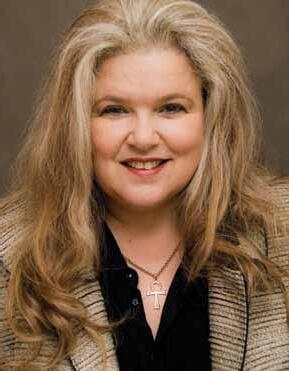
89 R esea RC h UNIT s
marnewickj@cput.ac.za www.cput.ac.za/academic/faculties/ healthwellness/research/oxidative
of the World academy of sciences and post-Doctoral scholarship Biochemistry programme for the NrF and reviewed NrF rating and thuthuka applications. the group was represented at an international conference in Vienna, austria.
Phytomedicine and Phytochemistry:
Leader Prof OO Oguntibeju
the focus of this research group is medicinal plants and diabetes. It has contributed significantly to knowledge generation, research growth and capacity building at cput the role of medicinal plants in the treatment and management of diabetes is important as diabetes has a rapidly increasing prevalence globally and remains one of the most serious and challenging health problems in africa. the high cost and side effects arising from the use of prescribed drugs are of major concern and prompted the exploration of Garcinia kola, Moringa species and other plants for their antidiabetic properties. the group recorded eight scientific publications and three conference presentations in 2016. one master’s student will graduate in March 2017, and one doctoral student has submitted her doctoral thesis for examination. In 2016, prof oguntibeju was admitted as Fellow of the american college of Nutrition in recognition of his contribution to biomedical research. to enhance its research activities, the group received r1.34 million from the NrF in 2016.
experimental Biology:
Leader Dr Dirk Bester
Focused on cardiovascular health, research studies involve mostly dietary supplementation of potential medicinal plants (red palm oil, buriti oil, rooibos and kolaviron) using an experimental animal model, then
measuring cardiac function and biochemistry. In 2016 considerable attention was given to developing local collaborations, with three students from stellenbosch university’s Department of physiological sciences working on the effects of sugar-supplemented diets in a rat model doing oxidative stress analysis at the osrc and another conducting working heart perfusion experiments in our laboratories, determining if ghrelin supplementation may ameliorate the harmful cardiovascular effects of doxorubicin treatment. experimental work applying rooibos extracts to aortas in an organ bath to measure their potential to relieve endothelial dysfunction in obese rats was also completed. this study was performed in conjunction with stellenbosch university’s Department of Medical physiology.

Facu Lt Y o F hea Lth & W e LLN ess sc I e N ces 90 R esea RC h UNIT s

Fac ULt Y o F I n F or M at I cs & D es IG n
In a period of increased pressure across the academic programme, the Faculty of Informatics & Design has managed to show a steady improvement in its total research activity. We have overcome obstacles such as the lack of a conducive environment for research, caused by student unrest, insufficient infrastructure and disparate spaces. Despite some improvement in this field we are still embroiled in a struggle of priorities regarding the balance between teaching and learning and research. Insufficient administrative and financial
Dean’s report prof Johannes cronjé
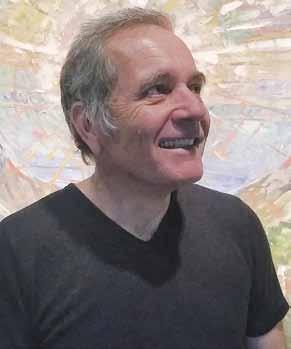
support has led to great pressure on over-extended researchers and supervisors. Furthermore a prevailing culture of working in silos, coupled to systems that are not integrated, has made the research journey difficult.
Nevertheless the faculty has succeeded on a number of fronts. We have seen a significant improvement in the production of peerreviewed conference papers and journal articles eligible for Dhet subsidy. the ratio of subsidised versus non-subsidised research activity is showing a steady increase. We have also had a number of successful recipients of confcom funding as well as funding for staff to complete their doctoral studies.
our national and international collaborations have been substantially consolidated by agreements with universities in Finland, Norway, Germany, Denmark, the uK, Namibia and Ghana.
the faculty is still the most productive per capita producer of postgraduate students at the university, which is largely thanks to numerous support activities such as summer, winter, spring and autumn schools. We also run a number of supervisor-led cohort support
sessions on most weekdays. thirty-three of our students completed their Mtech degrees this year. Dtech degrees were awarded to two of our students.
on the research transfer and Innovation front, we run a number of successful incubators. after many years of dedication and hard work, we have managed to open our ‘Design Garage’ outlet for students and alumni to sell their products.
as such, I believe that the faculty is well positioned to support the research and innovation initiatives of the university.
Facu Lt Y o F INF or M at I cs & D es IGN 92
In a period of increased pressure across the academic programme, the Faculty of Informatics & Design has managed to show a steady improvement in its total research activity.
research output
Pinterest makes learning fun
Lecturers Veronica Barnes and Vikki du Preez are tapping into technology to make their classes fun, interactive and appealing to their technologically savvy FID students. They are using Pinterest, a widely popular social network. ‘Pinterest is a great tool for encouraging collaboration. It is also great because our industrial design students are wired into digital and visual things,’ says Veronica Barnes, who was one of the presenters at the 2016 Teaching and Learning with Technology Day, hosted by CPUT’s KITS.
Pinterest is a virtual scrapbook or pinboard, allowing users to collect photos and videos from online sources

and store them on boards. It also allows users to share one another’s visual material. The course requires students to work with idea boards, which traditionally were static boards onto which students pasted images, diagrams or other items. With the introduction of Pinterest, the traditional idea board makes way for a digital idea board that is easily accessible, free and can be tailored at any time. Pinterest also allows for easy, collaborative resource building. ‘Students can learn and share, and their work stays behind for future reference.’
Pinterest is also a good tool for lesson planning, as it allows lecturers to collect ideas and material for future lessons or assignments and store them on secret boards that cannot be viewed by other users until they are released.
To make use of this technology as an educational tool, visit www.pinterest.com
93
FuNDING
2016 puBLIcatIoNs suBMItteD to the Dhet (IN MaY 2017) uNIts Journal articles (audited) 21.49 Book chapters (submitted) 4.14 conference proceedings (submitted) 5.43 Total 31.06 conference funding (confcom) 160 796 National research Foundation (NrF) 1 422 002 research & Innovation Fund for teaching & Learning (rIFtaL) 110 000 university research Funding (urF) 166 010 Total 1 858 808
pinterest
educational
can be used as an
tool
Prof Melius Weideman weidemanm@cput.ac.za
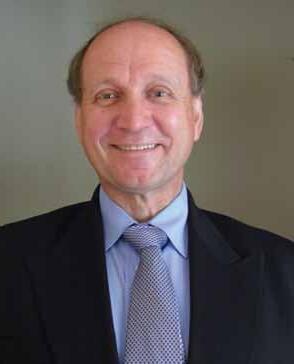
research UnIts
We B s I te attr IB utes r esearch c e N tre (Warc )
Warc does research in the knowledge economy, producing outputs which guide industry on decisions relating to search engines, internet marketing and website design. Warc focused on two fronts during 2016. Firstly, we launched an in-depth investigation into the measurement of the usability of website interfaces. secondly, we started zooming in on the semantic annotation through data serialisation, in an attempt to design a search engine optimisation strategy for voice search on smartphones.
WeBsIte usaBILItY
the importance of designing easy-to-use (the human audience) and easy-to-index (the search engine crawler audience) website interfaces cannot be overemphasised. If the purpose of the website is to sell a product, brand or service, this becomes even more important. If users find a website difficult to use, they have so many other options to turn to that they often simply leave the website to find another one which is easier to interact with. this could lead to major financial losses for the company behind the website.
research started in 2012 with a large user-testing session, and was concluded in 2016, in the shape of a published study on the usability of cape town-based hotel websites – specifically the booking interface. some surprising results indicated that many users found these interfaces reasonably easy to use, in contrast to the literature indicating that the opposite is often the case. suggestions were provided on how to improve usability.
seo strateGY
achieving top rankings on search engine result pages is not negotiable for any e-commerce concern, since these rankings determine income in most cases. these companies often spend large amounts of money on achieving and maintaining high rankings. Furthermore, search engines often update their algorithms in sympathy with industry trends, and these changes can negatively impact rankings overnight. It is therefore imperative that ongoing research be done to determine the best way for these companies to apply their marketing funds, using search engine
Facu Lt Y o F INF or M at I cs & D es IGN 94 R esea RC h UNIT s
optimisation (seo) and/or pay-per-click (ppc) to ensure exposure to the search engines.

seo involves adjustments made to websites in such a way that search engine crawlers will find enough relevant ‘signals’ on each webpage to lead prospective clients to this website. however, search engines change their algorithms all the time, requiring website owners to update the seo of their websites. also, millions of new websites are added to the Internet daily, resulting in the competition of any given e-commerce website also changing, possibly causing the rankings to drop.
the continuous growth of the mobile industry, with more and more users doing their internet work through these devices, necessitated research into the way mobile websites are designed. hand-in-hand with the mobile explosion goes voice search. Many users are using the voice-to-text conversion software on their phones to search for information, since this obviates the need for using a touch keyboard. this further complicates the design of mobile websites. this study will propose an approach to mobile website design which will ensure efficient voice search retrieval.
a set of free internet-based tools to test website usability and visibility is available on Warc’s website at: http://web-visibility.co.za/website-visibilitymeasurement-tools-seo/
also, a full digital library with all Warc’s research outputs is available on Warc’s website at: http://webvisibility.co.za/website-visibility-digital-library-seo/

95 R esea RC h UNIT s
prof Weideman at Yahoo!’s headquarters in silicon Valley, during a recent visit
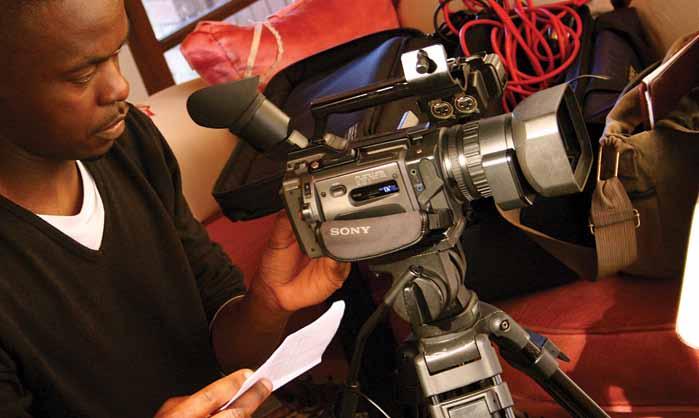
Facu Lt Y o F INF or M at I cs & D es IGN 96 R esea RC h UNIT s
U n I ts an D centres

WIDeNING success IN hIGher eDucatIoN – a ‘BrItIsh couNcIL researcher LINKs’ WorKshop
WIsh is a development initiative funded by the British council and the NrF. early career researchers, educators, practitioners, employers and policymakers from the uK and south africa are brought together to develop realisable projects that increase the quality, range and opportunities for diverse students in, and beyond, the creative industries. WIsh is managed by cput and the university of east London and aims to:
• widen access to higher education

• increase participation within higher education
• ensure student success and enhance employability
NatIoNaLLY FuNDeD proJects
a multidimensional and integrated exploration of inequalities in south african higher education: effects on students
this multi-institutional project investigates how inequalities intersect and feed on one another to adversely affect students from marginalised groups. It further examines how inequalities manifest themselves among students from various backgrounds (race, class, gender, ethnicity), as well as how heIs perpetuate inequalities among students by producing and reproducing them. the research questions that this
project purports to answer are: What are manifestations of inequalities among students in the selected heIs? how do these inequalities intersect and feed on one another? What intellectual, academic and psychological effects do they have on students from different (racial, cultural, ethnic, geographical, socioeconomic and gender) backgrounds? What efforts do heIs make to address and redress these inequalities and are these strategies coherent and integrated to yield sustainable improvements to students’ lives?
INstItutIoNaLLY FuNDeD proJects
Design thinking for academic staff development there is a trend towards design thinking and learning design both locally and abroad. Design thinking as a methodology for developing novel solutions to complex real-world problems is gaining popularity in various domains. For many years design thinking provided a useful approach to innovation in business, health, software development and engineering sectors, but only recently is it gaining ground in the context of higher education innovation. Learning design implies that learning innovation starts with ‘wicked’ problems that need holistically designed interventions. this project is aimed at designing and evaluating an academic staff intervention on blended learning course design applying and promoting design thinking principles among academics.
u NI ts a ND ce N tres 98
ce
e D ucat I o N a L tech N o L o GY
N tre F or INN o Vat IV e
Mr Izak Smit smiti@cput.ac.za
Towards flexible learning at CPUT
Based on a changing student population, the demand for flexible, part-time course offerings is increasing globally and nationally. recently, cput introduced two flexible learning courses which offer an online component to broaden access, namely the blended part-time Btech: architectural technology and the online National Diploma: real estate. these two courses will be the focus of this study, aimed at identifying the main learning design principles common to both. any tensions and contradictions will be considered to identify areas for improvement. In addition, these principles may be employed to design future flexible learning interventions.
Open educational resources
educational resources are shared freely under various common and open licensing formats. this allows students the opportunity to obtain quality educational resources to assist in the learning process. this project deals with the academic skills development of lecturers to produce these resources that will be hosted internally at cput.
Mobile phones in the classroom

world they are moving towards. We looked for a fun way to help make this transition and help students use their social and cultural capital to assist in learning and better understand business concepts,’ she says. ‘We also wanted students to become more deeply engaged in their learning.’
Martin identified a free mobile app, called Com-Phone Story Maker with the help of Dr Daniela Gachago, from the Centre for e-Learning, which allows students to use their phones to combine photographs, music and voice narration as well as text to create a short video. The completed video can be saved or uploaded to Google Drive. As a precursor to the project, she spent the first term lecturing on various business terms and concepts. Students were then asked to bring the terms to life by compiling a video that focused on a business owner in their community. To familiarise the students with the mobile app, Ms Martin first asked them each to create a video about themselves.
100 000
120 000
Mobile phones are usually banned in teaching spaces, but in Widaad Martin’s classroom, this technology is changing the ways students learn. Martin, who lectures Financial Accounting I to students in the extended curriculum programme in the National Higher Certificate in Accountancy, recently shared her success with cellphones as an educational tool at the 2016 Teaching and Learning with Technology Day, hosted by CPUT’s KITS.
As the majority of students own cellphones, she saw the opportunity to link her curriculum with mobile technology. ‘You have to connect their world to the
The initiative has had many spinoffs. It has boosted their confidence, improved their understanding of terms and concepts, assisted with articulation and team work, and helped make certain implicit knowledge explicit. It also has contributed to the development of new technological skills and allowed them to network in their communities. ‘In addition, by using Google Drive, they were free to view and learn from more than sixty videos, which from a knowledge management perspective can be used for future students and can be part of the current students’ portfolio,’ according to Martin.
* To make use of this technology as an educational tool, go to https://www.google.com/drive/
99
National research Foundation (NrF)
research & Innovation Fund for teahing & Learning (rIFtaL)
Total
FuNDING
20 000
accountancy students are using their cellphones to develop their skills
Teaching with Technology

As more lecturers embrace technology as an educational tool, the face of teaching and learning at CPUT is changing. From making use of popular social networks such as Facebook, to implementing the use of tablets in classroom activities, lecturers are tapping into technology to teach students. Their efforts were showcased at the 2016 Teaching and Learning with Technology Day in May, hosted by KITS, a division spearheading the introduction of new technology tools into the CPUT curriculum.
This move towards incorporating technology into everyday activities at CPUT has been welcomed by Prof Louis Fourie, DVC: KITS. Prof Fourie, one of the presenters at the event, says the institution is moving towards becoming a ‘smart university’, where teaching, research, business and communication activities are

supported, facilitated, integrated and enhanced. ‘A smart university uses technology to the full extent to modernise and enhance the teaching and learning experience.’ To achieve this goal, Prof Fourie says a ‘smart university’ must advocate the concept of BYOD (bring your own device) thus providing students with access to a wide range of online educational resources. He also spoke of the rollout of online programmes, which offer flexible and costeffective study options for students who cannot relocate or who are employed full-time. ‘Technology is changing the way we interact with students,’ he says. ‘We have to prepare for change.’
Education consultant Ms Barbara Jones, who presented a paper at the conference, says there is a move towards online learning and teaching options in SA. Referring to the White Paper for Post-School Education and Training, she says it advocates education programmes that are ‘responsive to students’ needs and realities, which take into account their varying life and work contexts, rather than requiring them to attend daily classes at fixed times and central venues’. However, for universities to achieve success in online education, they must explore changes in the curriculum and its delivery, together with new technology. ‘It’s not just enough to put technology in place – flexible shifts must be made in the entire way the university operates.’
u NI ts a ND ce N tres 100
cput lecturers embrace new educational tools
ce N tre F or post G ra D uate stu DI es
the centre for postgraduate studies staff members are active in their own research while still playing a supporting role to postgraduate students and postdoctoral fellows.
Research interests of staff members include:
• Dr L Bingo: Evaluation of practices in human resource management
• Prof M McPherson: Condensed matter physics, solar thermal energy storage, and fuel cell technology
• Dr C Uys: Applied statistics and ICTs for development
please see page 14 of this report for a more comprehensive message from prof Mcpherson.
FuNDING
postGraDuate DeGree oBtaINeD
BY a staFF MeMBer
PhD: Industrial Psychology
NWu
Bingo lZ
an evaluation of human resource management practices at tertiary institutions in the Western cape province
research output

101
2016 puBLIcatIoNs suBMItteD to the Dhet (IN MaY 2017) uNIts Journal articles (audited) 0.5 National research Foundation (NrF) 40 000 Prof Michael McPherson mcphersonm@cput.ac.za
ce N tre F or Water supp LY & sa NI tat I o N research ( c W sr )
The Centre for Water supply & sanitation Research is the hub of CPUT’s water and sanitation network for the:
• identification and establishment of water-related niche activities/units/centres based on regional and national priorities
• facilitation and execution of interdisciplinary projects which generate research, income and graduate opportunities
• development and maintenance of partnerships on behalf of cput with relevant stakeholders in the water sector regionally, nationally and internationally
current niche areas are environment and Water sustainability, Water and sanitation services, and Water and agriculture.
‘living laB’ projects: Breede Gouritz Catchment management agency Partnership

• Hosted IWRM Partnerships in Action Workshop in Goudini with BGcMa as part of Water Week in March
• Completed development of a proposal for the continued support of the ‘Living LaB’ concept with Breede–Gouritz catchment Management agency for continued support of the Integrated Water resource Management
• Completed and approved project schedule and budget for 2016/17 and fieldwork for five reports
curreNt research coMMIssIoNs
WRC 2208:
• An investigation into the social, institutional and economic implications of reusing reclaimed wastewater for domestic applications in south africa (Beaufort West, overstrand and ethekwini)
• Completed fieldwork and draft guideline ‘reclaimed Water in south africa: Municipal Guidelines for addressing public resistance to potable applications’. tested utility guideline with practitioners in case study sites
• C Muanda presented project findings at ‘Dialogue on Water reclamation for potable use: Why communication & public participation Matters’ in George as part of National Wrc dialogue series
WRC 2310 approaches for emerging Farmer Participation in Water Resource management: The Case of the Breede–Overberg Catchment management agency (BOCma), Western Cape:
• Completed research and Report 5: Opportunities for engaging emerging farmers to participate in water resource management and water allocation issues and related capacity building opportunities
• Submitted journal article, ‘Insights into indigenous knowledge strategies for coping and adapting to drought in agriculture: a Karoo scenario’ to Journal of a rid e nvironments
u NI ts a ND ce N tres 102
Prof Alvin Lagardien lagardiena@cput.ac.za
• B Ncube presented a paper titled ‘Complexities of water allocation to smallholder farmers in the Breede–Gouritz c atchment Management a rea, Western c ape, s outh a frica’ at the 2016 WI sa Biennial c onference in Durban
• B Ncube presented project findings at WRC Khuluma s izwe Dialogue: ‘ c elebrating o ur p recious h eritage, o ur Water o ur c ulture’
WRC 2530: Water allocation for productive use –policy and implementation: a case study of the black emerging farmers in the Breede–Gouritz Catchment management area, Western Cape, south africa
• Completed research and Report 1: ‘Access to productive water – the bureaucracy, the legislative framework, water reform and implementation and challenges experienced by emerging farmers’
WRC 2602: Review of the current knowledge of drought and drought occurrence in s outh a frica
• Completed research and Report 1: ‘A review of the current knowledge of drought and drought occurrence in s outh a frica, including the review of current drought policies and strategies, national and provincial response strategies’
• Completed research and Report 2: ‘Coping and adaptation strategies for agricultural water use during drought periods’
t here was collaboration on W rc projects with the B t B research team.
a manda Gcanga obtained funding as part of the s outhern a frican s ystems a nalysis c entre project for her p hD. a Gcanga and B Ncube visited the
International Institute of a pplied s ystems a nalysis in a ustria as part of the sasac –N r F delegation.
NeW research coMMIssIoNs
Wrc proposal Number 1004837: ‘Improving smallholder farmer livelihoods through developing strategies to cope and adapt during drought periods in south africa’ was accepted for funding (2017–2020).
INcoMe 2016
capacItY BuILDING aND traINING
a variety of capacity-building workshops were completed during 2016.
103
FuNDING conference funding (confcom) 18 161
cLaIM/INVoIce proJect coMpaNY/INstItutIoN raNDs Wrc 65 2310 Wrc 180 000 Wrc 66 2329 Wrc 200 000 Wrc 67 2310 Wrc 120 000 Wrc 68 7153 Wrc 119 500 Wrc 69 7154 Wrc 200 000 Wrc 70 2310 Wrc 203 000 Wrc 71 2084 Wrc 26 103 Wrc 72 2208 Wrc 164 000 Wrc 73 7153 Wrc 278 833 Wrc 74 7154 Wrc 210 000 Wrc 75 2530 Wrc 80 000 Wrc 76 7154 Wrc 256 000 BG001 project 1 BGcMa 10 000 BG002 project 2 BGcMa 50 000 Wrc 77 Dialogue travel Wrc 6 250 Total 2 103 686
Researcher selected for international leadership programme
Amanda Gcanga is a junior researcher and doctoral candidate in the Centre for Water Supply & Sanitation Research. She was selected by the US Embassy as a principal candidate in the International Visitor Leadership Program titled ‘Our Planet: Sustainable Agriculture and Climate Change’.

This programme is designed for government officials, agricultural engineers, academics, and representatives of NGOs engaged in developing climate change mitigation programmes and policies for natural resources management and food production. It included meetings and visits relevant to her professional interests in several cities and states. Discussions and site visits focused on the potential political, social, and economic implications of climate change on agriculture, forestry and water. Participants also examined renewable energy sources and emerging climate smart business measures.
Funding boost for collaborative water project
A funding boost of R2.5 million further strengthened a collaborative research and training project addressing water challenges facing SA. Over the past few years, CPUT’s CWSR and UWC’s Institute for Water Studies have collaborated with the Breede–Gouritz Catchment Management Agency on an Integrated Water Resource Management project.

The project commenced in 2011 with a four-year grant of €1.5 million from Nuffic, a Netherlandsbased capacity development organisation. With the grant period at an end, the Board of BGCMA approved funding to sustain the research initiatives for the next three years. Director of BGCMA, Mr Phakamani Buthelezi, says the funding is in line with the organisation’s strategic plan that advocates collaboration with academic and research institutions that can contribute towards innovative solutions to water problems as well as capacity building.
Director of CWSR, Prof Alvin Lagardien, says the first phase of funding was used to build the foundation of the project and to forge meaningful collaborations and partnerships. Collaborative ventures are an ‘efficient way of taking care of important research and development challenges... The collaboration has demonstrated value’.
To date, a remote sensing and GIS laboratory has been established at UWC, and a water quality laboratory at CPUT.
The second phase of the project will focus and drive collaboration in the niche areas of catchment studies, water resource assessments, environment, water and sustainability, water and agriculture as well as water and South African sanitation services. UWC Assistant Dean of the Faculty of Sciences, Prof David Holdgate, commended the project participants, stating their area of research addresses issues that are impacting the country.
u NI ts a ND ce N tres 104
amanda Gcanga selected to participate in the us International Visitor Leadership program
Dr chris Nhlapo cput), Mr phakamani Buthelezi (BGcMa) and prof David holdgate (uWc) signing a funding agreement to boost water research
cput LIB rar I es
2016 was yet another eventful and successful year in supporting research and innovation, with cput Libraries focusing on four key areas: research Data Management (rDM), open access, citation analysis, and process improvement.
MaJor achIeVeMeNts oF 2016
• Contributions were made towards the Western cape Data Intensive research project which aims to establish a Western cape Data Intensive research Facility, as part of the DtI’s National Integrated cyberinfrastructure system. cput Libraries has been recognised for taking a lead in rDM activities and given a key role in developing policies and guidelines for the project as well as coordinating the training of librarians, It personnel and scientists who will be working on the project.
• The CPUT Data Management Plan tool has been developed to help researchers specify what data will be created and how, and outline how data will be shared and preserved, noting any access restrictions that may need to be applied.

• The Berlin Declaration was signed, committing cput to supporting open access and paving the way for further development of various open access and open data projects, with cput Libraries at the forefront.
• A total of 403 citation analysis reports were compiled, including training sessions offered to researchers for ad hominem promotion and other reasons.
• Improvement was made to the Higher Degrees committee process for inclusion in NrF rDM requirements and the process was approved by senate.
• Staff members published three articles in DHETaccredited journals and made 15 conference presentations, at both local and international venues.
research output
2016 puBLIcatIoNs suBMItteD to the Dhet (IN MaY 2017)
105
FuNDING conference funding (confcom) 28 930 research & Innovation Fund for teaching & Learning (rIFtaL) 40 000 Total 68 930
uNIts Journal articles (audited) 0.83
Dr Elisha Chiware chiwaree@cput.ac.za
CPUT signs Berlin Declaration on Open Access to Sciences and Humanities

CPUT has joined over 300 institutions worldwide that support the Berlin Declaration on Open Access to Sciences and Humanities. By signing the declaration, which seeks to make scientific research more open and accessible for human development, CPUT pledges to:
• encourage researchers to publish in line with the principles of open access;
• encourage holders of cultural heritage to support open access by providing resources on the Internet;
• encourage senior academics to develop ways to evaluate open access contributions and online journals in order to maintain the standards of quality assurance and good scientific practice as well as be in a position to provide input on the quality of publications posted by researchers.
At the signing ceremony, Dr Nevhutalu emphasised the importance of Open Science in light of the everincreasing costs university libraries incur in acquiring information. He also emphasised the challenges these libraries face with the newly introduced 14% VAT on electronic resources as well as the poor rand exchange rate. He commended the strides made by
CPUT Libraries to ensure the research community has access to open-access resources.
The DVC: KITS, Prof Louis Fourie, outlined the progress made by the university in making CPUT research outputs more visible through the CPUT Libraries’ digitisation and research data management projects. Over the past last three years, CPUT has taken the lead in SA in building platforms and services for the management of research data, in line with the NRF’s mandate to ensure that funded researchers deposit their outputs in a credible institutional repository.
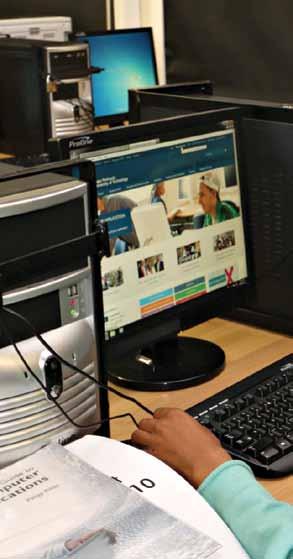
u NI ts a ND ce N tres 106
Dr prins Nevhutalu signs the Berlin Declaration on open access to sciences and humanities in front of members of cput’s executive Management
David Bleazard bleazardd@cput.ac.za

the Department of Institutional planning has an academic planning & Institutional research component and a heMIs component (responsible for the collection and validation of data submitted to the Dhet).
the main functions of the Institutional planning Department are to:
• facilitate the university’s strategic planning and academic planning processes
• facilitate the development of HEQSF-aligned qualifications
• conduct institutional research in support of planning and transformation
• coordinate the university’s HEMIS reporting
• manage the updating of the CPUT academic structure
• provide management information, including responding to ad hoc queries
• promote the standard of data quality within the institution
• maintain the necessary web infrastructure to deliver management information
• provide training to CPUT staff members on department-related matters
• participate in CPUT projects, as required
the vision of the Department of Institutional planning is to be one of the leading decision-support units in higher education.
this vision ties Institutional planning into the broader decision-making and planning processes of the institution. If the department is fulfilling its function effectively, it will be assisting the university’s management and planning processes to deliver.
one key to Institutional planning achieving its vision lies in quality data, namely, collecting and verifying data, and making the data available to end users in a helpful way.
a second key to the department realising its vision is communication. the department tries to respond promptly to internal and external requests for assistance. It strives to make information available to users via the Web in ways that are flexible and meet the changing needs of users.
research output
2016 puBLIcatIoNs suBMItteD to the Dhet (IN MaY 2017) uNIts
107
Journal articles (audited) 1.00 Book chapters (submitted) 1.00 Total 2.00
D epart M e N t o F IN st I tut I o N a L p L a NNING
Prof James Garraway garrawayj@cput.ac.za

the Fundani centre for higher education Development supports research into teaching and learning across the faculties, and a number of cput staff members engaged in their master’s studies (focusing on higher education) are currently supervised by Fundani academics. Fundani staff are sought after as external examiners for master’s and doctoral theses from across south africa, but also as guest speakers at other universities.
Fundani staff support research into higher education through collaboratively teaching with the three Western cape universities on research courses for staff (e.g. on the chec proposal-writing course), as well as through an internal scholarship of teaching programme here at cput
each year approximately r1.2 million is disbursed to faculty members by Fundani to conduct classroom-based research under the DVc for teaching and Learning’s rIFtaL project. the rIFtaL budget was considerably expanded by generous support from the Dhet’s teaching Development Grant. unfortunately, owing to the early closure of the university, many staff were unable to complete their research and their funds were rolled over to 2017. It was also not possible to hold the annual university teaching conference.
Fundani staff conduct their own research into classroom practices, student transitions, enhancing staff development and investigating work-integrated learning, often in collaboration with faculty staff, as is attested by their research outputs. Despite its small size, the unit managed to produce 17 research articles with a total credit value of 6 units in 2016. Fundani was also responsible for organising four writing retreats in 2016. staff are given either structured or unstructured opportunities to develop completed research into potential journal articles. research conducted through Fundani, as well as writing facilitated by the unit, contributes significantly to improving teaching and learning at the university, which ultimately impacts student retention and throughput, as well as contributing to the university’s overall research output.
hIGhLIGhts oF 2016
the annual education association of southern africa conference was held in Kleinmond in February and organised by Fundani’s prof ralarala. eight Fundani staff presented here. Fundani, in conjunction with the three Western cape universities, was also responsible for organising the International consortium for educational Development (IceD) conference, with over 600 delegates from across the globe in cape town in November. this well attended and highly successful
u NI ts a ND ce N tres 108
F
u ND a NI ce N tre F or h IG her e D ucat I o N D e V e L op M e N t
conference focused on issues of social justice in higher education. Dr coleman of Fundani organised the regional extended curriculum symposium, consisting of research papers and practice-sharing sessions. this highly successful symposium was done in association with the national university teaching body, heLtasa
Fundani, again in conjunction with uct and uWc, organised a week-long course on the change Laboratory method for researchers, conducted by Jaakko Virkkunen, professor emeritus of the university of helsinki. the change Laboratory is a method for formative intervention in work activities developed by prof Yrjö engeström and his colleagues in the centre for research on activity, Development and Learning craDLe at the university of helsinki. the method is based on collaboration between researchers and practitioners in an activity. contrary to many methods of intervention in work activities that focus on producing incremental improvements in work practices, the change Laboratory method has been designed to initiate and support a concept-level transformation in an activity (this is a continuation of our work with engeström in 2015).
Fundani is also responsible for the production of the internal teaching and learning journal, paradigms. the 2016 edition was produced with the collaboration of prof arie rip (university of twente) and focused on the concept of ‘Innovation Journeys’ and how these may play out not just in technological but also in social innovation (e.g. in the professional curriculum).
research output

109
2016 puBLIcatIoNs suBMItteD to the Dhet (IN MaY 2017) uNIts Journal articles (audited) 6.59 Book chapters (submitted) 1.00 conference proceedings (submitted) 0.5 Total 8.09
conference funding (confcom) 105 764 National research Foundation (NrF) 118 000 research & Innovation Fund for teaching & Learning (rIFtaL) 485 000 university research Funding (urF) 30 000 Total 738 764
FuNDING
h IV/ a ID s u NI t
hIGhLIGhts oF 2016
CPUT quilt raised its flag at the 21st International aids Conference in Durban a proud moment for cput when its quilt was selected among many to feature in the south african National aids council’s special edition of ‘In our hands: south africans share their journey of hope’. the quilt represented its hIV-related programmes with a key message: ‘Make Wise choices’.
Peer educators tackled the ‘Blesser’ phenomenon by storm using expertise from within the institution, a short Youtube clip was developed to address a phenomenon that is considered a huge risk for young women to contract hIV and sexually transmitted infections.

Peer educators represented CPUT at heaIDs and saNaC workshop to keep girls in school students tamara phali and Bongani tyhali joined a heaIDs, saNac, and government department workshop at the Young Women and Girls National campaign to Keep Girls in school.
2016
cput’s student health & Wellness (hIV unit & campus clinic) held its annual Youth Leadership hIV & aids conference in March.

highlights of the conference
- 280 delegates attended; participation from tVet colleges increased significantly compared with last year
- 127 students tested for hIV
- 102 new Facebook page likes in one day
- two students, one from cput and one from False Bay college, won the lucky draw for an all-expenses paid trip to the aids 2016 Global Village in Durban, made possible by Melvynne Mutiriki from the International association of peer educators in higher education

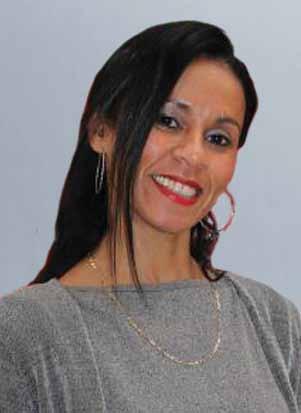
u NI ts a ND ce N tres 110
CPUT Youth leadership hIV & aids Conference
Ms Melanie Marais maraisme@cput.ac.za
hIV Testing and mobile Wellness Unit (mWU) through the MWu being operational, the institution gains the necessary ability needed to reach all of its service sites and provide broad coverage of the hIV/aids and wellness activities among its internal constituencies.
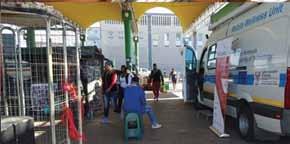
over 6 000 students were tested for hIV. the First things First campaign is one of the most successful programmes of the institution. along with this programme, the institution collaborated with the Department of health and referred more than 30 voluntary medical male circumcisions in 2016. In addition to this, the unit had more than 100 email queries about voluntary medical male circumcision.


hIV Curriculum Integration
the objective was to develop capacity in academics to integrate hIV within the curriculum. It was integrated within the curriculum of office Management technology and Information technology Management in 2016.
Community engagement
the institution through the hIV/aids unit had three community engagement focus areas in 2016. these included neighbouring schools, tVet colleges and public spaces like bus termini. the unit facilitated the training of 11 tVet students as peer educators.

Research
one student graduated with an Mtech titled ‘evaluation of knowledge, attitudes, and behaviour of students at a higher education institution in the Western cape that may put them at potential health risk’.
Conferences attended
21st International aids conference in Durban in July 2016 Youth Leadership hIV & aids conference at cput in June
postGraDuate DeGree oBtaINeD
BY a staFF MeMBer
mPublic health
uWc
Kola s understanding the attitudes, perceptions and practices, towards condom use in preventing hIV infection among university students: a qualitative exploratory study at a tertiary institution, cape Metropole, Western cape
111
hIV counselling and testing at Bellville taxi rank
I N st I tute o F B I o M e DI ca L a ND M I cro BI a L B I otech N o L o GY (IBMB)
IBMB continued to focus its research initiatives to establish cput as a recognised research entity in biotechnology, nationally and internationally, by building research capacity at different levels constituting the focus area in Bio-economy and Biotechnology.
the mycotoxicology Research Group under the leadership of Dr alberts published several papers on mycotoxin reduction methods to safeguard humans from adverse health effects. a research paper by Dr alberts, ‘Biologically based methods for control of fumonisinproducing Fusarium spp. and reduction of the fumonisins’, published in Frontiers in Microbiology, attracted immediate attention internationally. prof Gelderblom and prof shephard, with Dr Burger, were part of a working group for the International agency for research on cancer culminating in a book, Mycotoxin control in Low- and Middle-Income countries. prof shephard served on several international committees in setting safe regulatory mycotoxin levels in food for human consumption in africa. Dr alberts was involved in technical decision making as Maize


trust Mycotoxin research review panel member and coordinator of a Maize trust-funded project on the validation of multi-mycotoxin Lc-Ms analytical methodology for south african analytical laboratories. Dr alberts and Dr rheeder are project leaders and collaborators on three official international collaborative projects with BIoMIN, austria and the united states Department of agriculture. Dr Burger acted as supervisor for students from the centre of science and technology, Khayelitsha, on a project submitted to the cape town eskom expo for Young scientists. the project, entailing the application of a simple washing method to remove mycotoxins from home-grown maize, was awarded silver medals nationally as well as internationally at the 36th Beijing Youth science competition.
prof Marnewick, co-director of IBMB, and Dr Van der Westhuizen, both from the Oxidative stress Research Centre (Faculty of health & Wellness sciences), were instrumental in negotiating an international inter-institutional agreement between cput and Kaposvár university, hungary, for the project ‘research and development for the prevention and
removal of mycotoxin contamination’. It became evident that IBMB plays a leading role, not only in southern africa, but also internationally in research focused on the reduction of mycotoxins in food. IBMB also congratulates Dr abel, Group Leader of the chemoprevention research Group, in obtaining a c2 rating from the NrF based on his groundbreaking research on the fatty acid modulation of cancer development in the liver and colon. this past year also saw the publication of three manuscripts on the chemopreventive properties of the south african herbal tea extracts, rooibos and honeybush, against skin carcinogenesis which drew wide public interest, including from the cancer association of south africa and the south african rooibos council.
the Biocatalysis and Technical Biology Research Group, under the leadership of Dr Le roeshill, established new international (universities in Germany) and national collaborations. the year 2016 also saw the launch of the Biomimicry Water tool, which was developed by Mrs DamaFakir (Golders associates), Mrs Janisch
u NI ts a ND ce N tres 112
Prof Wentzel Gelderblom (Research Chair) gelderblomw@cput.ac.za
Prof J Marnewick (Co-Chair) marnewickj@cput.ac.za
(Biomimicry sa) and Dr Welz. Dr thandeka Mthethwa visited the laboratory of prof Nagao Kobayashi, shinshu university, Japan, related to the research on phthalocyanines and the synthesis of new analogues, the subphthalocyanines. she also hosted two chinese researchers, prof Zhen chen of the Nanjing university and prof Kin shing chan of the chinese university of hong Kong who were accompanied by Dr John Mack from rhodes university at the BtB research Group to discuss potential collaborations on the photochemistry of phthalocyanines and analogue compounds. these activities highlight the BtB research Group’s increased international visibility, and it aims to work on developing these collaborations to enable the exchange of postgraduate students.
International relations with the university of paris-estcréteil in France were strengthened by the visit of a French delegation coordinated by prof thèvenet, associate Vice-president in charge of International relations, prof Moscovici, the Dean of the Faculty of sciences and technology and prof schwell, head of International affairs at the Faculty of sciences and technology, to IBMB during November. the visit initiated discussions related to research collaborations between the two institutions and a study visit for prof Gelderblom was arranged for 2017.
During 2016, IBMB members published 24 journal articles, 12 national conference papers and 11 international conference papers. the institute graduated three master’s and two doctoral students. currently, it has 20 master’s and seven doctoral students registered.
research output

113
2016
uNIts Journal articles (audited) 4.62
conference funding (confcom) 24 986 Industry funding 1 900 906 National research Foundation (NrF) 617 424 university research Funding (urF) 142 787 Total 2 686 103 FuNDING
puBLIcatIoNs suBMItteD to the Dhet (IN MaY 2017)
r esearch Group
the BtB research Group aims to further the development and enhancement of research in related fields of biocatalysis, actinobacteria biology, and the bioremediation and beneficiation of domestic and industrial wastewater. the research emphasis of the BtB research Group allows for a multidisciplinary approach that falls within distinct research niche areas and aims to drive knowledge generation and dissemination in the scarce skills fields of biotechnology and engineering.
BtB research NIche areas
Oxidative enzymes and Biocatalysis:
Leader Dr M Le Roes-Hill

In 2016, to further broaden our current understanding of the natural enzymatic processes involved in the degradation of lignocellulosic materials, a consortium of researchers from the technical university of Munich, Fraunhofer Institute in straubing (Biocat branch), and stuttgart university, as well as national
collaborators (uWc, stellenbosch and rhodes) sourced funds via the NrF sa–Germany bilateral initiative. the funding awarded will allow for student exchanges and the hosting of workshops on the potential use of oxidative enzymes and proteins in driving future biorefineries (2017–2020).
actinobacteria: Leader Dr M Le Roes-Hill the research in this niche area aims to address the lack of information on the biodiversity of actinobacteria in unique south african environments through the use of next generation sequencing. to that effect, a workshop on the processing of genomic and metagenomic data was organised in July. the workshop was facilitated by Dr h Ganeson from Inqaba Biotec. In addition, Ms K Durrell, Dr M Le roes-hill, and Mr M thabi attended ‘the power of Next Generation sequencing in human health and crop science’ workshop hosted by perkinelmer in august. a new collaboration with prof Dr t haberzettl from the university of Jena,
Germany, and prof M Meadows from uct, has allowed for further development of aspects of this research niche area. Furthermore, Dr M Le roes-hill was invited to give a presentation to members of the royal society of south africa in october. her topic was ‘super bugs and their super drugs: the unsung heroes in your backyard’ – a focus on antibiotic resistance and drug discovery from actinobacteria in the 21st century.
Nanotechnology:
Leader Dr T Mthethwa
Nanoparticles are the building blocks for the entire growing field of nanotechnology. the size, shape and surface morphology of nanoparticles are vital and determine the physical, chemical, optical and electronic properties of the nanoparticles and subsequent materials. In 2016, Dr t Mthethwa proposed the development of nanostructured photocatalysts that can absorb in the visible or solar spectrum for solar energy harvesting and cause the destruction of hazardous compounds in
u NI ts a ND ce N tres 114
t he IBMB has three sub-units
B I ocata LY s I s & t ech NI ca L B I o L o GY (B t B)
Marilize Le Roes-Hill leroesm@cput.ac.za
Dr
water. Funding was successfully sourced from the Water research commission (Wrc) of south africa for the development of this research niche area (to commence in 2017). to learn more about this area of research, Dr t Mthethwa visited the laboratory of prof N Kobayashi, shinshu university, Japan in November. the exchange visit was organised as part of a continued collaboration between Dr t Mthethwa and prof t Nyokong of rhodes university.
Wastewater bioremediation and beneficiation: Leader Dr PJ Welz



Domestic and industrial wastewater requires treatment to remove substances that may cause adverse effects if discharged to the environment. Microorganisms can be harnessed to degrade organic wastes, and/or mineralise inorganic wastes, and/or oxidise or reduce inorganic species to less toxic forms. Wastewater beneficiation provides an ideal example of the ‘circular economy’ principle, where valuable ‘wastes’ can be re-captured or used to produce other value-added downstream products. In 2016, Dr pJ Welz was
involved in various workshops and Wrc reference group meetings, and in conjunction with Dr J Burgess (Wrc), she hosted a workshop at the sa sugar Industry premises in Mount edgecombe in November to obtain feedback on the final draft of the NatsurV document on the water practices in the cane sugar industry. In a related NatsurV project, Dr M Le roes-hill and Ms K Durrell hosted a skype meeting with representatives from the textile industry on water use and wastewater management practices in the sa textile industry, also in November. In addition, a Wrc technical report on the integrated bioremediation and beneficiation of bio-based waste streams was published (IsBN 978-1-4312-0770-1). Dr M Le roes-hill was a co-investigator on this collaborative research, where the niche research area of biocatalysis and enzymes was linked with the niche research area of beneficiation and bioremediation of wastewater. Furthermore, Dr pJ Welz secured funding from Winetech (2017–2019) to continue research on the use of on-site biological sand filters in the treatment of winery wastewater on a small wine farm, a research uptake success story.
115
BtB staff and students attending the sasM conference; Kim Durrell (back, left) received the award for the best Msc student oral presenter the BtB research Group
Dr Stefan Abel abels@cput.ac.za
www.cput.ac.za/research/ centres/ibmb
c he M opre V e N t I o N r esearch Group
the main aims of this research group are to understand the mechanisms of carcinogenesis in order to reduce human health risk, and to identify dietary constituents as chemopreventive agents which can prevent/reduce the outcome of disease. the group’s emphasis on chemoprevention research focuses on south african herbal teas, such as rooibos and honeybush, and dietary unsaturated fatty acids, such as omega-3 fatty acids. cellular processes involved in carcinogenesis and chemoprevention are monitored relating to alterations in fatty acid profiles, apoptosis, cell proliferation and cellular oxidative status in suitable physiological fluids or tissues. other research areas include polyunsaturated fatty acids and nutrition-related products. a highlight of the current reporting period was to be involved as chairperson on the organising committee of the national Nutrition congress, held in september at the Lord charles hotel, somerset West, Western cape.
Various activities and collaborations were initiated during 2016. a project was initiated with the Department of Food technology (Faculty of applied sciences, cput) regarding the production and testing of dairy products derived from milk with high conjugated linoleic acid (cLa) content; this includes co-supervision of one Mtech Food technology student, Ms c van schalkwyk. under a student exchange agreement with the university of paris-est-créteil, France, a French student was hosted from april–June as part of the university’s practical training programme. the development of a lipid herbal tea emulsion was initiated as part of a technology development research project.
Dr abel received a c2 rating from the NrF valid from 2017 to 2022. as chair of the cape branch of the Nutrition society, Dr abel organised and hosted a mini-symposium on antioxidants for nutritionists and dieticians which
addressed current controversial issues regarding health benefits and the ethics of dietary supplement marketing. Dr abel also assisted in drafting definitions of total fat and fatty acids for the Directorate Food control of the south african Department of health at the request of Mrs antoinette Booysen, for food-labelling purposes. a postgraduate student, Ms c abrahams, received her phD degree from uWc. Members of this group published four papers in peerreviewed journals.
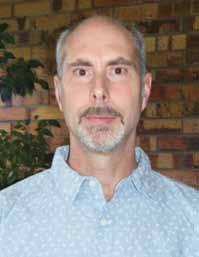
u NI ts a ND ce N tres 116
Dr Hanneke Alberts albertsh@cput.ac.za
M Y coto XI co L o GY r esearch Group
the main thrust of this research group is assessing and reducing exposure of particularly rural subsistence communities to mycotoxins produced by toxigenic food-borne fungi. the aim is to protect populations in south africa from the impact of dietary exposure to carcinogenic mycotoxins.
hIGhLIGhts oF 2016
• Five publications in international peer-reviewed scientific journals as first and/or corresponding authors; co-authors of a book published by the International agency for research on cancer
• Strategic meetings with industry, collaboration partners and international role players:
- the south african Maize trust (meetings with the chair, co-chair and trustees; and participation in a Maize trust showcase Day)
- Meeting with prof p cotty from the usa’s Department of agriculture (usDa) and the university of arizona in tucson
• Committee members and project leaders in expert decision making at national and international levels with regard to regulatory levels of mycotoxins in food, fumonisin risk assessment and analytical methods
• Key role players in CPUT ethical committees and the establishment of the office of research Integrity
• Research grants from external industry sources
mycotoxicology niche projects
1. Monitoring multiple mycotoxins and surveillance of toxigenic food-borne fungi in rural subsistence maize and other foodstuffs in south africa (Dr Jp rheeder):
• Official international collaborations: phylogenetic phenotyping of Fusarium strains (Dr JF
alberts; Dr Jp rheeder; usDa)
• Research uptake was performed during 2016 by Dr JP rheeder and Dr JF alberts by providing consultation concerning fungal contamination and spoilage of dried fruit rolls to the Grassroots Group, Gouda
2. Development and validation of advanced analytical methods (prof Gs shephard; Dr JF alberts; Ms p Mngqawa):
• Prof GS Shephard was involved in expert decision making on an international level with regard to regulatory levels of mycotoxins in food and fumonisin risk assessment: committee meeting of african experts regarding the codex committee on contaminants in Food; invited participation to the 83rd meeting of the Joint Fao/Who expert committee on Food additives to consider various mycotoxins
• Dr JF Alberts was actively involved in technical decision making as Maize trust Mycotoxin research review panel member and coordinator of a Maize trust-funded project on the validation of multi-mycotoxin Lc-Ms methodology for south african analytical laboratories

• Ms P Mngqawa received training on various analytical techniques including quantification of fumonisin mycotoxins in maize by Lc-Ms, and provided training to students on extraction, purification and quantification methods for fumonisins in maize
3. Molecular mechanisms of fumonisin biosynthesis by F. verticillioides (Dr M Lilly):
• Dr M Lilly attended several advanced technical workshops, including the Fusarium Laboratory Workshop held at FaBI, university of pretoria; a Droplet Digital pcr workshop; and a proteomics data analysis workshop held at stellenbosch university
117
4. Food safety in rural south africa: integrated strategies to reduce mycotoxin exposure (Dr h-M Burger):
• Dr H-M Burger collaborated with Pioneer Foods to estimate the maize intakes across south africa using data obtained from a 2011 consumer survey conducted by a collaborative study between sasKo Grain, pioneer Foods and McrG
• She also visited Ms J McPherson, SA Grain Farmer Development paarl, to discuss future collaboration involving strategies to create awareness of mycotoxins and how to reduce exposure
• Two learners from the Centre of Science and technology in Khayelitsha were invited to represent south africa at the 36th Beijing Youth science competition in april. they presented a poster with the title ‘reducing Mycotoxins on home-Grown Maize’, with which they won a silver medal as well as a special award for agricultural Innovation from the chinese agricultural society. the project was supervised by Dr h-M Burger and also video-recorded by reuters television News (Kenya).
5. Biologically based methods for reduction/ detoxification of mycotoxins in maize (Dr JF alberts):
• Official international collaborations:
- Maize kernel wash method (Dr JF alberts; BIoMIN, austria)
- commercial dry milling of maize (Dr JF alberts; pioneer Foods; BIoMIN, austria)
Family violence under the spotlight in counselling study
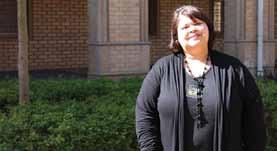
For many teenagers in SA, violence and crime constitute a way of life, having both direct and indirect effects on their psychological, emotional, and physical developmental wellbeing, says Dr Charlene Petersen. A psychologist in the Department of Student Counselling at CPUT, Dr Petersen developed a psycho-educational technique that can be used by psychologists, social workers and therapists to re-construct adolescent identity within the context of family violence, as part of her doctoral research.
Her thesis titled ‘Re-constructing adolescent identity in the context of family violence within the Belhar community of Cape Town’ was borne out of her interest in identity and adolescent development as well as a need to assist teenagers who find themselves in a family violence context. ‘Adolescents growing up in poverty-stricken communities with high unemployment, concomitant dysfunction within the family, lack of infrastructure, and high incidences of crime and violence have limited access to mental health services, and with the increase of violence and crime infiltrating many homes, it is evident that there is a need for restorative therapeutic intervention with adolescents in SA,’ says Dr Petersen.
As part of her study, Dr Petersen worked with a select group of teenagers from the Belhar community in Cape Town. A mixed-methods approach was used in the study, with data obtained through semi-structured individual interviews, psycho-educational intervention and pre-test and post-test assessments (Adolescent Self-Concept Scale). Through the use of psycho-educational tools and projective techniques, Dr Petersen and the teenagers gained insight into their experience of family violence, as well as how they perceive themselves and interact with others, and how they foresee their future selves in a non-violent setting.
‘I asked questions, such as how they felt in the context and
what part of them comes out in that context. I wanted to find out what resources they had within them. It was about empowering them,’ she says. ‘The psycho-educational technique helped them to redefine their perception of family violence and how to react to it.’ Dr Petersen, who worked with each teenager over a period of ten sessions, says it was heartbreaking to hear individuals’ stories; however, it was beneficial for the teenagers, as one of the worst cases turned his life around. ‘It is important to know that in the midst of violence, you don’t have to become like the perpetrator or the victim. You can redefine yourself in the context of family violence through self-empowerment and coping skills.’
Dr Petersen says the study proved the feasibility of the use of psycho-educational intervention and assisted teenagers in their identity-formation process in terms of how they perceive themselves and their interaction with others within the context of family violence. The psycho-educational technique can either be used on its own or with other therapy modalities and ‘therapists working with teenagers can become more informed in how to approach identity issues as a process emergent from a relational field and how to facilitate re-constructing an integrated identity’.
u NI ts a ND ce N tres 118
Dr charlene petersen wants to assist adolescent victims of family violence
stu D e N t cou N se LLING
student counselling provides a comprehensive range of services to registered and prospective students. these services are provided through different levels of engagement, ranging from individual counselling and therapy sessions, to support groups, skills development workshops and wellness promotion. the following are some of the department’s core services: individual counselling and psychotherapy; career development; advocacy and learner support; skills development; peer helper programme; research; community outreach; wellness programme; student welfare; marketing and promotion; professional staff development; and training of interns.
as part of their contact with students, the professional staff members regularly gather information through qualitative and quantitative methods. the results are presented as either informal (annual reports and newsletters) or formal (conference papers, workshops, poster presentations and journal articles) research output. a number of staff members in the department are busy with their phD studies.
Elisabet Smit smite@cput.ac.za

119
conference funding (confcom) 25 554 university research Funding (urF) 74 539 Total 100 093 FuNDING
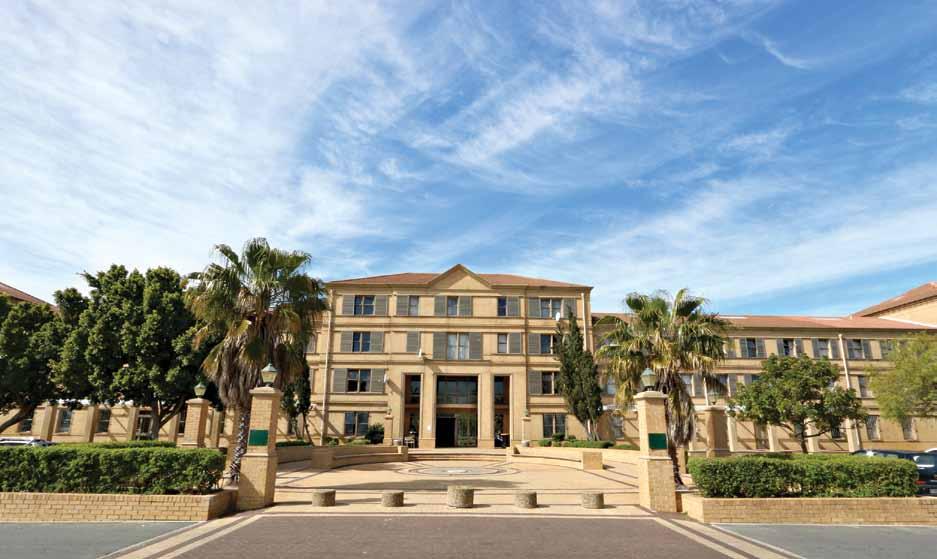
research report 2016 120
DeputY VIce-chaNceLLor: research, techNoLoGY INNoVatIoN & partNershIps
Dr chrIs NhLapo 021 959 6203
021 959 6002
nhlapoc@cput.ac.za
room 228, administration Building, Bellville
Ms saMaNtha pIVaLIZZa-coetZee Secretary 021 959 6242 021 959 6002
pivalizza-coetzees@cput.ac.za
room 228, administration Building, Bellville
DIrector: rtI strateGIc INItIatIVes aND partNershIps
proF reNé peLLIssIer 021 460 3402
pellissierr@cput.ac.za
room 6.18, administration Building, cape town
Ms JeaNINe GorDoN Secretary 021 460 3403
gordonj@cput.ac.za
room 6.18, administration Building, cape town
121
research DI rectorate
proF DINa BurGer Director: Research
021 460 3878 / 021 959 6568 / 6699 burgerd@cput.ac.za
room 2.8, administration Building, cape town old Language Building, Bellville
Ms eDWINa peDro Secretary to the Director 021 460 3128 / 021 959 6568 / 6699 pedroe@cput.ac.za
room 2.8, administration Building, cape town old Language Building, Bellville
Ms saMaNtha coert NRF Intern 021 460 3074 coerts@cput.ac.za
room 2.8, administration Building, cape town
Mr MarVIN La MeYer Research Finance Administrator
021 460 3798 / 021 959 6568 lameyerm@cput.ac.za
room 2.8, administration Building, cape town old Language Building, Bellvillee
Ms puMZa MaKauLa Research Grants Officer 021 460 3895 makaulap@cput.ac.za
room 2.8, administration Building, cape town
Ms hLeNGIWe NZaMa NRF Intern 021 460 3887 nzamah@cput.ac.za
room 2.8, administration Building, cape town
Ms shaFeeQa heNDrIcKs-DraMat Research Finance Administrator
021 460 4241 dramats@cput.ac.za
room 2.8, administration Building, cape town
Ms taNIa hoLMes-Watts Research Grants Manager 021 460 4240 / 021 959 6699 holmes-wattst@cput.ac.za
room 2.8, administration Building, cape town old Language Building, Bellville
Ms Lara sMIth Coordinator: Research Writing, Information & Publications
Ms phathIsWa sWaartBooI Research Finance Administrator
021 460 3328 smithll@cput.ac.za
room 2.8, administration Building, cape town
021 460 3796 swaartbooip@cput.ac.za
room 2.8, administration Building, cape town
Ms LuYoLo KaMatI Coordinator: Research Information Management System (RIMS)
021 460 3843 kamatil@cput.ac.za
room 2.8, administration Building, cape town
research report 2016 122
ce N tre F or post G ra D uate stu DI es
proF MIchaeL McphersoN Director
021 953 8455
021 953 8632
mcphersonm@cput.ac.za
centre for postgraduate studies
New Library Building, Bellville
Dr LILLIaN BINGo Coordinator 021 953 8463 021 953 8632
bingol@cput.ac.za
centre for postgraduate studies
New Library Building, Bellville
Ms ethNe MeNtoor Finance Administrator 021 959 6505 021 953 8632
mentoore@cput.ac.za
centre for postgraduate studies
New Library Building, Bellville
proF Gareth corNWeLL Editor 021 460 3719
cornwelld@cput.ac.za
centre for postgraduate studies
room 3.107, Library Building, cape town
Ms phaphaMa MhLeKWa Evaluation & Monitoring Officer
021 953 8462 021 953 8632
mhlekwap@cput.ac.za
centre for postgraduate studies
New Library Building, Bellville
Dr corrIe uYs
CPGS Statistician 021 460 3258
uysc@cput.ac.za
centre for postgraduate studies
e-Ikamva Building, caledon street, cape town
123
tech N o L o GY tra N s F er & IND ustr I a L LINK a G es
Dr reVeL IVer Director of Technology
Transfer & Industrial Linkages
021 959 6044 iverr@cput.ac.za technology transfer office technology Institute, Bellville
Ms LouIse GroeNeWaLD Contracts Manager 021 959 5895 groenewaldl@cput.ac.za technology transfer office technology Institute, Bellville
Ms haLIMah raBIu
Coordinator: Technology Promotion
021 959 6879 rabiuh@cput.ac.za technology transfer office technology Institute, Bellville
Mr chrIs LoMBarD Business Manager 021 959 5871 lombardc@cput.ac.za technology transfer office technology Institute, Bellville
Ms KareN MartIN
TTO Officer 021 959 6044 martink@cput.ac.za technology transfer office technology Institute, Bellville
Mr MarLIN FraNsMaN
Contracts Manager 021 959 6044 fransmanm@cput.ac.za technology transfer office technology Institute, Bellville
eDItorIaL teaM
Ms Lara sMIth smithll@cput.ac.za
Dr LIZ VaN asWeGeN lizvanas@mweb.co.za
Ms LuYoLo KaMatI kamatl@cput.ac.za
Ms NoMapheLo NDINDWa Assistant TTO Officer 021 959 6044 ndindwan@cput.ac.za technology transfer office technology Institute, Bellville
DesIGN
Ms BrIDGette huNt bahunt@wol.co.za
prINtING
rsa LItho www.rsalitho.co.za
research report 2016 124
ACKNOWLEDGEMENTS
the 2016 research report is published by the CPUT Research Directorate. the editors acknowledge, with thanks, the contributions of:
• The Marketing and Communication Department at CPUT for photographs and items retrieved from the News Archive, including news story writers Kwanele Butana, Lauren Kansley, candes Keating and Jan Weintrob

• Dr André Steenkamp (Faculty of Education), for the Afrikaans translation of the Vice-Chancellor’s message
• Mr Xolani Mavela (Faculty of Education), for the isiXhosa translation of the Vice-Chancellor’s message
• Researchers, faculties, research units and centres
125
creating futures +27 21 959 6767 info@cput.ac.za www.cput.ac.za www.facebook.com/cput.ac.za @cput @wearecput









































































































 Dr
Dr































































